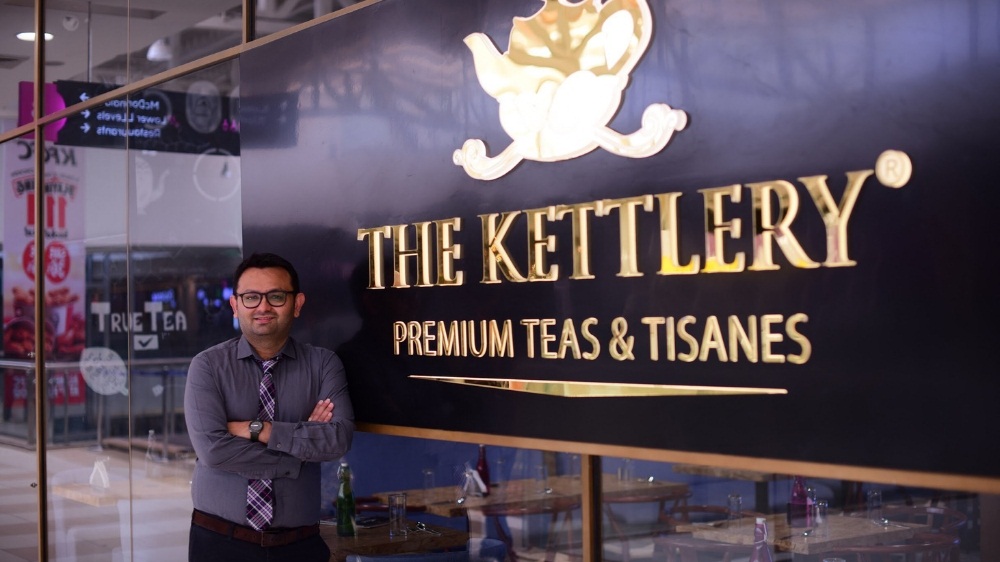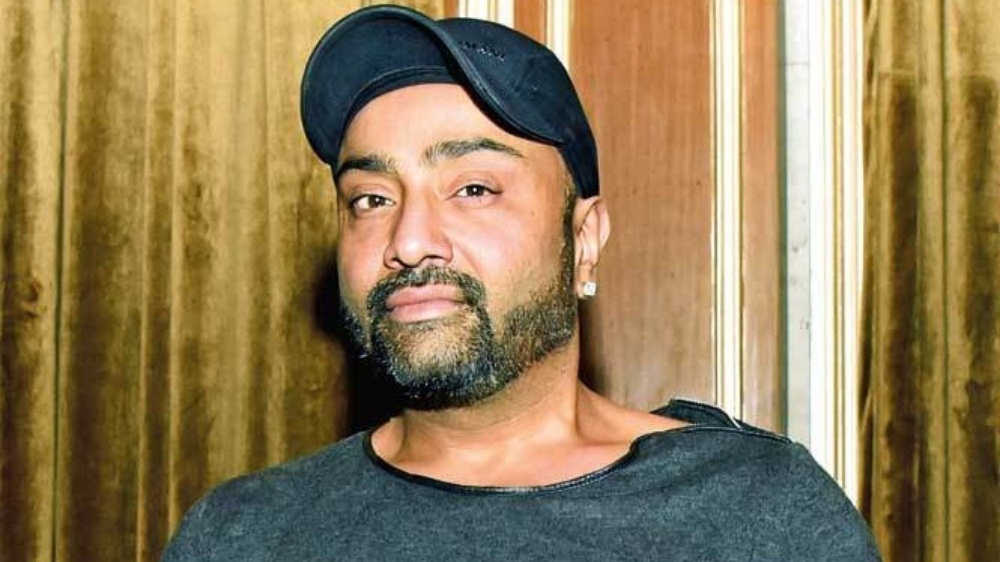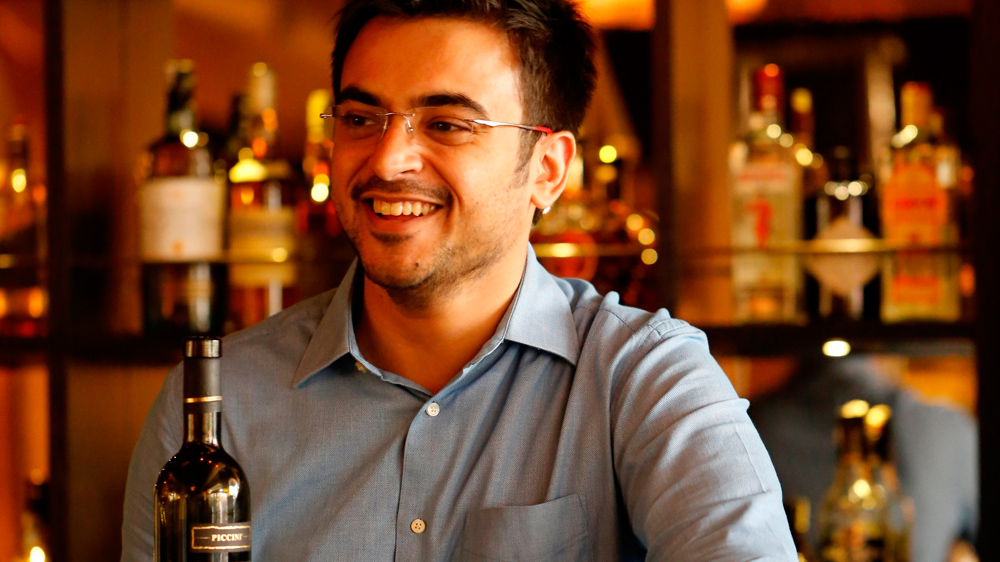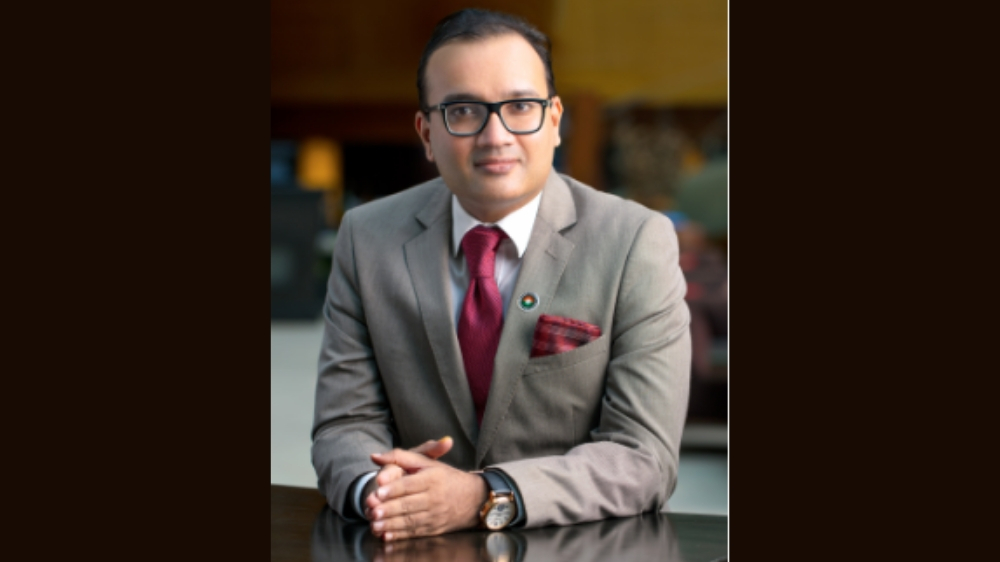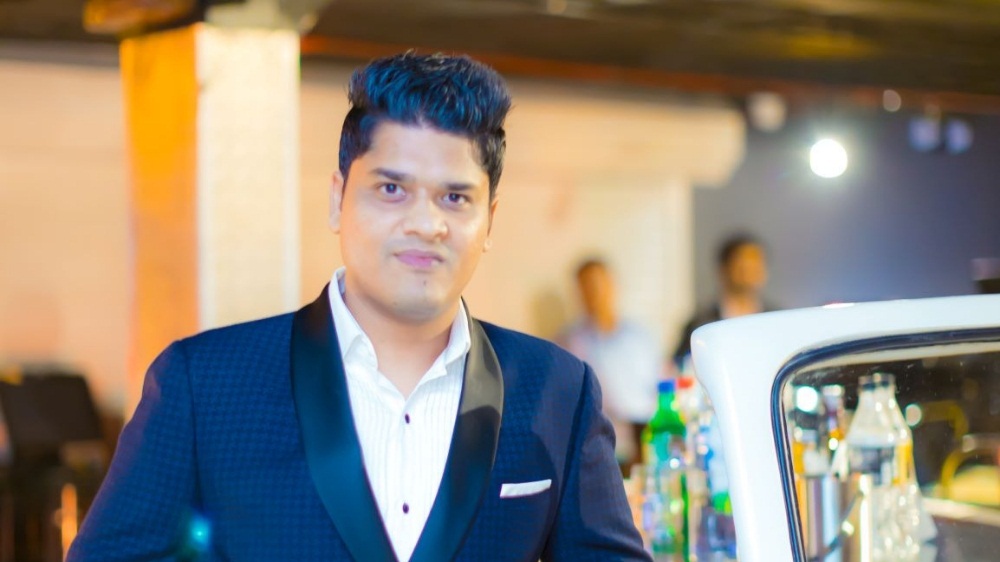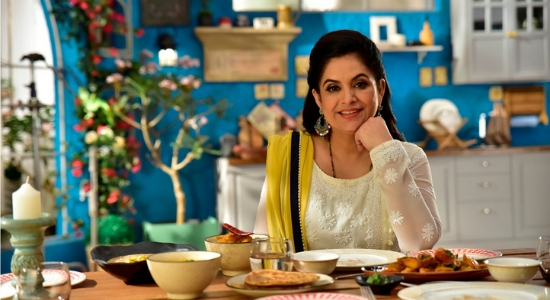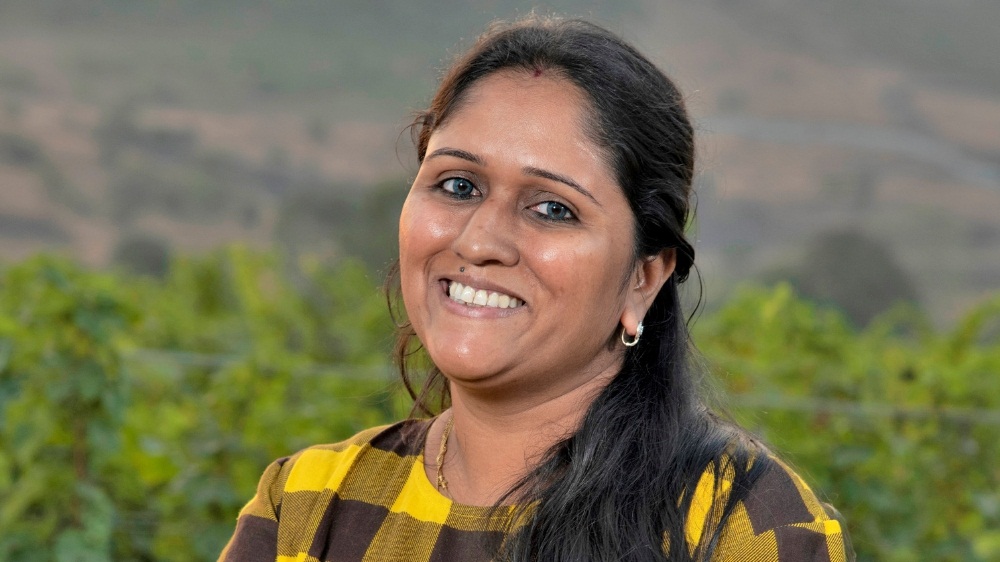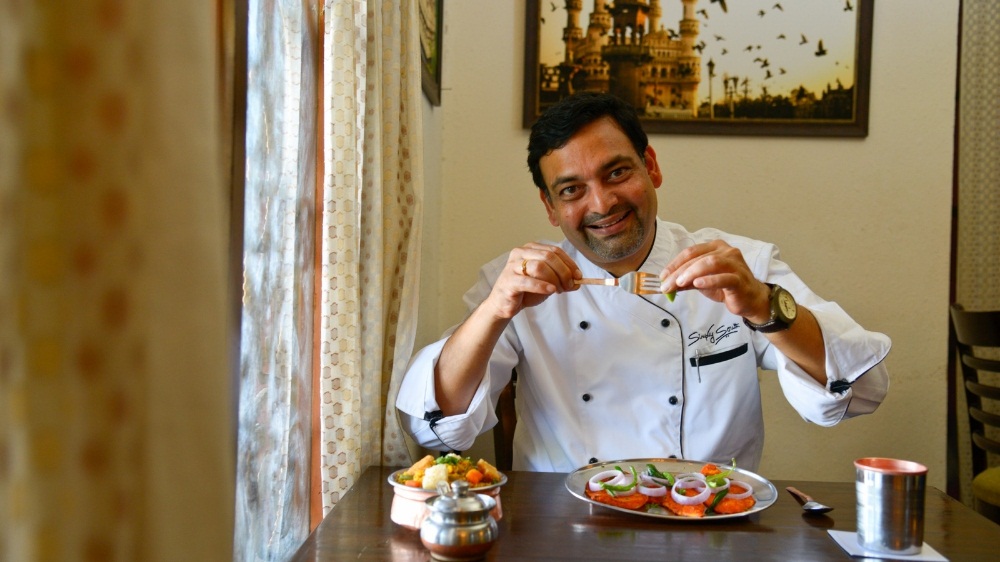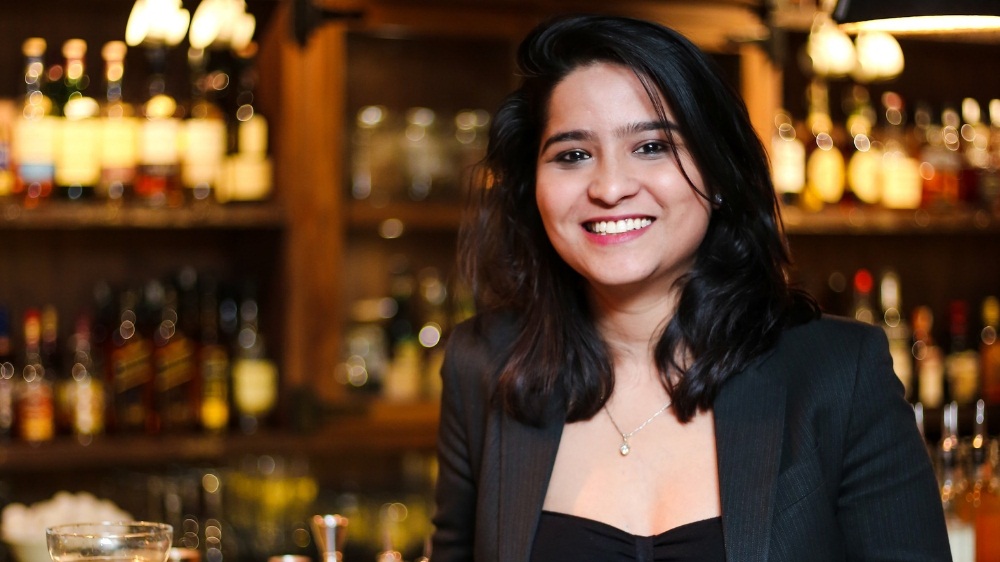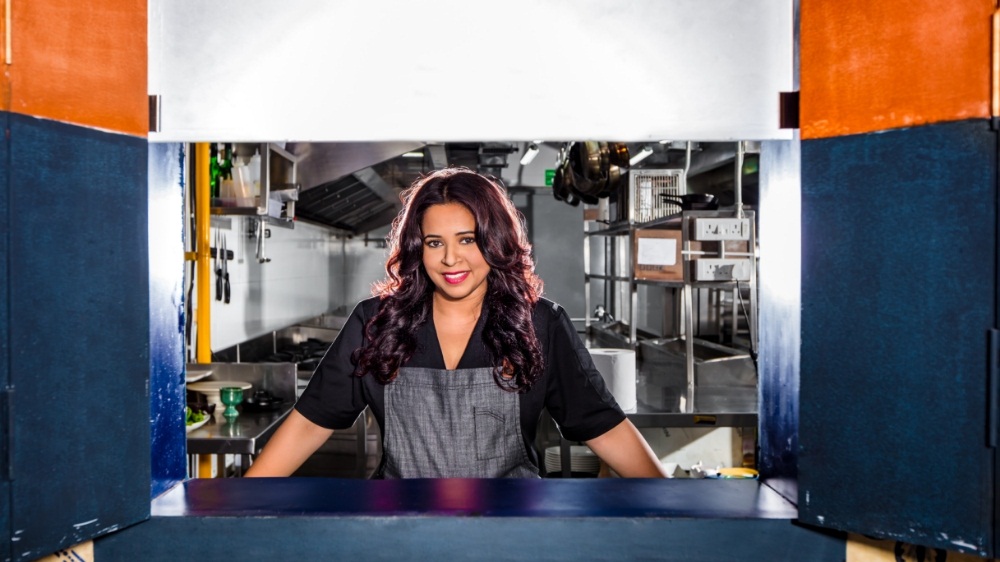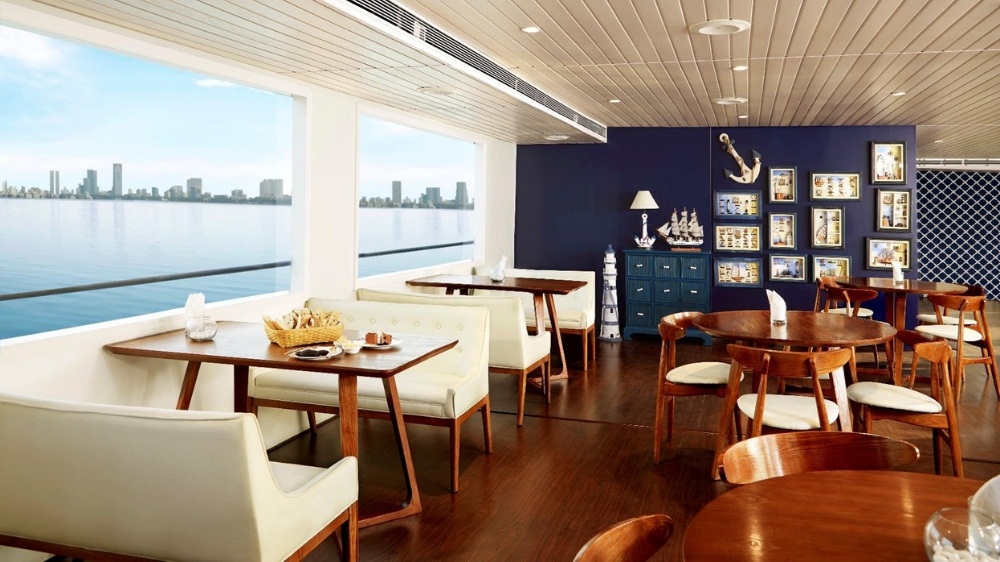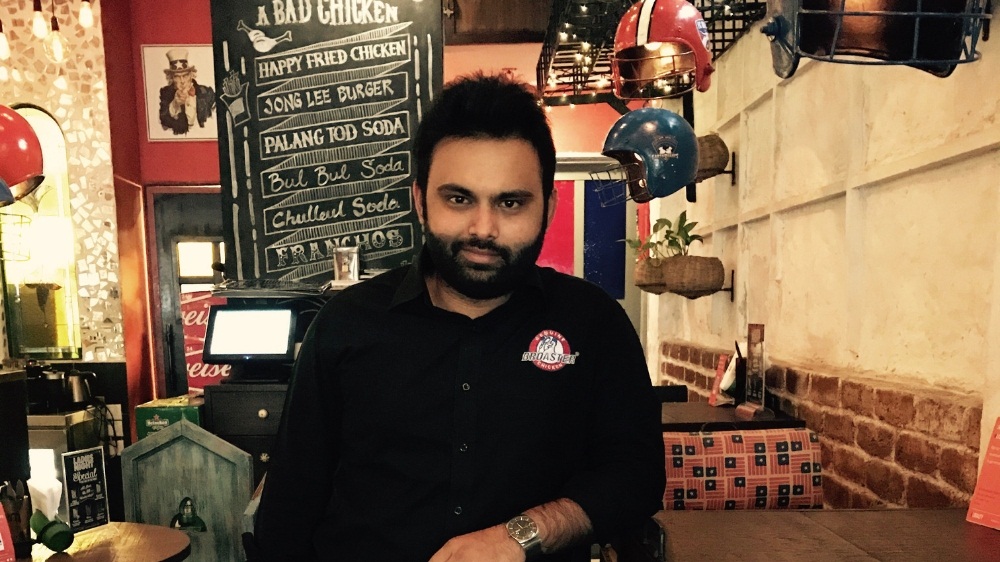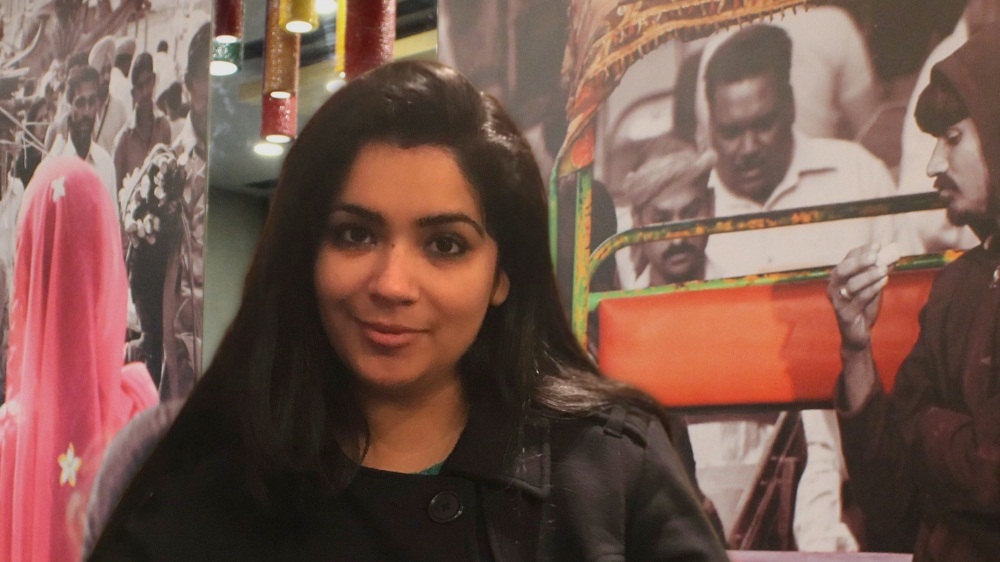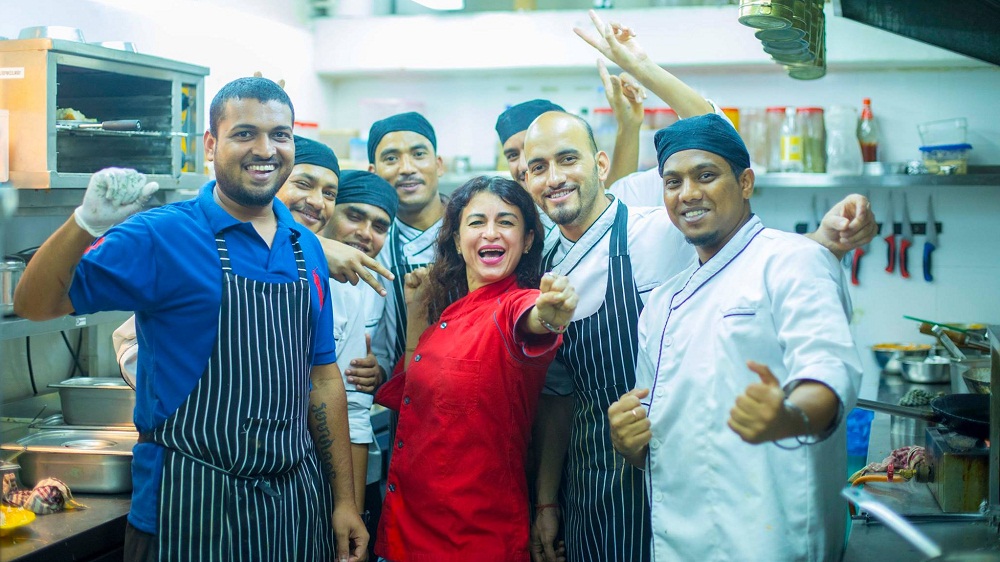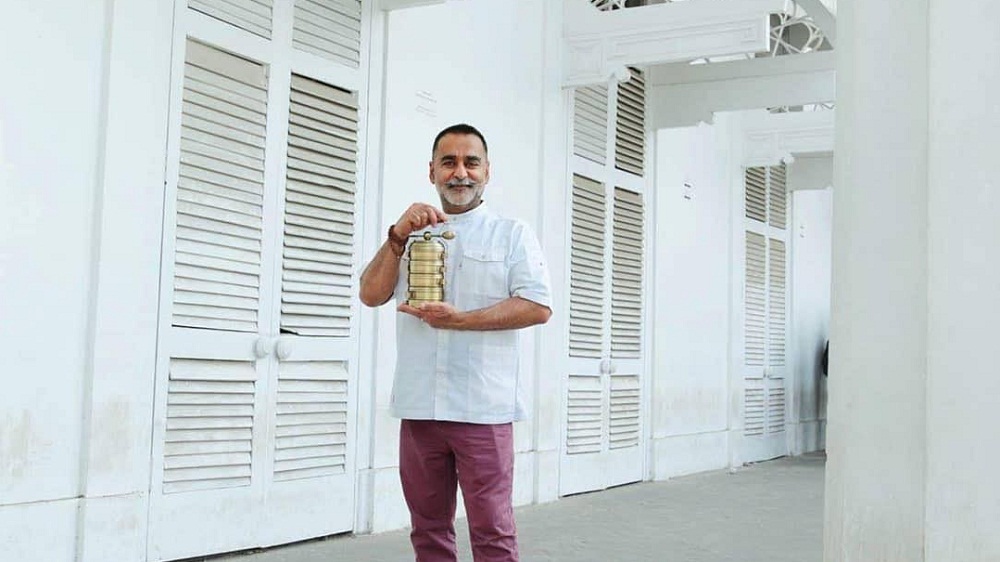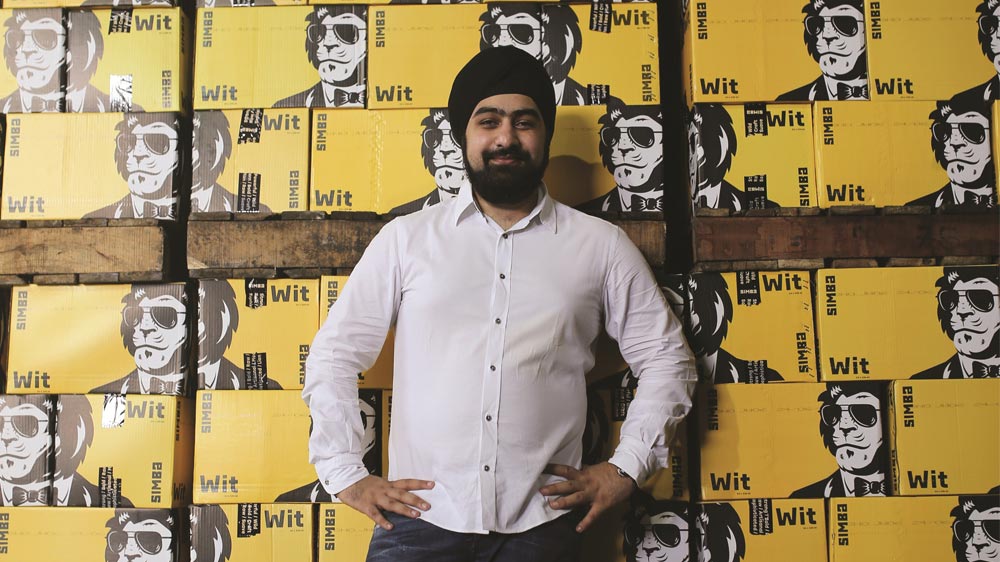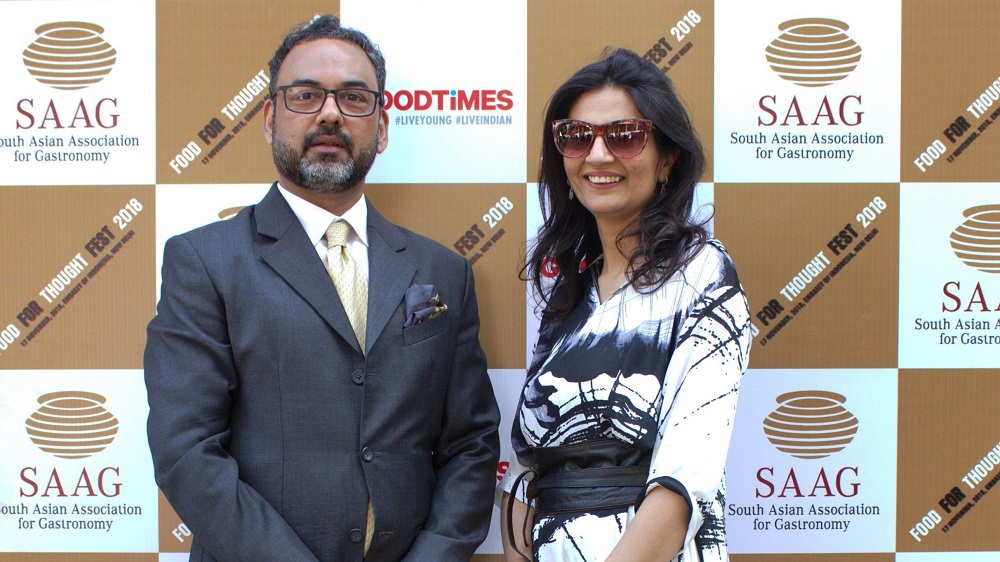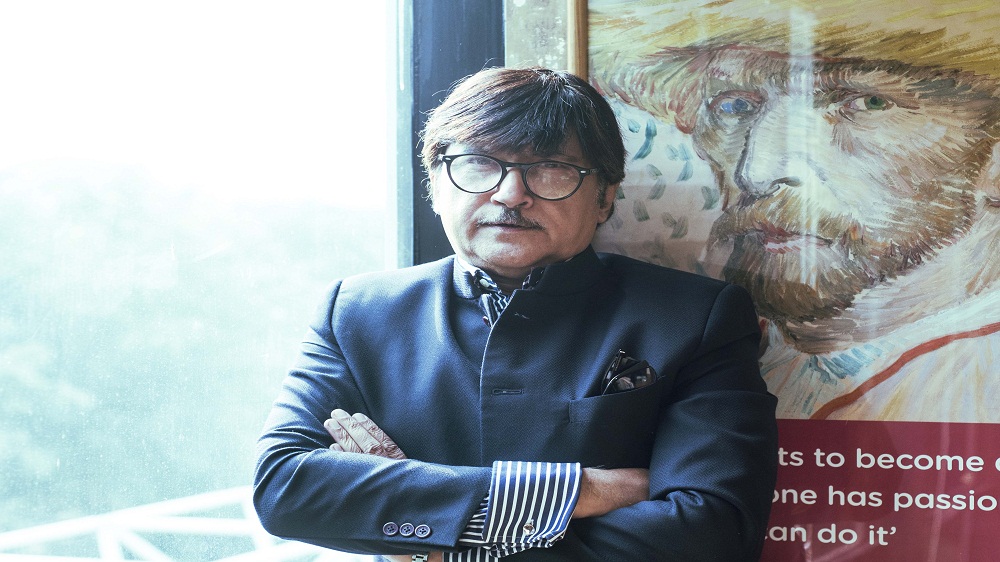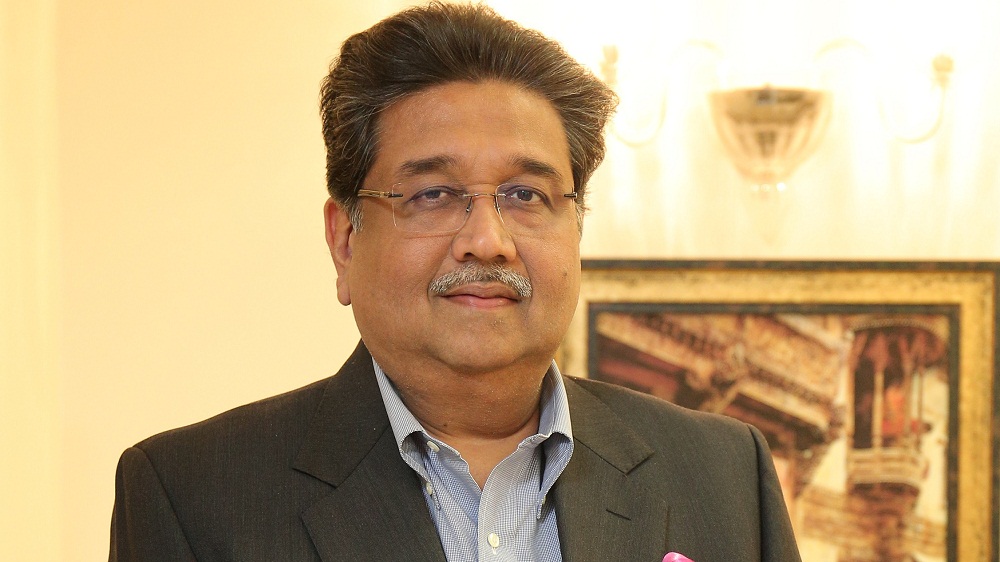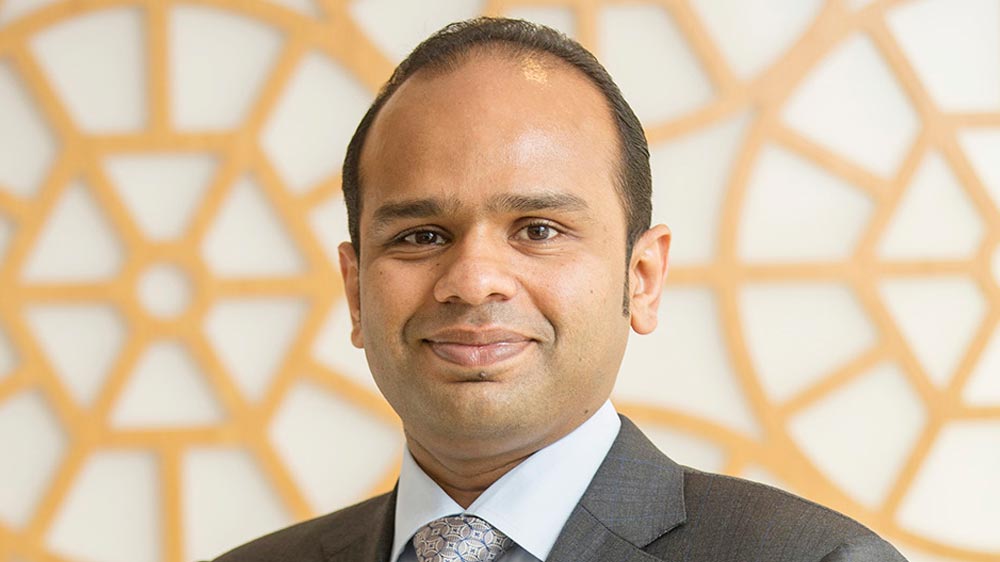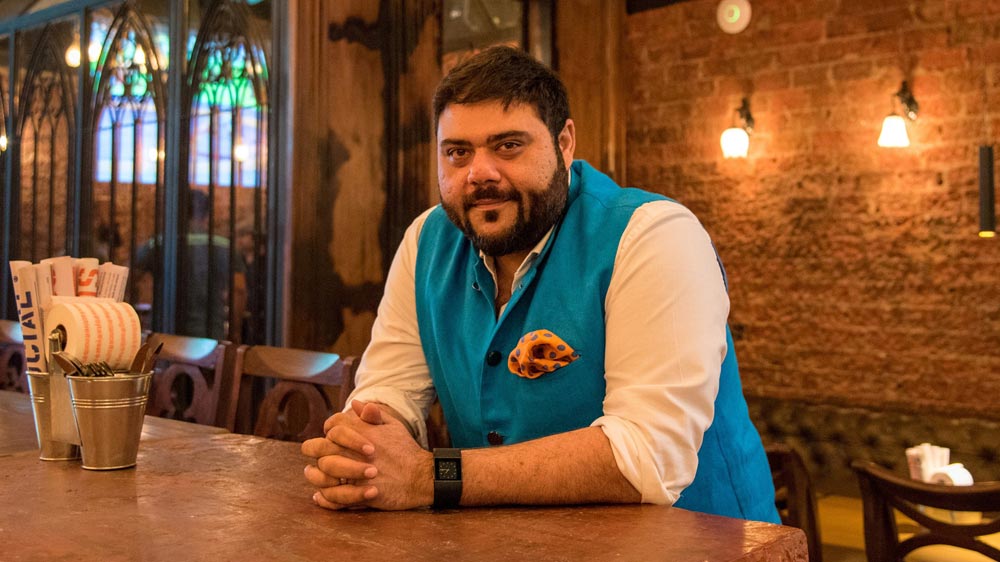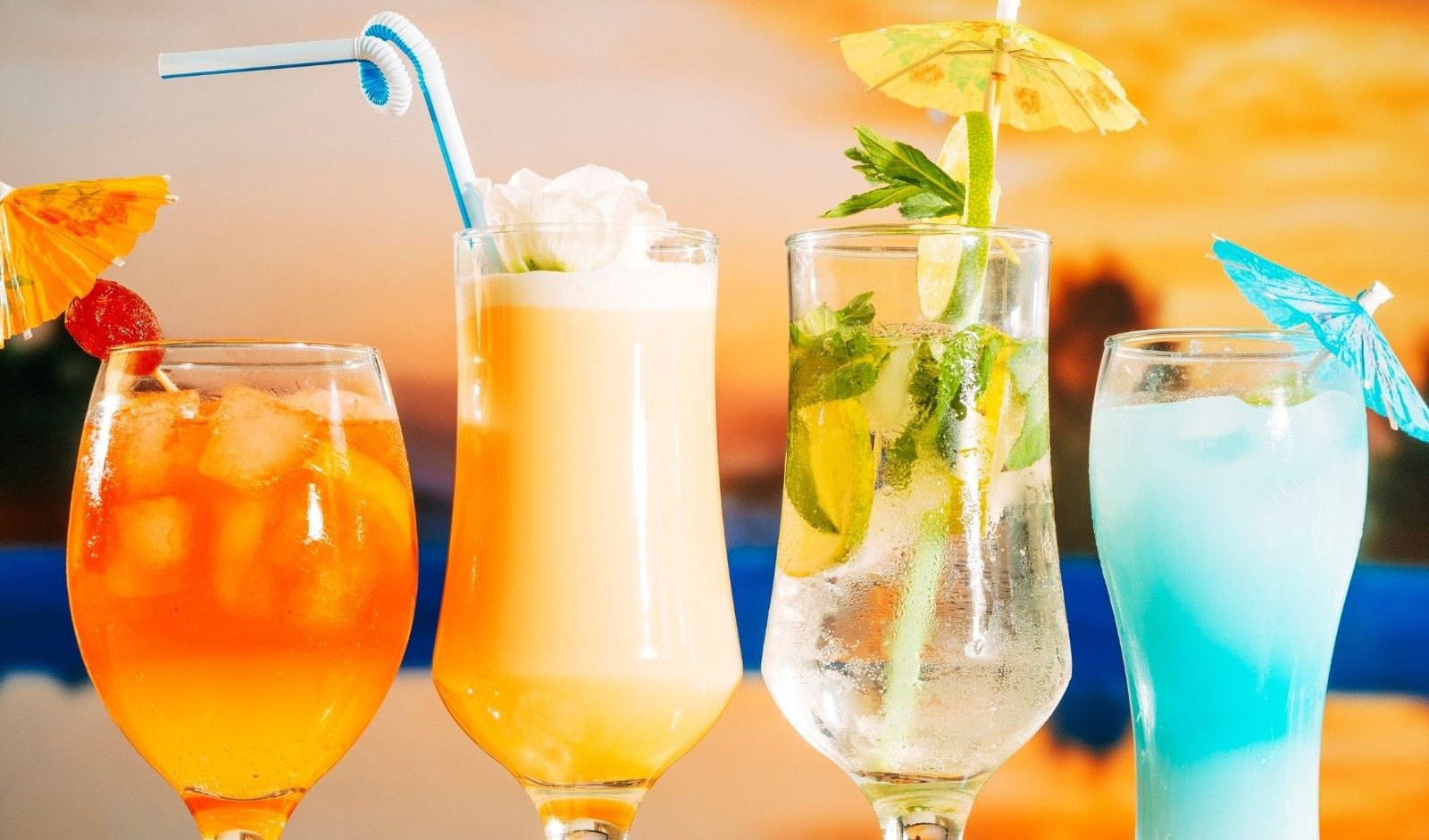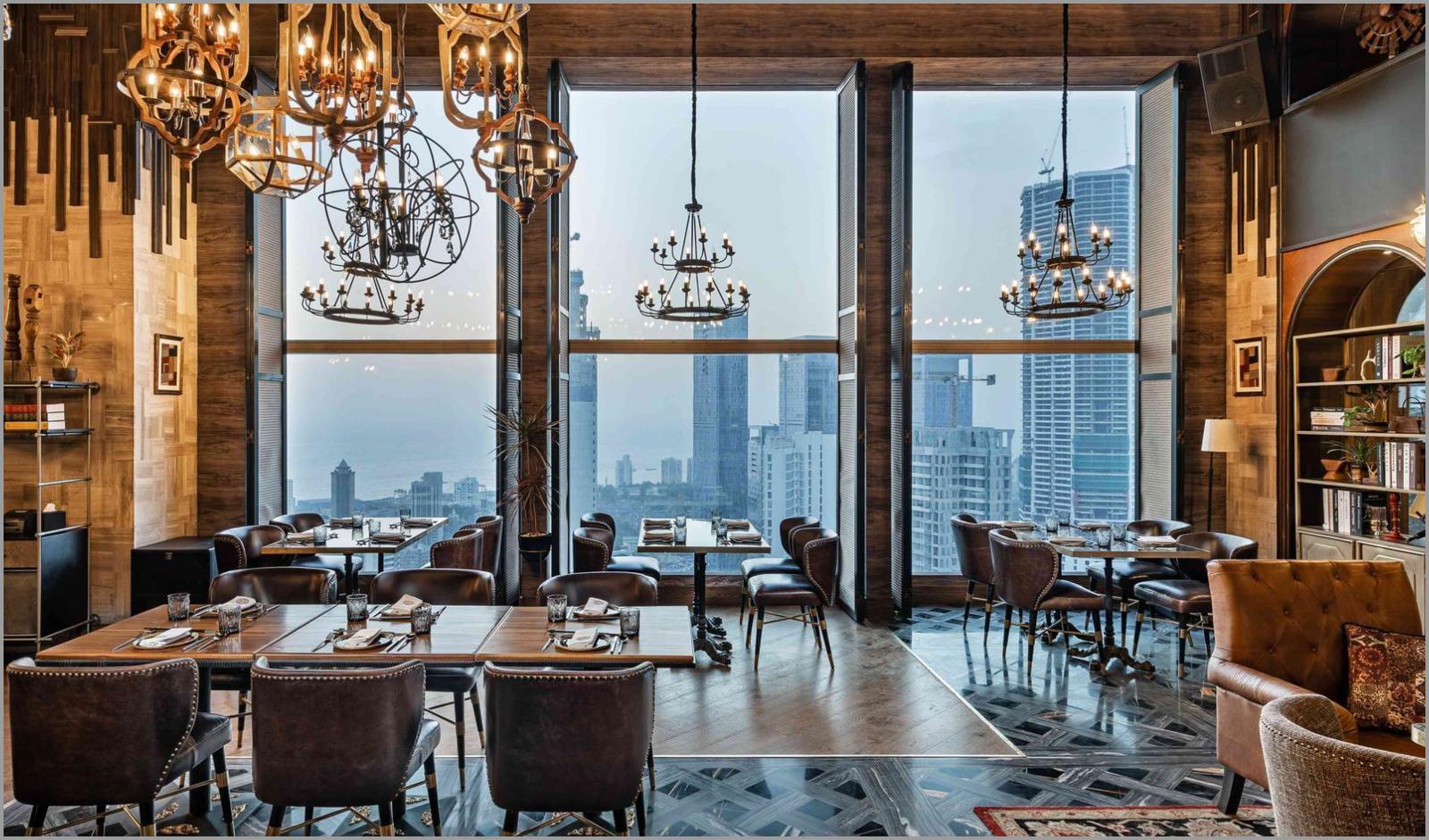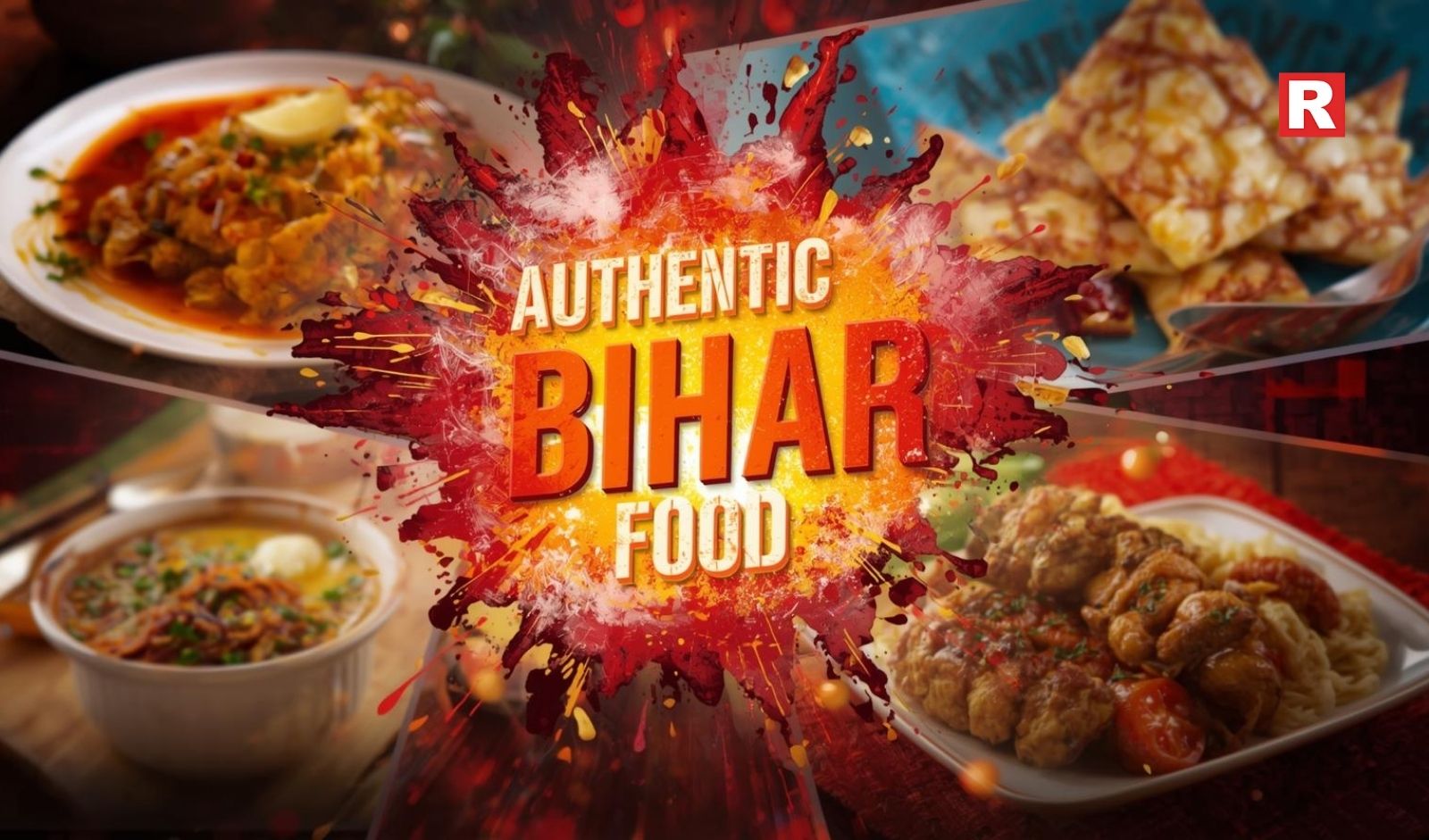
Pankaj Gupta has been a passionate cook and he always dreamt of serving quality food in a set up of his own and was always fascinated to make his journey into the food & beverage Industry. He and his friend Abhir graduated together and later met most unexpectedly on a trek to Vaishnodevi temple wherein they decided to travel together to The Golden Temple. While in Amritsar, they feasted on the local cuisine at almost all eateries and dhabas: Amritsar (as is well documented) is famous for being the cradle of Punjabi cuisine. It was during this trip that they realized that someday they would wish to bring this Amritsari delicacy to Mumbai.
Pankaj was just a couple of months away from completing his Masters when he rang Abhir and asked him to put his papers where he was employed with an MNC and insisted that let’s go back to Amritsar to study more about the food and in a matter of a few months they actually had their first outlet in the form of Oye Kake.
What was the inspiration?
I had realised back in 2010 that there was no authentic Punjabi food being served in the city and that most of the Punjabi Restaurants were actually run by South Indians, serving a fusion version of Punjabi Food. Restaurants were serving heavily loaded gravies in the name of Punjabi/ Amritsari Food. On our trip to Amritsar we realised that there are no places in Mumbai which do Stuffed Kulchas and what Mumbaikars were actually being served in the name of Kulchas was Naan with black sesame seeds. So this was the seed of our concept which focused more on doing assortments of Stuffed Kulchas and Parathas in the most traditional way as is done in Amritsar. In order to ensure authenticity of the breads our Ustad Salakhan Singh ( Chef from Amritsar) insisted that we knead our dough in water sourced from Amritsar. We also chose to have an extensive menu as compared to other restaurants as Mumbaikars look forward to variety in a restaurant. This was the first milestone in our journey and in the mid of 2011 we gave Mumbai its first Oye Kake outlet in the most buzzing corporate hub of Fort.
How much money have you invested to come up with the brand?
Since, it was our first outlet and with almost no background in the hospitality industry we tried to control the capital as much as we could however we still ended up investing Rs 40 lakhs which was totally self funded.
Oye Kake is a Punjabi restaurant known for its kulchas prepared with water from Punjab. How easy/ difficult it is to source the water? What was the idea?
When we hired our local Chef from Amritsar he strongly insisted that we source our water from Amritsar to knead the dough as it is the water that makes the Kulchas and the Parathas stand-out and retain their authenticity. It did look like a logistical challenge in the start however I soon realised that my family has been in the business of trading of food grains that are sourced through carriage trucks from various cities in Punjab. We had an arrangement with the Carriage companies to carry 25 litres of water (it’s only used for the Kulchas & Parathas) twice a week in any of their Mumbai bound Trucks. The water is well sealed and travelled in disposable plastic cans.
Talk to us about Café Haqq Se.
Today, Café Haqq Se is a rare offering in the hospitality industry with its unmatchable modern approach to Indian cooking. It was opened with the intention of celebrating the pride of being who we are not just as Indians, but as global citizens and this sense of pride and heartfelt patriotism is expressed through its food, décor and music offering. While the restaurant has a progressive take on Indian cuisine and cross-cuisine cooking techniques have been adapted to bring out the best, the core values and authentic nuances of the traditional dishes have been conserved. Café Haqq Se opened in Kamala Mills , Mumbai in November 2015.
How do you select locations for each restaurant given that both brands cater to different customers?
Oye Kake was initially opened in Fort to serve the corporate crowd. Later, as the restaurant’s popularity grew, families starting frequenting it and there grew a need for us to reach out to our patrons living in the central part of the city i.e. Lower Parel. That was when we decided to open another Oye Kake in Lower Parel. We are soon opening outlets in Pune and Nashik as these cities have been the most upcoming and hence desirable places for restaurants.
We do consider several factors before finalising a property like, behavioural perception of the crowd, demographics of the area, upcoming F&B zones within the city, its proximity to Corporate Hubs, Parking Space, other restaurants in the vicinity, cost per square feet etc. Out of the existing properties we have, venturing into Kamala mills was our best bet as it has completely transformed into the most buzzing F&B hub of the Country. It’s good to be in the industry, present with everyone.
What is the average footfall at each of the outlets? How is the response so far?
We cater to at least 250 guests at each of our outlets every day. Today restaurants are finding it immensely difficult to have customer loyalty unlike the era of 90's and mid 2000 where customers displayed loyalty towards their favourite places. This is mainly because of the growing competition. However, we are fortunate enough to have our customer’s affection towards our brands; I can say this because we have a lot of regulars frequenting the place at least 3-4 times in a month and in some outlets even 7-8 times. So, the response has been incredible towards all the outlets up till now and we surely know the mantra of sustaining it.
Since, you are catering to both modern and traditional customers. What is your view on the change of their eating habit?
I think that people are craving for authentic and good food. However, with growing incomes people have a much better spending capacity now as compared to the last decade which also means the expectations are at the highest, they are looking for an experience more than just having good food. I also see their palates being colonised by a lot of pan Asian concepts happening around the metro cities. They are much more open than ever to experiment new concepts. I take it as a positive development of the market; this is the best time for restaurants to venture into their desired target market.
How are you marketing your brand right to the customers?
Oye Kake’s biggest marketing strategy has been the fact that ‘we source water from Punjab to prepare authentic Amritsari kulchas.’ That continues to work wonders for us. As for Café Haqq Se, we’re serving progressive Indian food by Chef Milan Gupta; our interiors & music offering (live sufi nights) make us stand out too. As a brand we have always resorted to word of mouth publicity and it has worked well up till now. We have been doing a lot of festivals and special day menus which give a chance to boast about what our chefs can do and also give our customers reasons to frequent us. It is very important to stay in touch with your customers and look at expanding your customer base and we achieve this by conducting workshops for our guests, setting up stalls in various food festival around the city etc. Our most preferred mode of communication has been Social Media as it instantly activates brand recall. We have an In house marketing and social media team that looks after all our outlets.

In an exclusive interview with Restaurant India, AD Singh, Managing Director at Olive Bar And Kitchen Pvt Ltd., speaks about his journey in the restaurant business.
Starting Just Desserts To Building up the Olive Group – Know AD Singh’s Entrepreneurial Journey
My journey in the food business actually started by accident! I was an electrical engineer and had never studied F&B (food and beverage); I never thought of being in hospitality as such. When I became an entrepreneur in 1988 I was looking around for the various opportunities. I have a sweet tooth. So, I thought of opening a dessert place because, back then, it wasn’t easy to find a good dessert Cafe. I opened a place called Just Desserts, starting with just Rs 50,000. It was a sensation. It bloomed among consumers from across the country. I got amazing support from the press and it spread more from the word-of-mouth. It was my first venture. We didn’t really make money but I got to understand the business. I think that product is amongst the best I had created.
Since then, I had opened many restaurant businesses. Besides, many people ventured into the industry. We created a few good brands and, now, I am growing them nationally and, a little bit, internationally. My whole time is spent with the Olive Group; it is one of the strongest brands. Then we have SodaBottleOpenerwala which is getting a good recognition; Fatty Bao which took the market by storm, we have seven outlets across the country; Monkey Bar is India’s first gastropub and is present in four different cities.
Guppy, a Japanese brand, is very close to my heart; it has a presence in Mumbai and Delhi. Then we have opened Grammer Room at Olive. We have also opened the first Olive Café; the product looks amazing and we are looking to grow it.
Expansion Plans of Olive Bar and Kitchen
We are slow and steady. We are opening new brands very slowly. Plus, there are lots of interests overseas; we are looking at that too.
Trends in Restaurant Industry
The market is very much mature now than it was earlier. A lot of things are being introduced and have a scope. The market is getting stronger.
We are constrained by what people’s curiosity, exposure and appetite are. For example, Japanese food is a tough one. Now that we have travelled all over the world, watching shows, we increasingly want experience from overseas. People want to experience it, even if they have to pay more. People also focus on organic food and fresh ingredients. There are so many products where people are looking for quality and specialization; another trend is serving multi-cuisines.
Tips to Budding Restaurateurs
The industry is very exciting and glamorous; everybody wants to be a part of it. That’s great! I am very happy with all the entrepreneurs.
It is one of the easiest industry but when you start, be careful. Even if you have a good idea and you want to implement, it is very important for your first couple of restaurants to take a franchise and run it. See how a business works. Or you may partner with a restaurant business and establish a reputation. So that you understand what you are doing before you put in your hard-earned money.
Customers, today, are more focused towards getting good experience and food. Get that right.

Sandeep Kotecha and Praneta Mehta are the vibrant young couple behind India's first concept tea bar, The Kettlery. Born and brought up in Ahmedabad, the young couple gathered their extensive research and experience in the hospitality industry to get Mumbai its first vegetarian tea Bar. Sandeep drew his inspiration for teas from a social gathering while he was drinking 'masala chai' in Gujarat. This is when he first launched The Kettlery in Ahemadabad, three years ago, which is up and running successfully until today. The Kettlery Tea Bar is the one-stop-shop for all tea lovers and enthusiasts alike. It is one-of-a-kind and exclusive tea bar that displays the entire product line of The Kettlery in a comfortable-yet-classy all-day setting.
In an interview with Restaurant India, Sandeep Kotecha, Founder and CEO, The Kettlery, talks about the various factors behind the success of his restaurant business.
Launching The Kettlery Restaurant
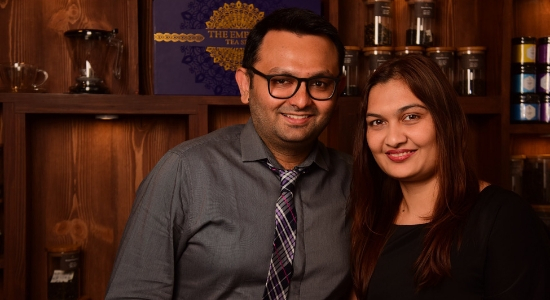
We launched The Kettlery brand in April 2015 as a speciality tea shop-cum-bakery in Ahmedabad. Over the years, we have evolved our model with good quality vegetarian food offering along with speciality teas which are our expertise. We, currently, have a concept Tea Bar and Kitchen at Ahmedabad One Mall and plan to launch boutique and F&B formats in different parts of the country.
Interesting Facts About Restaurant Industry
It’s not as easy as it looks! The most interesting part is you can innovate every day of your life but still not figure out who your real customers are. So it is very critical to understand your target clientele and revolve your menu, ambience and service to cater to that profile of customers.
Considering the complexity of our country, localisation of food by city or state to some extent is a must to succeed in the restaurant business. It’s easier to change the menu but it’s 10X harder to change the customers’ palette.
Another interesting fact we came across, particularly about Indian investors, is that they love to invest in restaurant concepts as they think it is a lucrative business from the get go without having the patience to wait for the returns. It is a great business but it takes time to build.
Pricing The Food Items At The Kettlery
Pricing is a function of the following key factors:
- Raw material cost
- Willingness to pay by the customer depending on the market
- Competition
- Commercials of the location (rent/revenue share etc.)
These factors form the backbone of pricing decisions. We use the same methodology to price our food items where customers should feel comfortable that they are getting the right value in terms of taste, service and ambience.
Growth Plans
We plan to expand in Jaipur, Mumbai, Delhi, Surat, Pune, Bengaluru and other key Indian markets with a higher vegetarian population.
The Secret To A Successful Restaurant Startup
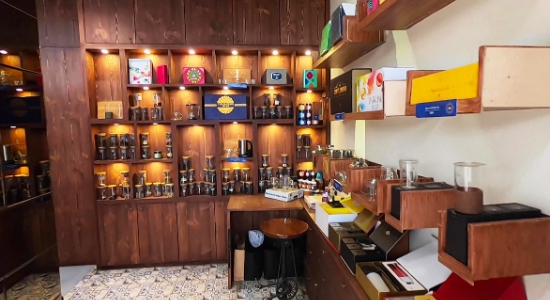
Patience is a virtue. Every entrepreneur needs to understand this well. Easier said than done.
The secret is a combination of strategic location, good food, great service and a convincing reason for the customers to come back.
Key Challenges While Setting Up The Restaurant Business
The key challenge we face is that customers know us as a premium tea brand with 75 types of teas, and 50+ tea accessories and gifting products. However, they are not aware that we are equally good at offering high-quality food at affordable prices. We are still working on this by incorporating food photos, videos and articles in our marketing communication so consumers can relate to us as a go-to place with friends and family.
Another key challenge was securing strategic locations when we had launched. Since we have been in the market for a few years now, we are getting good locations from different parts of the country including premium malls to launch our model. It has also translated into strong investor interest as our model and offering is fresh for the Indian market.
Tips For Starting A Restaurant Business
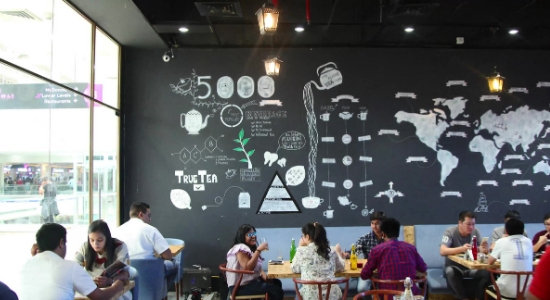
Estimate your cost as 3X than what you think you will incur. Don’t get into the restaurant business for the fashion of it. Aspiring people should get some experience as a partner or employee to understand the food business. They should also be very clear about their business models, a food offering, customers and deploy enough marketing budget into making it successful.
The advent of cloud kitchens and delivery models has also opened new avenues for aspiring entrepreneurs to learn the restaurant business at a cheaper price than launching a brick and mortar format.
Tips for Starting a Concept Restaurant Business in Ahmedabad
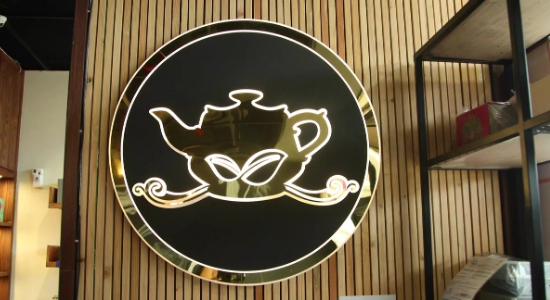
Ahmedabad’s population is less experimental than in metro markets in India. However, they take their food very seriously. Concept restaurants need to identify their focus channel (dine-in, delivery, catering) and ensure they invest in developing those channels fully. Another key aspect is to understand the high and low seasons and how to manage costs during these seasons. It takes time to build the business; you can see a multiplier effect at a later stage.

Juss by Sindhful is the very first restaurant in Mumbai that serves cultural and authentic Sindhi food. The vegetarian restaurant is a brainchild of mother-son duo Chef Kanchan Ahuja and Sannat Ahuja. They started off their journey in the food and hospitality industry in 2017 with a home-delivery kitchen in Khar which flourished and led to Juss by Sindhful, Khar and the Flea Bazaar, Lower Parel in Mumbai. Their menu brings together the best of authentic Sindhi crowd-pleasers and has managed to woo many B-town celebrities as well - catering for their up-scale weddings, the Deep-Veer Wedding & The Ambani Wedding to name a few.
Sannat Ahuja, Co-Founder, Juss by Sindhful, says, “The main aim behind launching Juss by Sindhful is to provide the original Sindhi Cuisine experience and to focus on bringing something new for the vegetarian and vegan community. We want to spoil them with delicious options while bringing forth the simple, understated-yet-extremely delicious Sindhi food. We want it to become a part of the famous Thalis of India. We have tried to bring something new but traditional, and different but regional.”
In an interview with Restaurant India, Sannat Ahuja, Co-founder of Juss by Sindhful, says, “one of the main advantages is being a vegetarian and a vegan restaurant, we have a lower food cost.”
How did you come up with the concept of your restaurant?
Juss is an all-vegetarian, India's first Sindhi Thali diner. It is a small 30-seater cosy diner with warm interiors, located in Mumbai. We also serve specials like Dal Pakwan, Sindhi Curry Rice with Aloo Tuk and also a few mouth-watering Sindhi Chaats. Juss by Sindhful was our second brand after Sindhful, which is our take away kitchen which was started in 2016. Sindhful was a hit right away and people were enjoying authentic Sindhi food delivered to their doorstep. But we could only deliver to the customers who were residing within 3-4 km of Sindhful. We wanted others to be able to try and experience Sindhi cuisines. Also at the same time, we wanted to showcase our culture through our food, essentially the way we eat Sindhi food. That's how Juss was born!
Also Read: Competition Is Good Only If It Doesn’t Hurt Your Restaurant Business, Says Arpan Gupta
What were the mistakes you might have made while drafting the plan for your restaurant?
Since it was our first time working for our restaurant, we had to trust our instincts and go with trial and errors. We had all these ideas of our own which we were not sure of if they would work on not; some of which were great and others not so much.
How important is the location of a restaurant business?
I believe the location is very important but at the same time if you serving great food people will look for and come to the furthest corner for quality. Yes obviously if the place is located at the high street, the footfall will be higher. You will have more visibility but at higher commercials. Ours is not a prime location but our restaurant is easily accessible to Mumbaikars.
What cost is involved in choosing a restaurant location like yours?
The cost of interiors would be the same everywhere, with choosing a location like this we save on the deposit and rent, which is 10-20% lower than the prime locations.
What are your growth and expansion plans for Juss by Sindhful?
Juss being an all-vegetarian, we focus on expanding to vegetarian dominated locations. We identified lower Parel as a great vegetarian location and we have opened our second outlet after Khar at Flea Bazaar, Kamala Mills. We've got people from all over the globe, The US, Canada and Dubai interested in franchising but for now, for the next 1-2 years, we will focus on the locations like Borivali, Mulund, Kolhapur and Ahmedabad.
Must Read: How This Restaurateur Is Bringing Alive The Free Spirit Of Rastafarian Culture
What is the average per month footfall at your restaurant?
We have approximately 1500 guests coming in every month.
What does the road to profitability look like?
Juss has the advantage of being a vegetarian and a vegan restaurant, which means we have a lower food cost. Another thing to keep in mind is - our profitability will increase as we open new outlets. No issues here.
What do diners prefer more from the menu?
Most of the customers go for Sindhi Thali to get the whole Sindhi experience but at the same time, we sell as many Dal Pakwans as much as the thalis. The third favourite would definitely be the Sindhi Curry Rice with Aloo Tuk.
How do you see the food catering trends in Mumbai?
Catering had gotten us some great breaks and revenues. We feel catering is always going to be in demand, from Corporate events, Weddings, Poojas, Birthdays, all festivities call for amazing food. We have catered for the Ambanis at Isha Ambani's wedding at Jio Garden. We also flew to Lake Como, Italy to cater for Ranveer Singh and Deepika’s Sindhi wedding function. It has been keeping us busy and now we are really focused on caterings.
Ten-step checklist to open a concept restaurant in Mumbai
Legal - You need to know the complete legal requirements and always work within the requirements of the local municipal body.
USP - Be unique. First and foremost identify what your Unique selling point will be.
Trials - Before investing a big Chunk in the restaurant, first be sure of your product and do a few trials and get feedback.
Start Small - Understand the market
Competitor Analysis - Check if any competition in your close vicinity
VFM pricing - The guests should be happy after going back.
Complete Involvement - You need to be involved in every department when the restaurant is being made, right from Interiors to Kitchen to
Service. It should be your baby, so offer your undivided attention!
Project Cost - Need to understand completely all the funds required to finish the work.
Working Capital - You would need a certain amount of capital to run the business once the restaurant is operative
Open to Change - You should always be open to change
POS - it is very important to have a good Point of Sale system which gives you complete data storage and detailed analysis of your sale.
Inventory Check - Most of the POS will have an inventory system already available. It is very important to keep a regular check on inventory.
Hard work.

After running RSVP at The Royal Plaza Hotel for long years successfully, New Delhi-based business baron Kabir Talwar is all set to explore new opportunities in the Food and Beverage (F&B) industry. Kabir Talwar is currently running the Delhi’s top-notch clubs and restaurants like Jazbaa and Playboy at Samrat Hotel under his firm Fit Fresh Food (India).
Talking about Fit Fresh Food's expansion plans, Kabir Talwar says, "The combination of partying and dining is a delightful experience. So Fit Fresh Food (India) is coming up with new more thrilling clubs and restaurants in New Delhi and Aerocity that will exude a warm and zestful ambience with an enticing variety of food and beverages".
Business baron Kabir Talwar tells Restaurant India about the expansion plans of Fit Fresh Food (India).
What Makes Fit Fresh Food Stand Out?
Fit Fresh Food offers a complete dining and lounging experience and is dedicated to offering a premium experimental dining experience to its clientele. In this new era of fitness consciousness, we offer people healthy-eating options which are our major plus point.
What challenges do you see in growing Fit Fresh Food?
Navigating a business is extra tricky these days. The speed of economic and technological changes means that the right path yesterday may not work today and could be a disaster by tomorrow. Solving these dynamic problems is what separates those who excel from the companies who are closing the doors. And we are constantly working to overcome these challenges and serve our best.
What is your expansion plan growing your brand further?
I've always been interested in the F&B and Entertainment business. I'm definitely looking forward to expanding my brand further. It'll be public as and when a decision is taken.
Also Read: Right Music And Safe Environment Is Crucial For Nightclubs
What have been the highs and lows of your entrepreneurial journey?
I entered the business with little or no knowledge but today when I look back, I feel I've evolved a lot through the continuous process of failing, learning and performing at my best. In my opinion, there are no highs or lows; there are just lessons and their fruits.
How was the year 2018 for you in terms of achievements, overcoming major obstacles and treading a new path?
The past year has been one of the most phenomenal years in terms of everything, I've achieved a lot, overcome some obstacles and traded various paths, but overall I've learnt a lot. In my opinion, that's most important - to go through everything and learn from it. So in a nutshell, 2018 has been a year of great learning.
What's your next trigger of growth?
I've always believed in researching what is trending at the moment and at the same time looking for fresh and unique ways to take my business further. I'm continuously working on developing new ideas to bring something eccentric both in terms of food and lounging. My next trigger would be to upgrade and reinvent these two. And conceptualize amazing offers and deals for my clientele.
What does the road to profitability look like?
Well, no success has ever come without hard work. I'd like to say it's always your hard work, patience and determination that pays you at the end so the road to probability is purely dependent on the inputs I am putting in right now.

Goumtesh aka Joy Singh hails from Jammu and is the partner of Raasta, the Carribean Lounge (Hauz Khas Village, Cyber Hub and Mumbai) Yeti HKV, ElPosto and Back to basics. Goumtesh Singh started Raasta in 2012 with its first branch at the popular restaurant hub, Hauz Khas with another lover of Rastafarian culture, Rahul Kundan. With the immense love of the city folks for the Hauz Khas outlet, the two entrepreneurs took the brand a step ahead by opening another one at the elite Cyber Hub with the thought of providing a laid back time to the corporate environment of the adjoining Cyber City.
Joy Singh, as Goumtesh is known among his friends, and Rahul Kundan believe in a Rastafarian culture that is a way of life dedicated in the rejection of materialism and embracing greater spiritual values. They believe and live on the thought of bringing alive a more free-spirited approach to life and this found its physical form as Raasta. The Caribbean lounge religiously follows the Jamaican born singer, Bob Marley, whose soulful lyrics make Rastafarian culture popular in mainstream music and their patrons.
To keep the zest on, Raasta dedicates each night to some astounding themes like Ladies Night, Reggae Night, Karaoke Night, etc, and hosts some tremendous musicians and DJs to keep the place exciting like Nucleya, Midival Punditz, Dualist Inquiry, Tippa Irie, Apache and more.
In an interview with Restaurant India, co-partner and founder at Raasta, Goumtesh Singh speaks about the growth of Raasta restaurant.
Being From a Non-Food Background
Rahul and I (partners at Raasta) started our journey about eight years back. None of us had the experience or hospitality background. But we still wanted to serve people and provide them with a different and happy experience. So we started Raasta in 2012 which is a music-based lounge, and is dedicated to Rastafarian culture; it has music from all alternate genres from reggae to dubstep to dancehall to drum and bass. Since, the launch of the first outlet in Hauz Khas, we have just been working towards the expansion of the brand and spreading good vibes.
The Secret Recipe To Success
The hands-on approach and personal involvement are what I think are the secrets. The second most important is our sole aim - to see happy customers by the end of the night, be it food or alcohol or music or the complete experience that brings a smile to their faces. Whatever it takes in our limits, we make our customers happy.
Also Read: Restaurant Businesses Are Seeing Aerocity As The Prime Location Ingredient In Delhi
Raasta, a Unique Concept
Raasta is a Caribbean lounge and brings the entire culture to India. The focus is on positive vibrations and good music with good food and great drinks, and, yes, a bar where people can come every day. So the regulars here are a part of the Raasta family as we call them. It's a sense of belonging that they get here. I guess that's what makes it unique.
The Décor and Ambience of Raasta
It's a casual lounge that gives a relaxed feel and a person in a pair of shorts feels as much comfortable as a person in formal does. The decor is filled with reds/yellows and greens since those are the primary Raasta colours with records stuck to the walls of famous reggae/ Dub acts.
The Growth Story of Raasta
We launched Raasta in Hauz Khas village in 2012 and have grown consistently since after two years in 2014 we opened in Gurugram (Cyber hub) and later in 2016, we launched a Raasta outlet in Mumbai. Number-wise it's been consistent, and as a brand also it has grown significantly because of the artists that we host or the kind of vibes that we emit. So people have preferred us a lot of times and the artists themselves have spread the word so much in their respective countries and now people come looking for us also from time to time.
The Impact of Restaurant Business
The industry is too big to have an impact by one brand itself but yes we have been a part of the ever-changing music and gig culture in the country and, hopefully, we have set some standards in other fields also. This, I can hope for only.
Expansion Plans of Raasta
As of now we are present in three cities and plan to go to some other cities like Chennai or Hyderabad and places. But one thing is assured that we will just do one outlet in each city.
Pros and Cons of being a Restaurant Partner
Pros are that you get food and alcohol at a discounted price or free sometimes and you tend to get invited to cool gigs and events and launches. The biggest con is that one doesn't have a personal or private life because there's no offseason in this line and on weekends when everyone is partying, we are the ones hosting or arranging that part.
Four Tips for Choosing a Restaurant Business Partner
- Please work with someone whom you can trust.
- Work with someone whom you can scream at and get screamed at also because a partnership is a two-way street.
- Proper coordination is very important and distribution is very important. Since two people from the same background with the same expertise won’t add anything to the business.
- The same thought process and vision sharing are very important factors.
Must Read: Why Partnership Is Beneficial For You?

QLA started as a manifestation of the long standing dream for Prateek and Ranjan of owning a restaurant. The idea was conceived post a jam session and a bottle of wine. The whole motto was to have a place that is about great food, great wine and great music. Excerpts from the interview:
Why Qutub as a location?
The plush green setting along with a courtyard was the right combination for the kind of experience we wanted to offer to the guests. It is an open air European courtyard blended into a heritage building in the historic neighbourhood of Mehrauli.
It is very important for a diner to find a memory, connect and story in a cuisine or food. How do you build that at QLA?
We wish that Qla is an experience where you feel like you are taking a piece of the place back home since you had a great time. We'd like that as a guest, you miss the warmth and the happiness that the place has to offer and come back every time you are missing this home away from home. Our food is comforting, complemented by an equally comforting wine and drinks program that makes every meal special. While a lot of places focus on the food or the beverage part of things, we lay equal emphasis on a well-rounded experience that has both food and beverage as the stars of the show.
Your offering is a mix of French, Italian, Spanish and Scandinavian influences. How difficult/easy it is to serve multi-cuisine?
While the cuisine is European, the influences can come in from anywhere. Living in India, it is a challenge to source the ingredients that make up such a cuisine, especially because seasonal produce is not readily available. However, thanks to the changing landscape of local farming and revival of some of the Indian grains, pulses & spices, there is more room to experiment. Local cheese and improved meat packing facilities are also helping expand what we can serve on the menu.
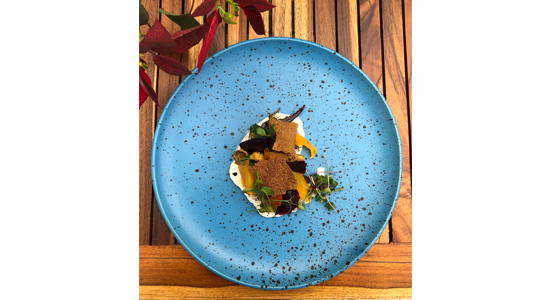
Tell us something about the ingredient. From where did you source it?
We get cereals, pulses and grains from local farmers with the exception of arborio rice which comes from Italy. Cheeses are sourced from different parts of the world while vegetables are all fresh and at times sourced from the hills depending on specific requirements.
You have got varied beverages options with unusual yet so flavorful with comprehensive range of cocktails with fresh ingredients and a wine list with depth that spans a host of countries and grapes around the world. What are some of the top loved beverages options?
In cocktails, we have some unique concoctions like Vulgare John (a smoked pineapple based drink), Honeydew Cilantro and Chewy Orange. These are also some of the most loved options. Besides that, our eclectic wine collection (which changes as per the season) is also very popular and we have a wine that fits every mood and occasion!
You have been reading, researching about wine for years. How do you see wine drinking change in India with time?
With respect to wines, people are far more open to trying than they were a decade back. Knowledge levels have somewhat improved thanks to the increase in traveling and this surely brings with it an increased demand and seeking new options. Hence, wine drinking is changing for the better in India but people are still price conscious when spending on a bottle of wine.
How are you pairing the beverages right for your cuisine?
The pairings come with a lot of researching and trials. Food and beverages pairing is both a science and an art and we switch between both as per the situation.
What trend according to you would rule Indian F&B in next few years?
Eating local and appreciating regional Indian food might be the next big thing in F&B. Specialised bars with well-crafted drinks and an international story might be another hit where beverages are concerned. Expect home bakers to scale and become commercial names. Take away and delivery will continue to surge.
Any plan expanding the restaurant? Or opening a new restaurant?
Yes, we are looking at adding another location in the latter half of 2019. It might be under the same name or a new entity altogether.

Chintan Shah, who hails from a family of Chartered Accountants, was recently appointed as the Virtual CFO at Hotel Sahara Star. Chintan Shah has previously worked with finesse clients and helped them out in achieving their extraordinary expectations in the fields of taxation and assurance practices.
Chintan Shah completed his Charter Accountant course in 2006 and is also an elite member of The Institute of Chartered Accountants of India (ICAI). He is also a Certified and Trained Valuer and Arbitrator.
Chintan Shah, Virtual Head of Finance, Hotel Sahara Star, positively feels that “Strategizing right, zero-based budgeting and proactive implementations are few arrows in the armour for Sahara Star.”
In an interview with Restaurant India, CFO at Hotel Sahara Star, Chintan Shah, speaks about the restaurant industry trends with reference to accounting and finance.
Role As The Virtual CFO
The role of a virtual CFO is to maintain the financial well-being of the Hotel. The role comes with the baton of responsibility. In my tenure, I have brought about smooth functioning in the accounting team along with helping them connect with the legal and IT team too. Speaking on the financial front, I have improved stakeholder relationships along with implementing strong policies wherever needed.
Also Read: "With Franchising You can Grow Brand Quicker"
Future Plans for Hotel Sahara Star
The future plans for Hotel Sahara Star can be bifurcated into long term and short term. The long term includes revamping the business structure, starting a sports club and setting up a solar and renewable plant. The short term goals are more finance-oriented along a few internal and external policy and relationship-building activities.
Focus on Organisational Growth
The growth has been very good. Mostly, the work has been all due to proper communication within the team and also with the other departments at Hotel Sahara Star. The most important growth that has been the one that is within the company and it has made a strong foundation for the years to come.
Strategies and other action plans
Strategising is an important aspect of teamwork, to make this team a success we have chalked out an action plan that has been created carefully and keeping in mind the importance of a financial department. Ideas are an integral part of plans, for the same we holding regular brainstorming sessions.
Growth in numbers
As said earlier, the growth in the company has been good, both in terms of numbers and efficiency. The sales growth has increased by 43% and the occupancy rate has gone up by 18%. We have also seen an improved level of operational productivity. These numbers have motivated us to work harder and improve ourselves to reach better levels.
Pros and Cons of Hotel Restaurants vis a vis standalone restaurants
There are two sides of every coin, each and everything will have pros and cons. The pros of having Hotel restaurants are that you can have a proper set of audience and giving them a better quality of service. Profits and losses can be borne by all the restaurants together, also the marketing budget will be better. Cons of this can be lowered creativity, lower revenue and also marketing forms basis for the overall development of the hotel and not for an individual outlet.
Must Read: Foodtech Players Begin Tamper-proof Packaging
Changes in the industry in terms of RoI and Revenues
Revenues are raking higher in the Industry, however, the speciality restaurant industry cycles are not more than 1000 days; the said business will have to re-invent and re-engineer their business plans accordingly. The returns of investment will drop if the bar is not set high.
Restaurant Industry Trends with reference to Accounting and Finance
Accounting: Automation and Robotics are taking shape in the Restaurant Industry, thanks to high-end net-based technologies being developed and disrupting the traditional ways of accounting.
Finance: End to End Supply Chain Management system with zero inventory holding and pilferage costs Is the fast-moving trend in finance, also loans are now easily available to businesses. Artificial Intelligence is used for predictions and forecasting of revenues.
Also Read: Technology stepping up the Restaurant Play
Trends in the Hospitality Industry
There are quite a few trends that are upcoming in the hospitality industry. The pay per use concept has evolved with the all-day check-ins and check-outs. Also, with the advent of AI, there will be minimal human intervention. Hospitality is now growing to become a place of networking, business and will not only be limited to entertainment.

Like other great success stories, after pursuing graduation together from Singapore, two friends Ajit Singh and Arpan Gupta started their business with a sense of ambition, an understanding of the culture of the hospitality industry and the need of something interesting to do on a Friday night.
Ajit and Arpan entered the restaurant space with Cheenos in Noida in 2010, exploring north Indian, Mughlai and Asian cuisines and experimenting with a dazzling fairy-lit exterior. Now they are successfully running Anglow, India's first Anglo-Indian Themed Whiskey Bar and Kitchen.
Over the years, they founded Xiian that offered continental cuisine, brought the taste of Mughal era with Handiwala and established Cheenos in Goa at the most happening place - Baga.
Arpan’s family has a business background. He always aspired to establish something of his own. With a unique set of HR and Management skills, he’s the backbone of the business operations at Anglow restaurant.
In an interview with Restaurant India, Co-founder of Anglow, Arpan Gupta, speaks about the importance of location for a restaurant.
Being in the Industry
I have been in this industry for quite a long time now, and over the last 10 years, I have seen a drastic growth in the industry, from International chains to domestic, giving rise to exciting new concepts in F&B industry, offering new and innovative service elements. So, there has been a rapid change in the preferences of the audience. This can be attributed on account of changing demographics, growing disposable income, urbanization and growth of the retail industry. There is now wide acceptance for the segments like fine dining, casual dining, quick service restaurants and cafes in the recent past.
Perfection is very important in order to achieve our target and win over our competitors.
The Concept of Anglow
Not everyone knows that Shami kebabs served have an imprint of Anglo-Indian culinary finesse to them. I wanted the patrons to get a sense of the community that sprouted in our own lands and a cuisine that has endured for the last 150 years. This is the genesis of Anglow, India's first Anglo Indian-themed whisky bar and kitchen.
The cuisines carry a lot of history to it. The dishes have been probably cooked around us very often, but we fail to identify them because of the lack of information in public domains. To bring back its significance among the Delhi crowd, we thought of serving nostalgia on a platter through these remarkable dishes.
Anglow is situated in the bustling food scene of Khan Market taking you to a fascinating trip to the memory lane by serving Anglo-Indian delights. Little did we know that these cuisines were relished in a formal setting - on evenings when English Sahibs, Indian Princes and bejewelled ladies would gather together to enjoy the finest whiskeys and wines.
Matching that historic standard of its legacy, Anglow offers an elaborate menu prepared laboriously with judicious use of spice blends. Click to Read More About Anglow
Pros and cons of being a Partner at a Restaurant
Starting a business with a partner offers many benefits, the least of which is having someone to share the many responsibilities of running one. With the proper planning and consideration, a partnership can be an unequivocal success. Also, the agreement of both parties is always important for major decisions.
Must Read: Why Partnership Is Beneficial For You?
Mistakes made while drafting the plan for previous restaurants
When I started the project- “Detroit Garage Bar and Kitchen” in CP, we suffered for a year due to a trivial issue. As soon as we signed the lease, we learnt that Delhi excise had stopped issuing new licenses. So, along with the right choice of theme and location, timing and research are equally important for any business to run smoothly.
Khan Market at the Location for Restaurant Business
It’s important to understand what to look out for when choosing a restaurant location, even if it is your first or 20th restaurant. The idea is to start getting traffic from day one itself and determine visibility by looking at footfall and car traffic patterns. So that people who walk past your restaurant make a last-minute choice to pull in and check it out. Not just this, there a few mandatory factors to consider for a perfect location and that are accessibility, correlation of restaurant location, rent and evaluation of competition.
Also Read: F&B Industry In Faridabad Is Still Nascent
Competition can be a good thing if it doesn’t hurt your business. And having a business in Khan Market, which is one of the posh areas for standalones in Delhi, we get the opportunity to have more exposure to the niche crowd of the Capital.
For us, Khan Market is an appropriate location with our target audience and required traffic. We are playing on the theme of Anglo-Indian cuisine which is best known for the amalgamation of European techniques with Indian dishes and vice versa. As a result, with a judicial blend of spices, the dishes that churn out of our kitchens are mellowed down suiting the taste palates of Indians as well as expats. Delhi is a hub of embassy and MNCs with many expats and Khan Market being one of the most preferred and Asia’s most expensive market. Anglow welcomes all well-travelled patrons for a wholesome meal after shopping around.
Also Read: What Makes Aerocity A Location Ingredient?
Expansion Plans
Anglow is a kind of product which will only work well in tier 1 cities. Most likely, we are looking forward to opening Anglow in metropolitan cities like Mumbai by the end of the year and then later in Bengaluru.
Tips to open a Concept Restaurant in Delhi
You can toy with countless ideas while setting up your restaurant. The most intriguing, however, challenging stage comes when you are choosing the theme/concept. As a restaurateur, you should comprehend that the theme goes past a cautiously picked location and a well-structured menu along with a right judgment of the target audience.
A concept is a combination of good food, pleasant mood, ambience and palatable service. A good theme is key to create a unique stamp in the market. The concept of your competitor’s restaurant is also one of the most important factors to consider because it greatly determines how many people would come to your restaurant. So never underestimate the power of your competitors.
Also, with the food industry being most dynamic, nothing ever remains constant. Therefore, keeping up with the food trends, what is available in the market and what not is another major factor to consider for the right pull for the audience.
Also Read: Restaurateur Shivam Sehgal Sees An Untapped Business Opportunity In Delhi’s Dwarka

The big move in Pankaj Bhadouria’s life came with a small step when she decided to leave her successful teaching career spanning over 16 years and enter the first televised cookery reality show – MasterChef India. Pankaj Bhadouria, currently, hosts the second season of ‘3 Course with Pankaj’ on LF Channel. Besides, she has authored and co-authored many cookbooks.
In an interview with Restaurant India, Chef and Restaurateur Pankaj Bhadouria says, 'new techniques in food always add freshness."
‘There is a greater acceptance of restaurants with bars in Tier II cities’
An interesting trend I have noticed in recent times is a clear need for investment in technology. Today’s consumers expect online ordering, mobile apps and convenient takeout and delivery options. Hence, restaurants need to keep pace.
Secondly, each of us has a clear, defined audience we cater to. Consumers, especially millennial and younger, with a decent pocket, are not fans of the chains; they’re looking for distinctive experiences, even if they are available in tiny, stand-alone outlets. In the coming years, we can expect continued growth among fast-casual restaurants, with a greater emphasis placed on real ingredients and clean labels. Our consumers are definitely more aware and awakened!
Also Read: Breaking Barriers: 15 Inspiring Indian Women Entrepreneurs In Food And Beverage Industry
I have also noted a greater acceptance of restaurants with bars in Tier II cities as well. Drinking in restaurants is becoming far more acceptable and adult beverage programs have become increasingly refined and high quality.
About Café by Default and its Expansion Plans
Café by Default is a Restro-Bar where we’ve aspired to bring the World Cuisine in one place. But while designing the menu, I had to keep in mind my city and its palate as well. The menu turns out to be global yet has a very comfortable feel; it appeals to all age groups. From Wood Fired Pizza to Durban Bunny Chow, the Balinese Soto Ayam Soup to the Italian Minestrone Soup, Vietnamese GoiCuon to PeriPeriTikkas, my Biji’s recipe of Dal Makhani, Risotto to Parcel Biryani, Fish & Chips to Prawns 65: our food is happy, fun yet slightly quirky!
The beverages, too, stand to outsmart on the menu. The thick shakes, Brain Freezers, Mocktails, Cocktails̶a, We have a lot of inspiring drinks on offer.
To me, how the food appears on your table is very important and I have had a lot of platters and servers customised for my need.
As far as the expansion plans are concerned, we are looking forward to taking Café by Default to cities like Bengaluru, Hyderabad, Mumbai, Jaipur, Ahmedabad and Delhi.
Tramp Tree Café is the mid-segment outlet that we plan to introduce to Tier II cities. The menu here is slightly more familiar and yet equally well presented.
The Contribution of a Good Menu in Restaurant Business
A restaurant is as good as its menu!
Isn’t food the reason why people go to a restaurant in the first place? The dining experience and sometimes the necessity to eat out also count but at the end of the day, it is the food that matters most. A good clean menu is what people look for. A speciality restaurant needs to live up to what it claims to offer; a fast casual shouldn’t have too many options to confuse, a well laid out buffet limits the responsibility of choice and a taster’s menu offers the element of surprise and discovery and completely eliminates the responsibility of choice.
New techniques in food, be it in preparation, presentation or packaging, always add freshness in the approach to food in restaurants.
In Pics: 6 Young Women Foodpreneurs Changing The Way India Has Dreamt Food
The Element of Uniqueness in Food Menu
Consumers seek value for money, be it in the quantity, quality or uniqueness of the experience. Any menu designed should take these factors into account. Creativity on plate attracts but it is the taste that defines. What makes a menu unique is innovation yet acceptability to the palate of its consumers.
Impressing the Diners when it Comes to Food
All you need to do to impress your diner is - be honest with your food. Freshness and integrity in food are very important because it reflects the flavours and taste of food. Present it well, make it a treat for the eyes just as it is for the taste buds and you have a winner there!
Must Read: Make Your Diners Order More With These Best Menu Design Hacks
Take on Changing Consumer Tastes and Preferences
If there is one thing that is constant in this world, it changes! The industry has experienced a great change in how people look at and approach food. The food industry is always trying to keep pace with it. I would also like to say the food is and shall always remain a source of comfort and joy. There are things which have never changed and will not change ever for we are connected to them deeply.
Our consumers’ palate is not shrinking but increasing. It is happy to have what it did and happier to all that we can offer them something new.
Secret Recipe to Success
There is only one recipe to success and that is a well-blended combination of honesty, integrity, hard work and foresight!
Five Tips and Tricks on Spice Mixes
- Freshness first! A freshly blended mix of spices tastes best.
- Never store spices near heat or light, you kill them!
- Refrigerate them in airtight, sealed containers to retain flavours for longer.
- Quality speaks for itself. The best ingredients make the best food and spices are the soul of good food. So always use the best quality spices.
- Identify your brand of spices and stick to it! A change in the brand can cause a major change in the flavour of your food.
Take on Modern Indian Food
Modern Indian food plays with traditional Indian flavours in a new avatar! Sometimes it is the presentation of food that takes a new look, sometimes it is the cooking technique that sees a change. But the flavours essentially remain the same. Many brilliant chefs are working hard to change the perception of Indian food. The modern Indian food is presenting our food in a new light before the world, one that is more acceptable to the world palate.

Kainaz Contractor's dream of opening her own Parsi restaurant was one that she harboured for many years. She loves to cook, eat and feed people. So, she felt that this was the most natural career path for her. However, it was always a post 30 plan; she was very clear that she would spend her 20s' learning about all aspects of restaurants before she opened her own place!
In an interview with Restaurant India, Kainaz Contractor, owner of Rustom's in Delhi, speaks about the key challenges she faced as an entrepreneur.
The Journey as an Entrepreneur
I started with hotels to learn how things work and understand the backend operations of a restaurant. Once I got that exposure, I explored food writing to delve deeper into where food comes from, coming into close contact with a lot of chefs and restaurants, I found out what was happening globally and kept up with food trends. I cut short my stint at BBC Good Food magazine as the food editor once the magazine turned vegetarian (Parsis will relate). This pushed me to fast-forward my post 30 plan and the varied work experience I gathered over the years gave me a different perspective and edge while opening my first restaurant. Rustom's is my baby and dream project; I feel incredibly fortunate to be able to serve Parsi food that is as close to home-cooked as you can get in a restaurant, that too in a setting as beautiful and befitting as the Delhi ParsiAnjuman. The end result of seeing people have a lovely meal at your restaurant, celebrating important personal milestones whilst having your food and enjoying your hospitality is an incomparable feeling.
Must Read: Want to Make Buffets Interesting? Read On
Rustom’s in one sentence
Authentic home cooked Parsi food served in an authentic setting that will immerse you in the Parsi way of life.
Here’s what I have learnt in my entrepreneurial journey so far:
- Things aren’t always going to go as per your master plan. But have enough foresight and humility to embrace change that is beneficial for your company’s growth and survival.
- Don’t micromanage and try to control things that cannot be controlled.
- Don’t let the business affect your moral compass. There will be a time when you may be duped, outsmarted or betrayed all in the name of good business. But don’t follow the herd, be the kind of entrepreneur you want to be.
Also Read: 'Be Astute in Business and Creative in Food'
What’s more Important – Sense of Business or Food
I feel that both are very important. While you don’t need to be a chef to open a restaurant, you do need to be passionate about food and hire the right person/people for the job(s) who will translate your vision on a plate. It’s a business like no other, with its own unique set of challenges so you need to be sharp as a tack when it comes to handling the daily operations of the business. You cannot outsource the job of managing your restaurant and expect it to be done. It’s a fine balance that needs to be maintained. The foodie in you should be inspired to make bold and unique menu changes, inspired food concepts and create a unique culinary identity for your restaurant while the business person in you should be able to predict market shifts, evolve along with ever-changing consumer patterns and maintaining a healthy balance sheet.
While our earlier location had mostly families and students visiting, our new location in ITO has a lot of lawyers, doctors, tourists and journalists visiting in the day and families at night.
Expansion Plans
I’m a thoroughbred Bombay girl so I would love to open a branch of Rustom’s in Colaba. My company is called Divided Attention Hospitality and we stay true to our company name by collaborating with other brands in creating bespoke F&B projects which are driven by championing the cause of regional cuisine, local produce and seasonality. In addition to Rustom’s, we also have collaborated with brands such as Blue Tokai Coffee Roasters and NappaDori in operating and managing their cafe kitchens.
Key Challenges
Obstacles are aplenty when you’re opening a restaurant in India, regardless of your gender. Right from the bureaucracy in procuring licenses to setting up the space, staff hiring and retention to making the final look come together. Designing and executing the restaurant interiors, the kitchen layouts and equipment and getting vendors on board too proved to be a challenge for a first time restaurateur like me. Of course every obstacle is multiplied when you’re a woman boss and you have to delicately balance managing the daily running of the restaurant, creative inputs and working towards a collaborative result without bruising any male egos. You cannot change the mindset of the industry overnight but you can make some conscious HR decisions to ensure that a positive, gender neutral working environment for women is created.

Rupali Bhatnagar has been in charge of winemaking for Sula's sparkling wines since 2008. Rupali has been an important part of Sula's journey in innovating and creating different types of wines. Initially, for method champenoise, only traditional varietals like Pinot-noir, Pinot-Meunier and Chardonnay were used. The challenge was that these varietals weren't readily available in India and Rupali could only use Thomson and Chenin to experiment with. There was an assumption that other varietals like Viognier, Riesling, and Shiraz won’t age gracefully in the secondary fermentation. After researching and several trials, Rupali created an unusual blend of CBL, Shiraz, Viognier, Riesling, TCU, RZIN to make a white sparkling base. It was one-of-its-kind, different and extremely tasteful. This was a huge success and there has been no looking back for Rupali ever since.
Rupali has successfully created India's first Sparkling Shiraz and is experienced in both the reductive and oxidative style of winemaking. Currently, she handles winemaking processes for wine varietals like Sauvignon Blanc, Chenin Blanc, Cabernet Sauvignon, Syrah, Viognier, Roussanne, Riesling, Zinfandel (both Red and Rose), Pinot Nor, Ugni Blanc, Tempranillo and Chardonnay at Sula Vineyards and also manages wine tastings and tours in Nashik.
Rupali Bhatnagar, General Manager and Senior Winemaker, Sparkling Wines at Sula Vineyards, talks about her approach towards winemaking.
Also Read: Mixologist Yangdup Lama Shares Tips On How To Appreciate Alcoholic Drinks
First Inspirations in Wine
I really don’t know if I was actually inspired by wine in the first place. I am actually a student of microbiology which contains a chapter on wine, basically fermentations. At that time, too, I was very fond of the topic. Moreover, my father was a part of Sula in 2005, when I just completed my graduation. Being a microbiologist, I asked him if I was eligible to do an internship. He introduced me to the-then chief winemaker of Sula, Ajoy Shaw, and this is how my journey in wine began.
Wines Produced at Sula Vineyards
They are as many as 34 wines in the Sula and Kadu portfolios. These include reds, whites, sparkling, rose and everything from dry wines, dessert wines and much more. We are continuously trying to introduce new varietals in the market.
Creating the Right Combination
My idea behind creating the right wine is basically to maintain balance - in terms of palate, flavour profile and texture.
Winemaking Philosophy
My winemaking philosophy is all about making delicious wines; wines that everyone can enjoy and love drinking again and again.
Click To Read: India Will Always Remain A Whiskey Country, Says Keshav Prakash
New Winemaking Equipment
All the winemaking equipment is impressive. Every piece of equipment is bigger and quite impressive. There are so many of them and all of them are meaningful in their own way.
Focusing on Sustainable Agriculture
More than techniques, Sustainable Agriculture is what the world is focusing on. Any vintner worth his salt knows that protecting the environment is more than just good for the planet – it is good for his wines.
Talking about winemaking tools, I would like to mention yeast as a tool. I love to use different kinds of yeast as it contributes so much to the flavour profile of the wine. I love experimenting with different yeasts and analysing the difference in palate.
Approach as A Winemaker in the Industry Segment
Again, my approach towards winemaking is to just keep it simple and creative, both at the same time.

Rachna Desai owns a restaurant called Chateau de Pondicherry at Adchini, Delhi. She was “not allowed” to go to hotel school, despite trying everything, owing to a conservative household. She started a catering service from home, more like packed food but in dishes and nicely plated. After years of experience and doing quite a few large size catering events, she started “Cafe Zaffiro” in Khan Market in the days when it was a sleepy little place with only some small chemist shops and grocery stores.
As the café gained popularity, many restaurants started opening up and the rents had become astronomical, which is why she had to close it then. However, Rachna has a spirit that cannot be broken and years later, she has opened Chateau de Pondicherry that serves Tamil-Franco food with lots of love.
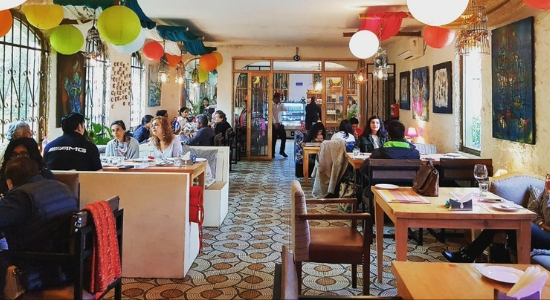
She calls it, “Eclectic home style personalised coop for an unhurried, delicious experience. I would say that we are definitely creating an informal, atmosphere with an accent on creating regulars who like to go to a place where everybody knows their name and they are recognised.”
The Culinary Beginning
From since I was a teen, I dreamt of how it would look; what kind of plating I would do; the dishes I would present and the ambience I would create; and so on. Opening a restaurant resided in my being long before it was popular to do so, it was not a question of why it was when would it happen.
The journey was almost like manifesting your dream “Rhonda Bryan Secret” style.
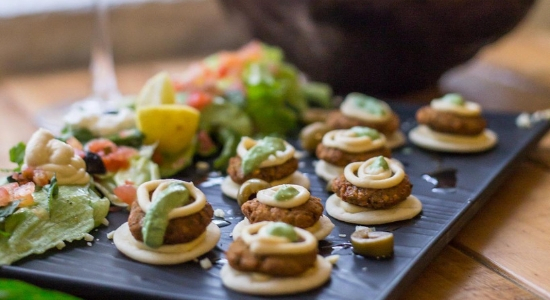
The offer fell in my lap without looking for it. My first partner and friend found us a place in Khan Market when hardly any restaurant existed there; it was a sleepy neighbourhood market with chemists, vets and greengrocers. We started the erstwhile “Cafe Zaffiro” back in 2003. I had a catering background and experience of cooking for parties professionally; my only education was non-formal training at pizzerias and taverns in Italy, and at homes with the Italian “mammas”.
Key Learnings so far during the Entrepreneurial Journey
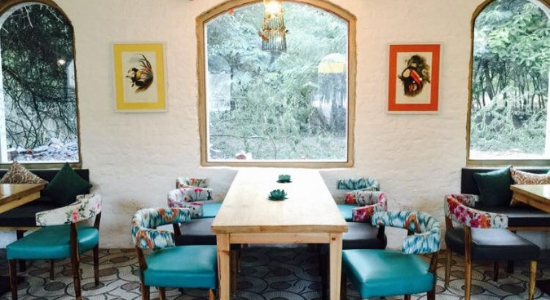
- Be obsessive and passionate that’s the only way to run your restaurant.
- Take constructive criticism and ignore advice that is unsolicited, follow your gut always
- Take care of people who work with you and for you first and keep them happy and nourished
Ingredients to Success
At the risk of sounding clichéd: Dedication, Patience, Confidence and be supportive of your workers and staff.
Passion for F&B or Business Sense?
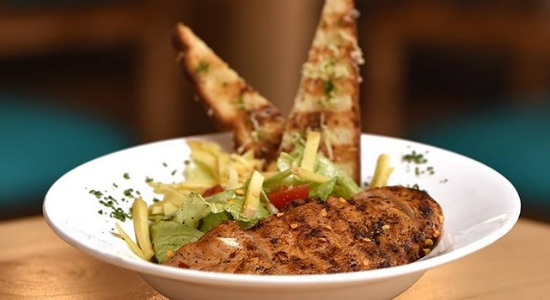
Of course both in equal amounts; one doesn’t exist without the other.
If you have a partner then one takes care of the food and the other business management.
Or you have to imbibe both qualities. A restaurant is a business that has to make money to keep afloat, 80 per cent of the population seems to think they can open a restaurant business successfully but it’s a worldwide phenomenon that most of these places close down within the first six months.
It’s a tough line that demands your time and attention 24x7.
You need to be astute in business and very creative with food to keep ahead of others in this highly competitive game.
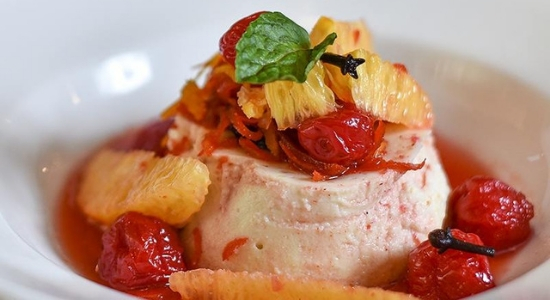
Since I don’t believe in marketing, we get the kind of people that completely embrace the concept of the place, by word-of-mouth publicity and genuine interest and love of this place. Quite naturally and not out of force and gimmicks do people come and gather here slowly but steadily. We cater to people who enjoy our personal hospitality and we enjoy their interest in us and our food.
We do outdoor catering, serve alcohol, and related products, even some furniture; make use of all the space by catering to in-house parties and serve buffet style food forget together since we are fortunate enough to have a big space.
We have so much scope for expansion just based on this model.
Plans for Expansion
My next restaurant will be a Gujarati food, pure vegetarian enterprise.
This is because the world is moving towards vegetarianism and I’m a Gujarati.
The location has never been an important aspect for me; people find you if you are good and reach you somehow, some of my old locations are proof of that.

Chef Chalapathi Rao, fondly known as Chef Challu, is one of the finest chefs serving South Indian cuisines in Hyderabad and abroad.
In an interview with Restaurant India, Chef Chalapathi Rao, owner of Simply South, talks about the expansion and growth plans of his restaurant.
Food Trends Are Like Fashion
Food trends and food facts are something like fashion. Everything has a shelf life. I started my journey almost two and a half decades back. The trends then were different. After that fusion and molecular food concept came to the fore. Now, again the industry is going back to the ancient grains and foods, and cooking methods also.
In the next few years, I see more of presentations and styling, if I talk about global trends.
'Entrepreneurial Journey is Quite Different from Being a Chef'
I was a chef at ITC hotel for almost two decades; I joined as a management trainee. I sharpened my skills in cooking. What I used to do for my personal growth was to go and visit different places and learn the cuisine from the traditional people of that particular place; this helped me in my personal growth. And if everything permitted, I would invite people, from whom I learnt the cuisine. I would let them taste the food and give me feedback.
Redefining the cuisine happens from what we do at home or at commercial establishments. Five years back, when I started my journey as an entrepreneur, it was very different. In a hotel restaurant, if any of the cooking equipment won’t work, the team will immediately act on it. Even if you want something else, you go straight to the purchasing department and tell them what all is missing; they will get it for you. But when you are an entrepreneur, you are a one-man army. You are the valet to the security guard yourself. It’s a great and challenging role. In a standalone restaurant setup, your mindset has to be different from what you have in a hotel.
Key Accomplishments of Simply South in 2018
In 2018, we were ranked by Conde Nast among the top 50 restaurants. The Week Magazine, which did a survey in various cities, had mentioned Simply South as one of the best South Indian restaurants in Hyderabad. If I talk about the revenue generation, overall, the restaurant has been in profit. When you have multiple ventures, one brand might be doing well and others may not; that balances. Overall the company is in good health.
Presence of Simply South in India and abroad and the expansion plans
Presently, in India, we are only in Hyderabad. We are working to open an outlet in Singapore; we had registered the brand in Singapore already. Our endeavour is to open two outlets in 2019; I cannot tell the locations right now. It might be Singapore and Bengaluru or Singapore and Hyderabad. Our endeavour is to be present in five different countries or cities in the next five years.
Take on Serving Authentic South Indian Dishes at Simply South
When we were opening Simply South, there was a lot of thought process that went into it. If you come to Simply South you won’t find any other food item on the menu except a south Indian, not even paneer. That’s the concept we have faith in and are still serving. It depends on the micro and macro market; demand changes. To give an example, at Hi-tech City which is a business branch, there we had thalis but people were asking for the buffet. Since there were many working professionals and probably they had an hour-break, we did a buffet out there, but maintaining on what we serve - South Indian dishes. We try to innovate within the gamut of South Indian cuisines.
Celebrating Food at Simply South
Food and culture go hand in hand. You cannot separate them. A community plays an important role in treating cuisine. Our focus is to put dishes of various communities or regions. For example, last year we did a food festival at Christmas. We did the regional cuisines from Kerala. Two years back, we had done what Christians eat during Christmas in South. On Eid-ul-Adha, we were probably the first restaurant in Hyderabad to do a dastarkhwan. We did murg shorba, mutton biryani, mutton korma, kaleji fry and more. We try to celebrate all Indian festivals as much as possible.

Minakshi Singh always dreamt to open her own bar. In 2012, she, finally, got the opportunity when she opened Cocktails & Dreams, Speakeasy in partnership with Yangdup Lama; she had quit her job. She is someone who made her first business plan back in 2005, and still cherishes that excel sheet!
A hotel management graduate from IHM Pusa, New Delhi, while at college she dabbled into bartending for pocket money, and that’s where her excitement for the alco-bev industry came from.
In an interview with Restaurant India, Minakshi Singh, owner and partner at Sidecar and Cocktails & Dreams, Speakeasy talks about her journey as a women entrepreneur in the restaurant industry.
Her Journey in the Hospitality Industry
After I graduated from IHM Pusa, I attended a six-month course at a bartending school Cocktails & Dreams in Delhi by Yangdup Lama, a very well-known and highly respected mixologist, trainer, and author. I enjoyed serving guests, and loved the subject and wanted to learn everything. I joined Tulleeho, an alco-bev industry consultancy; it gave me a better understanding of how to run a business. Later, I joined Diageo and worked on brands like Smirnoff and Captain Morgan, and then Trade marketing for international brands such as Chivas Regal, Absolut Vodka, and Glenlivet at Pernod Ricard. While working in brand marketing, on-trade promotions, and activation segments, my real love remained with running my own bar.
Key Learnings during the Entrepreneurial Journey
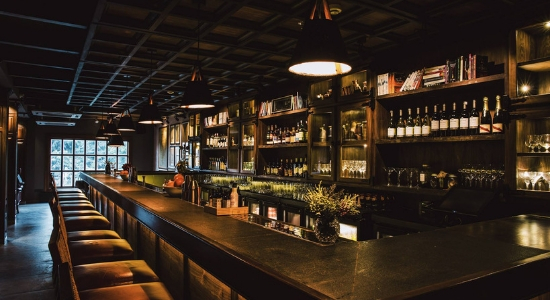
Sidecar restaurant
It is really tough; almost everything works against you - laws, taxes and rentals. You should stay focused on your dream, and keep going. You will always second guess everything but listen to your instincts because they will always guide you.
Take criticisms positively. While there will be all sorts of feedback – negative and constructive - focus on improving. Initially, these things will overpower me but gradually I realized these feedbacks, at least some percentage of it, are true. Make it better for yourself.
Connect with your guests/customers. It is very important to understand your guests and their needs. At a macro level, we all have a target consumer base but at the ground level, it’s important to interact and get to know all your diners. It sharpens your business sense, and you make friends in the bargain!
Business sense is primary. Having a passion for food and beverage is a must but if you don’t understand the business, the operations and the costs, you will have a tough time running it.
The Clientele
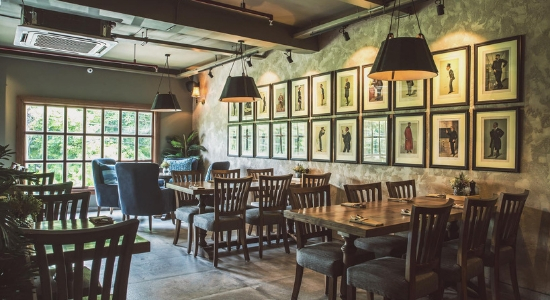
Sidecar restaurant
Gurugram’s clientele is mostly upwardly mobile, well-travelled corporate who love to experiment, and are highly engaging. In Delhi, I am just getting to know the guests as we are fairly new (only three months old at Sidecar). In Delhi, we have, so far, seen artistic, independent and quite an experimental clientele.
A Great Bar Experience
If I have to describe my restaurant in one line, it will be - A Bartenders’ Bar. Both our bars are centrally designed and meant for a great bar experience. Not only for the guests but also for the bartenders in our team. We are constantly innovating our drinks list, specials, and cocktail programs. There is excitement in the bar all the time. As of now, we are working on the Spring summer menu for both the bars and we are buzzing with ideas and deadlines!
Footfall at Sidecar
We average about 60-70 pax daily average at Cocktails and Dreams, Speakeasy (lovingly referred to as Speaks).
Revenue Model and Expansion Plans
We are on a 70:30, beverage: food split, and are highly focused on our drinks program. The food supports the amazing experience that you get at the bar. As we have recently opened our second outlet, Sidecar – an artisanal cocktail bar, three months ago, this year will be about getting to the Delhi clientele and reaching out.
Favourite Item on Menu
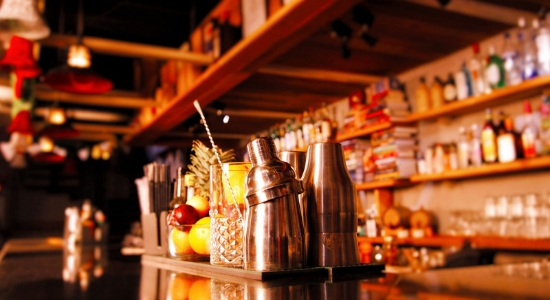
Sidecar restaurant
Since the recipe is of my husband’s, I absolutely love the Rosemary Chicken from the Speaks menu; I especially love the Pork belly Yakitori at Sidecar.
In drinks, I am a fan of our Old fashioned, and at Sidecar, I love the Nebraska, which is made with Bourbon, homemade corn puree and orange served straight up.
About Location
It will be another great neighbourhood bar, where the bartender is the hero!
In today’s day and age, location is paramount. When we opened our first bar in Sector 15 in Gurugram in 2012 — it is considered to be a low footfall and quite place — we had a tough time reaching out and making it work. It took us more than a year to start making any real profits; it was a difficult journey for us. So, I now feel if you can get low to a decent rental location in a good footfall area, go for it.
Key Challenges Faced as a Woman Entrepreneur
It was quite funny dealing with cops; they almost never acknowledged or spoke to me directly. Whenever I visited government offices for any work, I was always asked to accompany as a prop, and I felt the surprise on their faces, when they realised I can talk! I simply went ahead and talked unabashedly, as there was not much to overcome.
Working in an all-male staff was initially quite challenging. There were times when I felt the need to prove that I also know my beverages, and the industry. It takes time to build trust and confidence.
Important Ingredients for Success
It might sound like a cliché but there are no shorts cuts. Perseverance, Hard work, and Passion for your work always shows and shines.

Award-winning Celebrity Chef Dipna Anand grew up in and around food industry. Her grandfather started the first Brilliant restaurant in Nairobi, Kenya in the 1950s; “It was a very much family affair,” Dipna recalls.
Dipna co-owns Brilliant in Southall and is the owner of Dip in Brilliant, a Punjabi café in Fulham, next to Chelsea Football Club.
In a tête-à-tête with Restaurant India, Celebrity Chef and restaurateur Dipna Anand speaks about her entrepreneurial journey with Brilliant and her new venture Dip in Brilliant.
Brilliant’s Journey From 36-Seat to 250+ Seater Restaurant
“It’s a very daring name. With the name like Brilliant, you cannot be anything less than Brilliant,” Gordon Ramsay had said once.
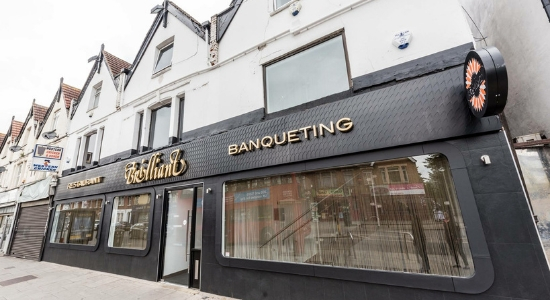
My dad used to help his brothers and sisters; they all were very much involved in the restaurant business in Kenya. And then there was a political issue back in Kenya when some of the family migrated to London. They had to leave the restaurant behind. Unfortunately, during that time my grandfather had passed away. My dad, his brothers and sisters wanted to kind of continue the name and the tradition. Within a few years my dad’s brother, Kewal, found a place in Southall. We started then with a 36-seat restaurant. Within no time we started gaining recognition - lots of them had migrated from Kenya to London – as people would recognise the name and that’s how Brilliant became more popular.
We went from a 36-seat restaurant to a 250+ seater. The popularity grew organically. Today, we boast a reputation of more than 60 years of experience in the catering and hospitality industry. Of course, during that time my dad was running the restaurant in Southall. My mom would help dad in his restaurant business. She is a supercook but my dad is the main chef.
I think in the restaurant industry, it’s very important that you become a people’s person. You have to get that charisma, passion and show people that you are actually there to cater to their needs and giving them a great dining experience. Whosoever comes at Brilliant should say that they had a brilliant time at the restaurant.
Consistency and Outstanding Food Are the Keys
Chefs might change but my dad trains the new chefs on the recipes and, therefore, the recipes never change. That’s the beauty of Brilliant – outstanding food, quality is always the same, consistency is maintained.
On a typical Saturday, the footfall at Brilliant Southall is 200 and at Dip in Brilliant Fulham, it is 50.
Must Read: 15 Inspiring Indian Women in F&B Industry
External funding
My Fulham restaurant is a limited company and Southall one is in partnership. Till now, we didn’t get any external funding. We still consider it as an SME because we have less than 20 employees. A lot of people had asked for the franchise but we have been refusing so far. We might look about it in the future.
Dipna’s Journey as a Restaurateur
From the young age of six or seven, I remember going to the restaurant with my brother and trying to be helpful to my parents. I would ask my parents the questions related to the restaurant and that’s where my passion grew while watching them. I’m very much the people’s person.
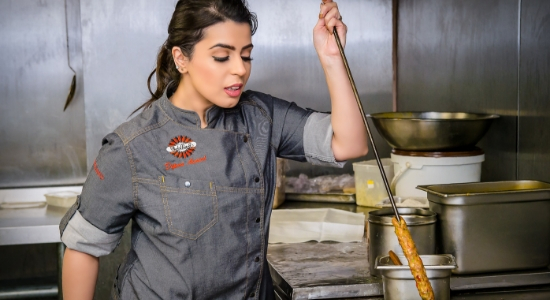
At school, I wasn’t very good at the academic subjects. I was good at food technology and sports. I knew I need to carry on something vocational. And food is something I had a passion for. My career took off when I won a national award on one of my food technology projects – Low Fat Indian Food - presented by the British Nutrition Foundation. I had put low-fat Indian food in my restaurant’s menu as well. After winning this award, I decided to go to the University of London and do food technology in hospitality and catering. While I was doing my Masters, I was offered to teach at the University. I was teaching Indian cuisines; it’s been 13 years now. I won my second award presented by David Cameron as the Industry Personality of the Year.
“I see my failures as learning curves and I see them as a challenge. I like to reflect. With whatever I do, I reflect on what did I learn and how I could do it better. For me, failure is never a failure.”
About Dip in Brilliant
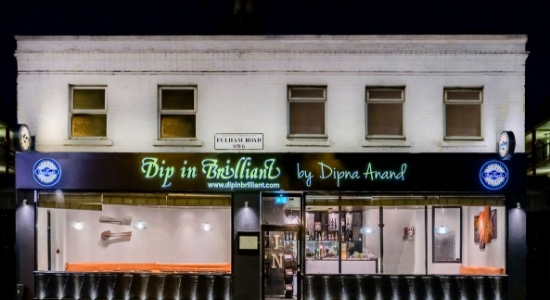
I made my dad’s dream come true with my first cookbook, Beyond Brilliant; it has the recipes of my grandfather. After my first cookbook, I launched my first cookery school in Southall in London. In between, I had also done my own TV series on B4U Music called Dip in Kitchen. It was Indian cooking with a few contemporary twists. Recently, I launched my second book called Dip in Brilliant, after I opened my second restaurant with the same name in Fulham. It has got a smaller menu as the place is very small. But I call it a trendy Punjabi Café because I want that restaurant to be something that explains me – trendy and cool.
Also Read: Effective Restaurant Marketing Strategies By Chef Anaida Parvaneh
‘Vocational Course in Cooking Should Be Made Compulsory at Schools’
In the UK, there is not enough emphasis in schools on vocational qualifications like food technology because it’s not compulsory to cook. When I go to the schools and talk to them, they are wowed by the cooking and then I do the cookery course with them. And it’s quite shocking that some of them don’t know the name of vegetables, even the simplest ones like mushrooms.
We need to educate more youngsters that there is such a profession in hospitality and catering.
‘You Can Always Tweak A Dish, But Don’t Confuse It’
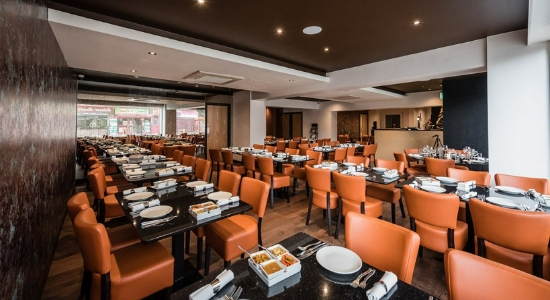
We have got so many spices but a lot of people don’t know their health benefits. There are hundreds of ways to cook Punjabi food - this fact has been passed on to us from generations to generations. I don’t think fusion is wrong but when you confuse the dish, it’s the problem. You can always tweak it. For example, soya sauce into a traditional palak chicken – it’s game over! You got to know how to balance the flavours.
Pros and Cons of being in a Family Business
Our restaurant is family run; it’s me, dad and my brother. Three of us run Brilliant in Southall and Dip in Brilliant in Fulham, London and it’s fantastic. We do have sometimes disagreement like in every family business and that’s how we make decisions.
There are more advantages in a family-run business – firstly, they say teamwork is a dream work and for us it does. It’s a family affair and we are successful because of this fact. We don’t leave our restaurants for the managers to run. We run the restaurants ourselves. And for us, that is the sole reason why we are successful.
Secret Recipe to Success
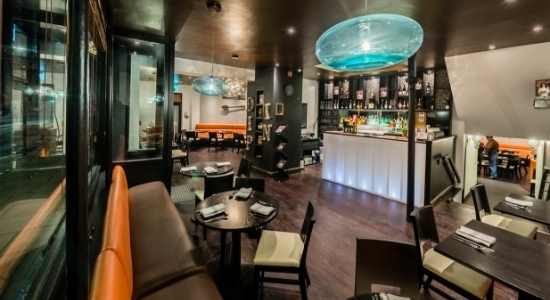
A strong family bond and togetherness have made us succeed. My father is the role model. I love his autocratic management style, and I see a lot of my father in me now. He is a very strong-minded person; he knows how to get the work done. And I am following his footsteps now. That’s most definitely one of the reasons why we are successful.
Tips for Aspiring Chefs
Have confidence in the kitchen - It doesn’t matter if you don’t know how to chop an onion. Nothing can stop you from learning. If you chop it wrong the first time, do it again and again, until you get it right. I teach 13-14 year olds how to roll a chapati.
Make the Use of Social Media - Let’s say someone is a home chef and is passionate about cooking. I would tell them to share on social media whatever they are cooking even if they are making an omelette, share on Facebook and Instagram.
Don’t be scared to enter the kitchen and experiment because you never know what you can come up with.
Don’t be reluctant to play with the spices. If you are missing a certain ingredient like in my biryani you might not be able to get whole coriander – leave it out and continue. Have that kind of attitude and continue.
Click To Read More Stories on Women Entrepreneurs

Chef and Restaurateur Romy Gill of Romy’s Kitchen was born and brought up in West Bengal; “In a very small town Burnpur Steel Plant of IISCO township,” as she says. The food is she serves at Romy’s Kitchen tells a lot about her journey on how she grew up eating in a Punjabi family and Bengal.
In tête-à-tête with Restaurant India, Head Chef and Owner of Romy's Kitchen, Romy Gill shares about her struggles and how did she overcome the challenges as a woman restaurateur in the UK.
About Romy Gill's Culinary Journey
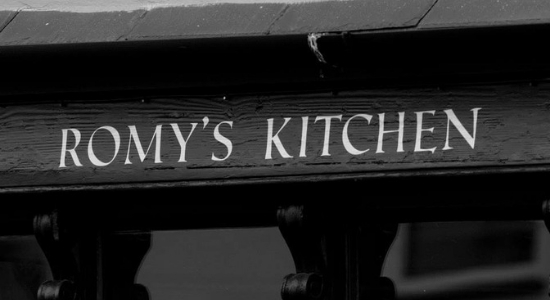
On the train journey from Burnpur to Punjab, my mom used to make food to be carried; we didn’t fly during those times. I relish those memories, the food I grew up eating. I moved to the UK at the age of 22; I was excited. But after a week, I started missing my family and friends and even food that I grew up eating. My husband saw a kind of stress and anxiety I had. I am very much British but I am an Indian. I have two traditions, but I always look back to my roots where I grew up.
Also Read: “Women Entrepreneurs Are Not Taken Seriously”
How Romy’s Kitchen was Born
I started my journey from my kitchen and, hence, the name Romy’s Kitchen. Previously, I started with catering and doing the sources and stuff from my kitchen.
Opening in a small town Thornbury in England was my decision because I wanted to be with my daughters as they were very young then. So when I had the courage and found the right place to open the restaurant, I went ahead. When I found the right place, the planners didn’t give me planning. It took three and a half years, and it took nine months to finish it actually.
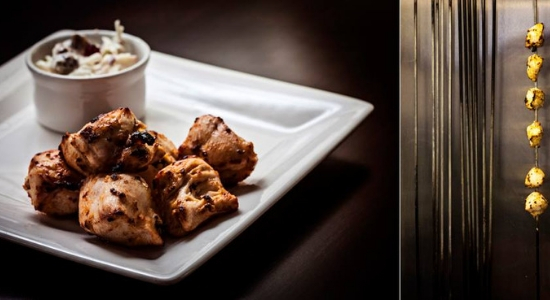
Being a woman and a brown person and being someone who has never worked in the industry, banks would not give me loans. There were three different things that came against me but we fought. Even, I sold the jewellery which my parents had gifted me. Not many husbands would support neither many women would take the risk but for me, I believed and still believe life had amazing opportunities. When one door is closed the other gets opened. You should never be afraid of asking people for support. You never know what they are going to say. Opening a restaurant gave me a lot of opportunities.
Bestsellers at Romy’s Kitchen
My favourite ingredient is panchphoran and tamarind. We poach the Octopus, marinate with tamarind and cook with panchphoran. It is one of the bestsellers at our restaurant.
Romy Gill on Getting an MBE
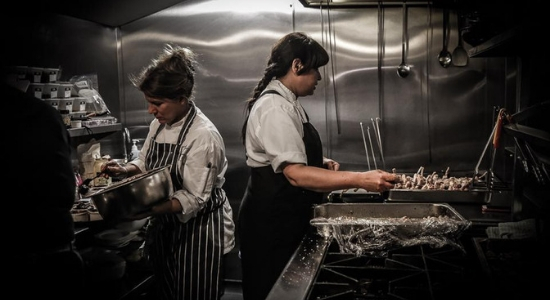
Whatever comes to you is according to your ability. It was my selfishness that I worked on myself. I wanted to be selfish within me. Back then I never knew what an MBE was and I never thought about it. When I got a letter from the Queen that I am receiving an MBE, my daughters were more excited. It happened because of the efforts of my team. Without a team you are nothing. The experience of a first Indian woman to open a restaurant in Britain and the first Indian woman chef to get an MBE proves anyone can do it if they have passion and supportive people.
Secret Recipe to Entrepreneurial Success
I don’t want to be anybody else. I want to be me. I think about my customers and how the food will taste. I make my staff taste the food before it goes to the customers’ tables. All my staff is British, because it’s where I am, in a very small town. I want to train people who want to work with me. I am not one of those people who would just crusade for a women-only staff.
What I am today is because of my husband and daughters. He is my backbone and helps me with everything. You had to have a person who really believes in you and my husband did. Besides, I am also a very strong-minded person. I don’t care what anyone else says. I do what I want, but not negatively.
Key Learning
It’s not about my food is better than yours. I love working with male chefs because they never say I am better than you. They might say among themselves but they really respect you as a chef. I find hard working with women as they have that tendency to say ‘I am better than you’, though not all women say so. Most of the times women don’t help each other; they are the worst enemies of each other.
Take on Modern Indian Food
My food is very traditional. If I am doing an Octopus or a Crab dish, it doesn’t mean that I am forgetting my roots. It’s just creating something. Indian spices are wonderful. We are so lucky to be in the country. Young generation should understand. Like one should eat flaxseed (alsi) only for two months and in winter. You should never take it in summer. Understand the spices and ingredients before you use them.
Click To Read More Stories on Women Entrepreneurs

Shikha Pahwa, an International Business post-graduate from the University of Leeds, had never imagined opening a restaurant or anything related to hospitality. She tried her hand at a desk job for a year and realized it wasn't for her. It was during here University days that she had developed an interest in coffee and cooking. With a simultaneous interest in fitness/distance-running, she was keen on doing something where she could incorporate her passion in both these fields. With Cafe Qahwa, she has created a unique space, which offers a very trendy, feel-good menu as well as a great coffee blend.
Shikha has also pursued her other passion, distance running, alongside and with that niche, personal experience, she was able to incorporate the health aspect into the Qahwa menu. For instance, a recent addition has been the Qahwa Activisers’ menu, which is specially designed for anyone who loves being active and energetic. She has always tried to utilize her knowledge and perspective as an athlete to add a special touch to her culinary contributions.
In an interview with Restaurant India, Shikha Pahwa, owner of Cafe Qahwa, talks about the challenges she had faced as a woman restaurateur.
The Love of Coffee Led to the Opening of Cafe Qahwa
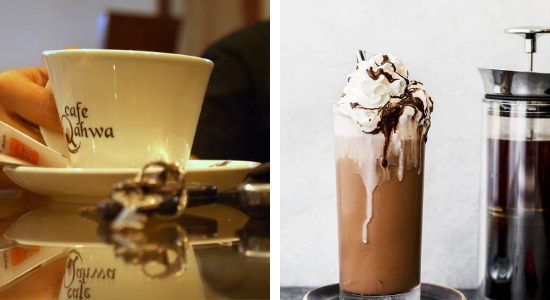
Pic Credits: Cafe Qahwa, Delhi
It was primarily for the love of coffee. I used to look for places with good coffee and, slowly, ran out of options. Another reason was the rarity of restaurants with early breakfast. It was also quite hard to find healthy options – being an athlete, I have a more energy and health-oriented diet since the usual Delhi food is quite heavy. I wanted to create a unique space where foodies could also enjoy a fantastic coffee blend, apart from freshly-prepared quality food (even early in the morning!), and of course a more well-balanced menu.
A Self-Taught Chef
Apart from the research and time spent on finding the perfect location and people to set up the place, I wanted to learn more about the product I wanted to sell. I attended some workshops on coffee – I studied coffee processing, roasting, preparing, etc to acquire as much knowledge as possible. I also took up a temporary job at a cafe to see how a kitchen functions, as I had no background in hospitality. Since then, I have spent most of my time in the kitchen, experimenting and perfecting food recipes. I am a self-taught chef and there is always much more to learn!
Key Things Shikha Pahwa Figured Out During Her Entrepreneurial Journey
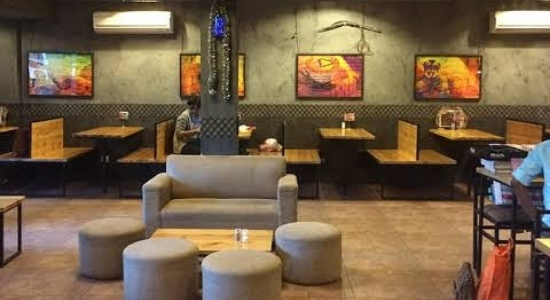
Pic Credits: Cafe Qahwa, Delhi
- It is important to be able to fill into any position in the business. Unforeseen circumstances occur sooner rather than later and doing that could save time and money.
- Changes are always welcome. Whether it is for the customers or the employees, anything different or new can help in giving new perspectives.
- A team works better if they’re given a little flexibility. It may not be exactly as per the books, but sometimes ignoring smaller things can help achieve something bigger and more impactful.
Must Read: Approach Investors With A Clear Business Plan: Michelin-Star Chef Garima Arora’s Advice To Restaurant Startups
Business Sense and Food, Both are Equally Important for a Restaurateur
It is difficult to pick one, both are equally important. Food is the core, the foundation of the restaurant; while the business sense drives it forward.
Cafe Qahwa’s Menu is Especially Crafted for Energy Lovers
There is a great mix of people that we host at Qahwa. It’s not just restricted to families, students and working people- we also have groups of runners, cyclists, board-gamers, poets/writers, motorcyclists& many more. Being a marathon runner myself, I know many of our regulars who are athletes or even active individuals. In fact, I, recently, launched a Qahwa Activisers’ menu for just this kind of audience; this menu is specially crafted for energy lovers.
Cafe Qahwa is an Urban, Feel-good Restaurant
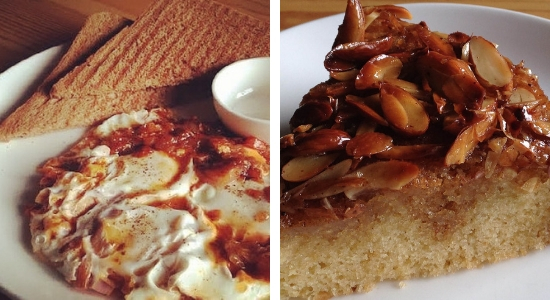
Pic Credits: Cafe Qahwa, Delhi
An urban, feel-good restaurant where we serve fresh, delicious and unique soul food and aim to combine the casual cafe atmosphere with a diner style menu.
Qahwa's ambience is casual and laid-back, plus the menu offers freshly-made meals for any time of the day, including all-day breakfast in Delhi. In addition to that, the coffee menu is extensive and creative. In fact, we have many unique flavour combinations/recipes, that are rarely seen, in our menu. We have a well-balanced menu that focuses on flavour as well as on health and well-being.
Footfall at Cafe Qahwa
Approximately 200 people on weekdays and 350 people on weekends visit Cafe Qahwa.
The Expansion Plans
We serve a full-fledged food and beverage menu daily from 7 am to 11 pm. We also specialize in group reservations and cater to a variety of organised groups/events. I do plan to expand in the near future.
Also Read: Effective Restaurant Marketing Strategies By Chef Anaida Parvaneh
Favourite Item on the Menu
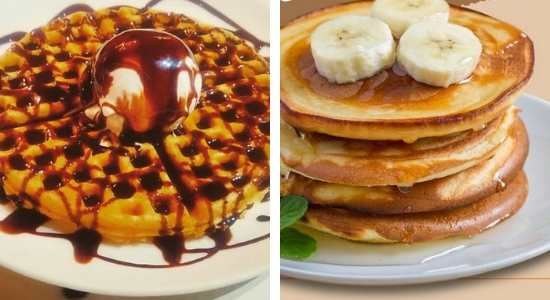
Pic Credits: Cafe Qahwa, Delhi
The latest addition to the menu – Biryani. Having had no professional training per se, it took a lot of time and patience in getting this dish right. It was a learning experience, but it was definitely worth all the effort. In the end, what I achieved was a flavourful, yet, relatively healthier Biryani, with a completely unique and in-house blend of spices.
Cafe Qahwa is one-of-its-kind
Definitely another Qahwa, if I have to open another restaurant! I believe Qahwa is one of a kind and would like to continue on the same path.
About the Location of a Restaurant
Location is key for any restaurant. We would have to look at the possible accessibility it would have to the clientele we would like to target.
Challenges Faced as a Woman Entrepreneur
Unfortunately, women entrepreneurs are not taken seriously, whether it is sourcing raw material from vendors or acquiring the licenses/permissions from the government authorities. It is a harsh reality, but one which has to be accepted in practicality. It is only determination and perseverance that has allowed me to get this far.
In Pics: 7 Women Changing Food Service Scene In India
Key Learnings
Something or the other will always go wrong. It’s better to be prepared with back-up/alternatives.
- Product quality is extremely critical and deserves ample attention.
- Staffing will always be a challenge and your key strength.
- Be open to criticism and develop a thick skin!
Click To Read More Stories on Women Entrepreneurs

Chef, foodie and businesswoman Pallavi Jayswal is a force to be reckoned with. A culinary wizard, she has achieved multiple feathers in her relatively short career. During these years she has worked with multiple restaurants and brands. Her love for food and entrepreneurship led her to start Uno Más, a Spanish Tapas Bar. She is also the co-founder of Nessun Dorma Food Ventures.
Her first official culinary job was at the mecca of Indian fine dine, Indigo Restaurant at Colaba. She was entrusted to handle an entire section of the kitchen. She reminisces her time there by the fast-paced dinner services and long working hours. She has a Diplôme de Cuisine from Le Cordon Bleu, London and a Level 2 in Wines and Spirits, awarded by the Wine and Spirit Education Trust.
In an interview with Restaurant India, Pallavi Jayswal, Chef and Co-founder, Uno Más - Tapas Bar Kitchen, talks about her journey as a chefpreneur.
“It is an Exciting Time to be in the Food Business”
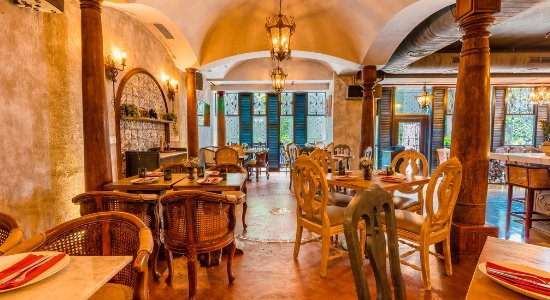
Interiors of Uno Más - Tapas Bar Kitchen
As compared to the past, consumer culinary trends have progressed by leaps and we are seeing a much evolved Indian clientele that visits our restaurant these days. These guests are well travelled, well-read, curious and extremely aware of food, flavour and overall experience. This is the greatest challenge and compliment as a chef. Having the chance to put out something of your own making, and seeing it, satisfy this refined palate.
The Pros and Cons of Being a Chefpreneur
There are only Pros to being a chefpreneur. It actually simplifies the thought process. There’s never a struggle between innovating in the kitchen and having a guest-friendly offering, tailor-made by your own flavour preferences. Ultimately, it’s the guests’ satisfaction and team's development that’s the broad focus in all decisions. The opportunity to have a voice in the culinary scene, and seek like-minded individuals whose growth I have an opportunity to assist in. The greatest satisfaction is the opportunity to wear both the white cap as well as the corporate suit.
Secret Recipe For Success
Consistency! Delivering new and innovative flavours in an ever-welcoming ambience with an honest warmth in the service of our guests day after day.
Main Challenges While Starting Uno Más
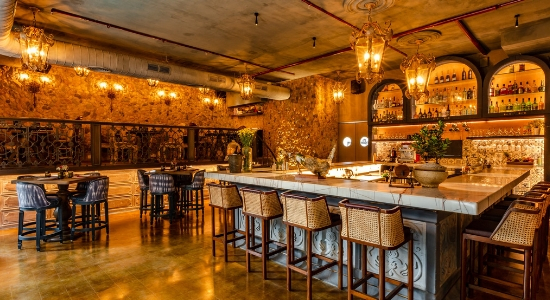
Interiors of Uno Más - Tapas Bar Kitchen
One of the key challenges was choosing our team and being chosen by them. We were extremely particular of whom we wanted to work with and that took substantial time and effort. We persisted but did not compromise even though our selection rate was pretty abysmal. We gave ourselves more time than most to choose and train the best!
Must Read: 15 Inspiring Indian Women in F&B
Key Marketing Strategies with Uno Más
Our priority has always been to provide the overall experience. Food, drink, ambience and guest experience. To say one supersedes the other would be a step in the wrong direction. When you visit Uno Más, our hope is to have you savour every element of the journey that has brought about our offering. Whether it is sipping Sangria at the cantinas of Seville or admiring the bóvedas over the verandahs in Mallorca; the Patatas Bravas on a balcony overlooking the bustle of Madrid or the mystique in the Flamenco in Granada. Our strategy has always been the experience from Hola! to Bienvenidos Amigos to Muchas Gracias.
Also Read: Effective Restaurant Marketing Strategies By Chef Anaida Parvaneh
Catering to Indian Tastebuds
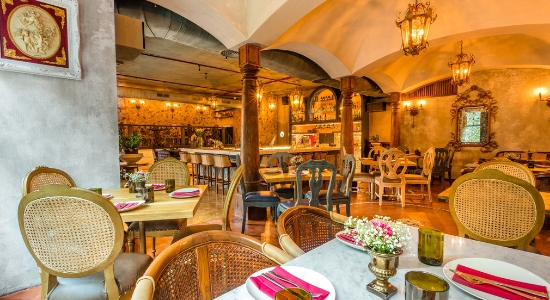
Interiors of Uno Más - Tapas Bar Kitchen
It is a demanding task to present international cuisine with a mild and more subtle flavour profile because as Indians we are used to eating a whole lot of spice. At Uno Más, we’ve paid heed to that and tried to present Spanish cuisine with an Indian heart with the use of subtle, memorable spices without compromising on the Spanish flavours. This has been very well received by our guests. Making vegetables more interesting for Indian guests is always a challenge because most vegetarians, sadly, do not like to experiment with new vegetables.
In Pics: 7 Women Changing Food Service Scene In India
Approach Towards Supply Chain Management at Uno Más
We are very particular about the produce that we bring in to our restaurant which means the best of Spain and Europe (Olives, Olive oil, Cured meats, cheese etc.) to the best of sustainable local produce. We have partnered with trusted importers, artisanal confectioners, responsible growers and process driven suppliers to bring a high-quality offering to the table.
Food and Drinks People Order More at the Restaurant
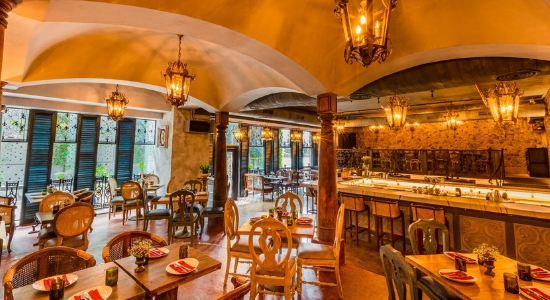
Interiors of Uno Más - Tapas Bar Kitchen
We are so pleased to have seemingly been able to imbibe the heart of India with the soul of Spain. While our signature tapas like the Gambas Al Ajillo (Garlic prawns cooked in prawn head oil) and the Patatas Bravas (Crispy baby potatoes in smoked salsa brava with garlic aioli) are definitely amongst the most coveted finger foods on offer, the Sunday Roast (Black spiced whole roast chicken) seems the likely choice for brunch with friends and family over the weekend. The Shroom, and The Frenchie, certainly seem to leave our guests calling for Uno Más where the tipple is the name of the game. For desserts, it's Churros for the win by far.
These, mainly because the Paella de Marisco or Sangria Tinto might just sound overly generic for a Spanish restaurant in BKC, right?
Presence, Growth and Expansion Plans
At Nessun Dorma, we are all about the unpretentious, wholesome dining experience that has the ability to transport you to our travels around the globe. The response to our first venture has been overwhelming and this is definitely the inspiration for more to come. Uno Más we say!

Exposed to European waterfronts from an early age, Aishwarya Bhende, Director, AB Celestial, realized how they boosted tourism in those countries. Back home at the commercial capital, she saw a huge opportunity on its seaside which could add jewels to the crown of the city – Mumbai Skyline. What followed was a vision to boost Mumbai’s Tourism and Hospitality sector and move towards aiding the Indian economy.
This vision gave birth to an extensive three-year process of building India’s first floating restaurant in a revenue-sharing partnership with the Government.
Setting up AB Celestial through 108 government permissions, establishing and sourcing interiors for the four-themed layers of the restaurant to recruiting all staff for operations, Aishwarya has set the backbone for each process. The restaurant offers excellent delicacies from Indian, Continental and Asian cuisines with a fine, opulent ambience.
More than being a disruptor in the industry, AB Celestial opened up a huge scope for other people to do business in the waters and this learning that has driven Aishwarya's vision to contribute towards the industry and the country's future.
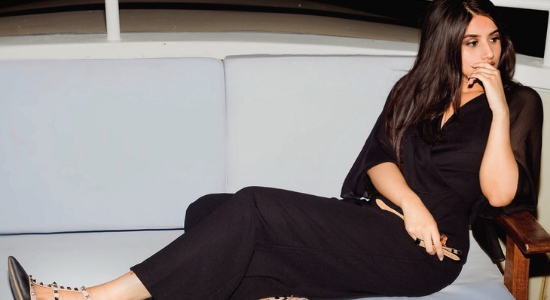
In an exclusive interview with Restaurant India, Aishwarya Bhende, Director, AB Celestial, talks about the key challenges she faced in setting up the first floatel restaurant in the country.
While setting up India’s first floating restaurant what were the interesting facts about the F&B and hospitality industry that you came across?
AB Celestial’s main aim was to help boost tourism in India and give back to Mumbai’s well-deserved coastline, add a jewel to the crown of the city.
I found out tourism in India provides 40 million jobs and AB Celestial gave me a chance not only to help increase the tourism sector but also create jobs locally
I was so proud to know that the Indian Hotel Industry holds a special place in the International world of hospitality. So we chose the boat very carefully; it was built in Florida and there are only seven such vessels in the world.
India also holds prominence in the list of the top ten counties for overall food and beverage industry at a market size of $400 billion. The tourism here has definitely helped more people in the world know about our various cultures and cuisines.
Also Read: Experience Luxury Dining At These Two New Floatels In Mumbai
Tell us more about the revenue-sharing partnership with the Government.
Our revenue - sharing partnership is with the state government of Maharashtra. The vision behind investing in a business like Celestial was to boost the tourism sector adding to the growth of the economy. We look at growing this business to other waterfronts of the country soon. Thus, we share our revenue with the three government bodies - Maharashtra Tourism Development Corporation (MTDC), Maharashtra Maritime Board and Maharashtra State Road Development Corporation (MSRDC).
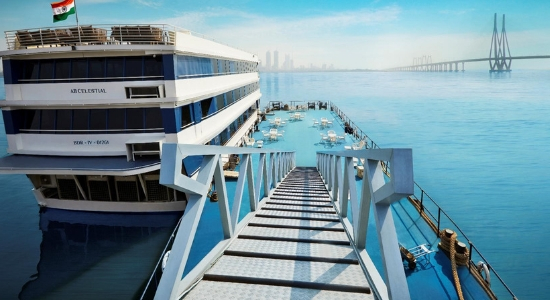
What were the key challenges you faced in setting up the floatel restaurant in India? How did you overcome them?
- Before we acquired permissions, the whole process to get Celestial in India took some time. The boat requires proper service for which it gets sent to the docks every year during monsoon.
- Further, setting up the base for the business required us to get 108 licenses. This number has given us sleepless nights. Since Celestial came under the floating restaurant category which hadn’t been explored enough in Mumbai, there were a new set of rules and regulations brimming up every now and then. We all learnt about them during the process itself.
- Secondly, setting up the interiors took longer than any other restaurant would take (somewhere between 8-9 months). It was a large space which I visioned would have a luxurious outlook but at the same time, we wanted for people to relate to space. We went back and forth on this as residential or commercial interiors are totally different than that of a boat.
We wanted people to have an exuberant nautical experience. Not everyone in India gets a chance to travel abroad and visit boats, hence, we wanted to give them a chance to dine on water and under the stars in their own beloved city.
- Patience, dedication and our will to never give up were our biggest drivers to overcome these challenges. Today, Celestial is sailing through its second season smoothly, just like how we planned it to be.
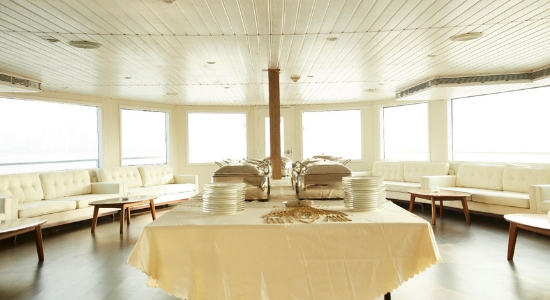
Do these challenges still exist and faced by other floatel owners?
Yes, I personally think there may be a couple of challenges faced by other floatel owners as the concept is relatively new to India. However, now it may not take three years to obtain all the licenses since our efforts were focused to pave the way for the industry to grow further with more similar businesses.
Unfortunately, there are challenges in every business at every stage but the most important part is to find a solution to overcome them and sustain the business.
What does the road to profitability for your floatel business look like?
India is expected to become the fifth largest consumer market in the world by 2025, according to a paper prepared by the Confederation of Indian Industry (CII) and Grant Thornton. During January-July 2018 FEEs from tourism increased 12 per cent year-on-year to US$ 17 billion. I also think the floatel business being such a new concept in India is doing well amongst all age groups. We host all kinds of events; celebrations from weddings to intimate gatherings, corporate presentations to product launches. Our clients range from Indian conglomerates to global corporations like Porche, Google, Amazon Prime, Benz AMG and more. The road to breakeven looks steady and the business will soon become a profitable one.
What are your expansion plans?
For now, I’m focused on giving one more year to build more business for Celestial. Going ahead, I would love to give all the waterfront cities in India a floating restaurant of their own which adds to the tourism of the country.
Things to Know About Celestial Floatel in Mumbai
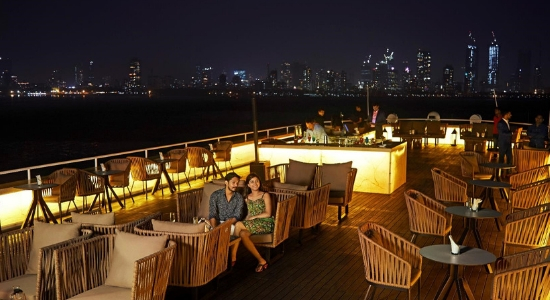
- Celestial houses two multi-cuisine restaurants including a club lounge equipped with a 24-hour coffee shop.
- The Celestial Cafe offers the perfect location for an evening of zen. One can drop by for a cosy cup of coffee paired with the perfect range of desserts or bring your entire family for a laid-back meal. The juxtaposition of the elegance of the setting with the Arabian Sea and the Cafe's nautical theme is surely an experience people keep wanting to revisit.
- Level 2 of AB Celestial, the Celestial Banquet with its gold and white decor is the ultimate setting for any kind of an event. The banquet can cater to a capacity of 150 guests for brunch, high tea, dinner, corporate events, weddings & private parties on booking. The Celestial Banquet creates the perfect celebratory ambience along with a delicious menu. Guests can often rent out the rooms available at additional charges in case of wedding events organized at the banquet
- The Celestial Lounge offers one to transcend from the bustling city to a serene setting. An ideal place to unwind, one can find a fine selection of scotch, malts, and wines combined with an interesting selection of international cuisine here. The resident DJ keeps one in the groove for the whole night.
- The Celestial VIP Deck is a full-service private dining section of AB Celestial. One can bask in the exclusivity of having the best view from the ship. The VIP Deck caters to 2 to 10 people at a time. It is the perfect spot for intimate gatherings, proposals, and important meetings. Space comes with private butler service.
- Celestial SKY gives the opportunity to immerse in the enthralling experience of dining under the stars. An open-air sky bar located on Level 4 of AB Celestial, SKY offers a breathtaking view of the Arabian Sea and Mumbai Coastline. Experience our range of eclectic cocktails and an extensive menu for a night you will not forget.

It was Keshav Prakash's fascination for the untold and unsung histories of fine spirits which led him on a journey to far off lands - Guyana, Guadalajara, Haiti, Kentucky, France, England, Scotland, Italy, America, Mexico, Japan - in search of these spirits and their distillers. During his travels, he also met the 'maestros of fine spirits' - Charles MacLean, Dave Broom, Tomas Estes. Considered as legends in their respective fields, they further fuelled Keshav's passion by sharing with him their knowledge of the most boutique and rare spirits sourced from the remotest corners of the world. Back home, Keshav decided to share these experiences with other like-minded people. And, thus, The Vault was born in 2012 to offer a never before curated collection of artisanal whiskies, rums, tequilas, cognacs, gins and other spirits to connoisseurs and the F&B (food and beverage) trade industry.
Keshav Prakash was also inducted as the Keeper of the Quaich by the Scotch Whisky Industry.
In an interview with Restaurant India, Keshav Prakash, the founder and curator of The Vault, speaks about the whiskey consumption in India.
When the Spirit Story is All About Travel
My spirit story is all about travel. Whenever I travel, I preplan and meet people, especially mixologists from around the world. They are akin to chefs. All my travels - be it Carribean Island, Hakka, Tequila Town, Japan - I like meeting people who have a passion for spirits.
The Handcrafted Beverage Culture in India
Indian spirits and wine industry is very promising and growing. The handcrafted beverage culture in India is growing phenomenally. Especially in the last two-three years, it has grown big time. I see this because when I started The Vault four years ago, I had to struggle so much to tell people about our drink but now people come looking for it. Even if you see the menus at restaurants, especially The Bombay Canteen, there is a big change in the portfolio. The fact that Xico restaurant has an all-tequila menu is amazing.
Also Read: People Choose Home Over Restaurants To Drink Scotch. Know Why?
I feel beverage portfolio go through a sea change in restaurants. It’s no longer the standard cut, copy, paste where almost all the restaurants would serve the same or similar menu because of the limited availability. Now, it is no longer the same. There are so many options.
Bars at Indian Hotel Restaurants vs Standalone Restro Bars
Both are very different. The large hotel chains have a different kind of national policy and a budget. In standalone, you have an individual passion and some of them take it through; the passion of the owners immediately shows up in standalone restro-bars.
Whiskey has a Big Consumption in India
Definitely, whiskey has a big consumption in India. Yet I can see there is a strong search of gin in the last year or so. It will be limited to a small pool of high-end restaurants and hotel bars. Still, gin is making a good on the road. India will always remain a whiskey country.
People Prefer Drinking Classic Cocktails at Restro Bars
In the home they go for an expensive drink, something they bought during their travels and bars while at restaurants they go for classic cocktails; it varies a lot from age to age. You can see the older ones not experimenting so much. The younger audience is open to experiments a bit more.
Click To Read: Home-Grown Concepts Impress Consumers, Says Fruzzante Founder Priyanka Save
Initiatives to Promote a Safe and Responsible Drinking Culture in India
The very fact that we share stories about the spirits is to encourage people to actually spend time appreciating drinks rather than you not drinking too much. That is why we arouse interest in something. For example, when you grasp an interest into craft spirits the appreciation is high; and when the appreciation is high you are approaching things in a very different manner. It’s like fine food. You don’t eat a lot of fine food because the whole way it is kept, served, story-telling, there are lots to know, you tend to eat not that much. Similarly, with appreciation comes responsibility and being careful. We are very much anti towards drink driving.

Karan Tanna, Founder CEO of Yellow Tie Hospitality, started his entrepreneurial journey in the Food and Beverages Industry with the Gujarat-based chain “Kutchi King”. It grew to 200 stores in a course of time. But the growth of “my brand was not sustainable”, admits Karan Tanna, “and there were a few mistakes that we had made”. Despite being the second largest populated country in the world, India didn’t have any home-grown brands with over 1000 stores – the fact struck Karan. “This drew my attention to a huge gap in restaurant franchise management. This particular fact and the opportunity to disrupt it formed the basis of my company, Yellow Tie Hospitality,” says Karan Tanna.
Karan Tanna has also been named in the Entrepreneur India's 35 Under 35 list.
The Highs and Lows of Karan Tanna’s Entrepreneurial Journey
The 31-year-old’s entrepreneurial journey was no cake walk. He opened his first restaurant Goodies in Ahmedabad, Gujarat. “I had to shut down Goodies as I had certain troubles in my partnership. That was probably one of the low phases of my entrepreneurial journey,” says Karan Tanna. Because of his ‘never-give-up spirit” Karan continued his entrepreneurial journey in the F&B world and opened Kutchi King, the brand that took to 200+ stores in India, the Yellow Tie Hospitality followed later.
Must Read: Approach Investors With A Clear Business Plan
Yellow Tie Hospitality was launched in January 2016. It began with signing up an American brand Genuine Broaster Chicken. Within one year of its inception, the restaurant franchise management company grew to a team of 20 and 25 stores of Broaster Chicken across India. Karan’s past experience in the restaurant business gave the fruitful results in the expansion and growth of the franchise management company. He designed a scalable model for Broaster Chicken - engineering the menu, having a centralised production warehousing and a supply chain partner, focusing on recruitment, and training of outlet-level resource.
Initially, in the first two years, Karan Tanna focussed business incubation and brand acquiring process. “Now, we are looking at scaling all the brands at a rapid pace as we see the foundation of Yellow Tie has been built quite well and we have made mark across the country which gives us a basis to grow all the other brands in our portfolio in the same speed and making them sustainable at the same time,” says Karan.
What Makes Yellow Tie Hospitality Stand Out?
Speaking about the USP of his business, Karana Tanna says, “We have a very strong backend infrastructure in terms of experienced teams, supply chain and warehousing, R&D centre and a state-of-art turnkey software to manage our franchises.” Yellow Tie Hospitality manages everything related to a franchise - right from location and premise search to building the restaurant stores, recruitment, training, time-to-time new product introduction, social media and brand marketing; this leaves the franchise owner/entrepreneur to focus only on delivering the last mile consumer experience. This entire eco-system and partnership makes the franchise stores, and, hence, the brands sustainable.
“We focus on doing what we are best at, which is providing the brand support, background and the standards, SOP, recipe cards as a tool for franchise owners to follow, and they do what they are best at doing which is managing the store in entrepreneurial spirit which is best in that region. This makes our brand very different as well as sustainable,” adds Karan.
Also Read: Franchising In Food Industry Is Brimming With Opportunities, Says Karan Tanna
Catering to the Emerging Markets in India
Over the last three years, Karan Tanna’s Yellow Tie Hospitality has served more than 3 lakh customers and had sold 90 franchises, till date. Out the 90 franchises, 35 are under development. The franchise management company has its footprints across 20+ cities in India - Mumbai, Delhi, Chennai, Bengaluru, Hyderabad, Kolkata, Imphal, Lucknow, Patna, Pune, Gurugram, Surat, Ahmedabad, Vadodara and more. The brand has worked with 200+ entrepreneurs and successfully launched 60+ restaurants in 20+ cities, so far.
2018, A Pivotal Year
From the first fiscal year, Yellow Tie Hospitality was very healthy on EBITA. “We had re-invested in the company from the profits earned,” says Karan. Though the company has not raised any external funds yet, it will go with the external fundraising for the next phase of expansion.
2018 was a pivotal year for Yellow Tie Hospitality. “We kept on growing Genuine Broaster Chicken and took Dhadoom that was launched in 2017 to 20 outlets by end of 2018.” The company grew its portfolio to over 10 brands and now has a mixed bag of portfolio starting from international brands like Genuine Broaster Chicken, Just Falafel, Wrapchic and newly tied-up Taiwanese brand Chachago to the home-grown brands like Dhadoom, Twist of Tadka and BB Jaan.
The Growth and Expansion Plans
With a vision of producing the first home-grown international brand, Yellow Tie Hospitality launched its incubation centre in 2018. It aims to be a 100-store company by the end of 2019.
Yellow Tie Hospitality has seen 200% growth year-on-year and the EBITA remains constant between 22-25%. In the fiscal year 2018-19, Yellow Tie Hospitality will be doing revenue of 200% more than the previous year by maintaining the EBITA to approximately 35%.
Speaking on the growth plans Karan says, “This year we will see six brands from Yellow Tie Hospitality portfolio getting traction and hitting multiple outlets. A bit chunk of growth is going to come from Franchise owned, company operated outlets where we will be a couple of casual dining or bar concepts. We are very excited to operate the stores on our own (not franchise operated) and give adequate value to franchise investors.”

Garima Arora's Gaa cooked up a storm, recently, when the restaurant was awarded the Michelin star within two years of its opening. This made the 32-year-old the first Indian woman to get a Michelin! She has also been named in the Entrepreneur India's 35 Under 35 list.
"I kept doing what I believed in, what was right for my restaurant and my team," says Garima Arora.
Garima Arora started her career as a pharma journalist. She left for Le Cordon Bleu Paris, in 2008, to pursue her passion, cooking. Garima has worked with several renowned chefs including Gordon Ramsay and Gaggan Anand. She had also done an internship at Noma in Copenhagen, where she worked with Chef René Redzepi for three months. "I've always known I would want to have my restaurant one day. After some research into the profession, I decided to do it right then, as cooking is very demanding, physically and mentally," says Garima.
The food she serves at Gaa, in Bangkok, is phenomenal. So far, her restaurant has received no external funding, and she doesn't intend to go that way in the future, too. The restaurant has five partners where Garima owns a 20% stake of the company. Speaking about the unique concept of her restaurant, she says, "We're striving to create something unique from age-old and modern techniques. What the guests experience at Gaa is food that doesn't exist outside of my restaurant." Going ahead on the road of profitability, Garima Arora confirms that her restaurant business broke even in January 2019.
Gaa has cooked for around 24,000 guests since its launch on April 1, 2017, including the Indian celebrity guests - Suneil Shetty, Kabir Bedi, Kishore Bajaj, Ashutosh Garg and the Zaveri family.
Also Read: Michelin-Star Chef Vineet Bhatia Says Restaurants Should Focus On Technicality And Flavours
Being in the restaurant business has its own highs and lows. Speaking about her entrepreneurial journey, Garima Arora says, "The low is the long hours and missing all-time with family and friends, but running your own business is one of the most rewarding feelings. You work alongside your team day in and day out and you grow together."
In an exclusive interview with Restaurant India, Michelin-Star Chef Garima Arora speaks about her entrepreneurial journey with Gaa.
One take away from your early career which you want the young chefs to know
Keep your head down and work hard. There is never ever a shortcut for hard work.
Your experiences while working with Gordon Ramsay and at Noma
Gordon Ramsay's kitchen taught me humility; my experience at Verre humbled me. Noma changed me not only as a cook but also as a person. There I learned that cooking can be a cerebral exercise, it is way beyond just physical work.
The idea behind serving modern eclectic cuisine at Gaa.
We strive to create a modern tasting menu which is completely unique to our restaurant. The ultimate goal is for our guests to leave Gaa feeling the joy of having tasted something new for the very first time.
Your strategy on menu planning at Gaa
There are two approaches to our process: produce and technique. Either we start with an interesting ingredient or a very fascinating technique. Somewhere down the line, the two meet.
May we expect your restaurant in India any time soon?
Right now Gaa and Bangkok is my main focus.
As a chef, what is your approach towards zero wastage food policy?
The kitchen is generally run to make sure that you have the least food wastage. This is to keep your food cost low and this factor alone naturally leans towards sustainability. It makes sense to not waste food, especially from a business standpoint.
Gaa has four investors. Please share key strategies on how a restaurant start-up should approach investors?
- It's better that you have a previous working relationship with them.
- Have to be transparent about your end goal.
- Have a clear business plan.
- Have a timeline in mind where the return of investment is concerned.
- Believe in what you do.

It is observed that QSR has become a well-established section of the Indian foodservice industry and has further potential for growth throughout the country. Nukkadwala, the QSR chain which is owned by Vatika Group, serves authentic regional Indian food which is process-driven and quickly dispensed.
The Nukkadwala journey started in 2014 by the Vatithroughoutne of the leading developers in the real estate industry in India. The Group covers various expansive integrated townships to trendy speciality restaurants to world-class learning environments that uphold unparalleled quality and reflect timelessness.
In an exclusive interview with Restaurant India, Nitika Kapur, Chief Executive Officer of Vatika QSR Pvt. Ltd., says a brand can control the quality of its products through the FOCO model.
What are some of the interesting facts about QSRs you came across in your journey so far?
Ten years back, it was the time when Mc Donald’s or Pizza Hut entered; they were not just the QSRs but they started the eating out culture in India. Back then, we had no knowledge about the difference between regular and quick-service restaurants. The QSR industry has evolved much in the past five years. With the growth of the corporate parks, millennium cities like Gurugram, Bangalore and the b-towns becoming fast-moving, the work-culture is increasing; the time factor has become important.
Must Read: Four Trends QSRs Shouldn't Ignore In 2019
Now the competition is between dispensing faster and the same food every time. That’s where the difference is when the global food brands like Pizza Hut and Mc Donald’s came and now what probably the brands like Chaayos and Nukkadwala are doing. It’s a different game altogether.
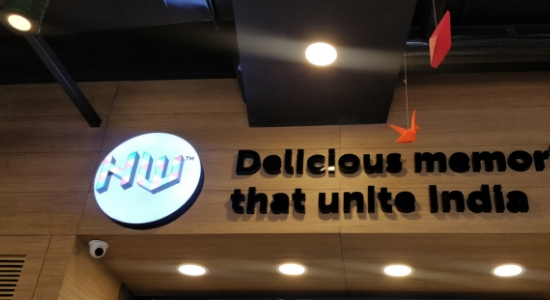
The key accomplishments of Nukkadwala in 2018
2018 was a break year where we gathered all our gaps, fixed them up. We opened many Nukkadwala restaurant outlets back-to-back in 2016 and 2017. We took almost a year hault, in 2018, to gather all the gaps we were facing in operations, expansions, locations, etc. But we opened two outlets in 2018. We signed a few of them are more futuristic. Now we are back again; we will be opening two outlets till March, this year.
In a start-up, there is no one year where you can actually think of an accomplishment; every year we face a new challenge and we try to fix them up.
The first year was about how we can maintain the consistency keeping the expansion plan. In the second year, we started multiplying outlets and focusing on how to maintain the operational gaps minimum. At Nukkadwala, we believe in selling efficiency.
Meanwhile, studying the repeat customers of the brand, there are many marketing strategies we had introduced. The loyalty we had earned in the last two years is phenomenal. We are very positive about it.
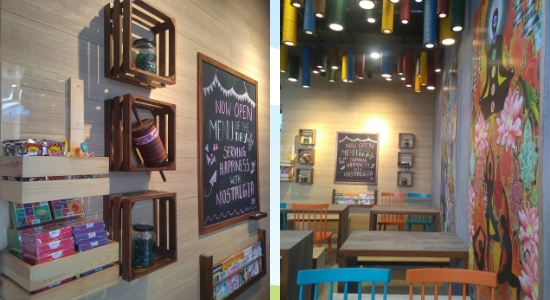
Your growth and expansion plans for the next two years
Nukkadwala’s growth has been nearly 28% which is very good and consistent; the customer repeat of 39% at the brand level.
The QSR chain, Nukkadwala is planning to expand and add 25 more outlets in different cities to keep the growth running.
Our current focus remains Delhi NCR. In the first phase, we looked up at the expansion only in Gurugram. We have a couple of outlets in Gurugram at Sohna Road, New Gurgaon area, Sector 21, Cyber City and MG Road. We also moved to hospitals and food courts as well. We started with Fortis Faridabad, and are in talks with other Fortis outlets. Our current focus is on retail and corporate business parks. We will be opening two outlets in corporate business parks in Noida, one in Gurugram and another in Dwarka.
Right now there is a huge gap. All the new QSRs are selling beverages. We are the only one, probably, who are selling authentic Indian food, vegetarian and non-vegetarian both, which in itself is very challenging. But there is a lot of demand. We are creating eating out culture. We are selling people what they actually look forward when eating out. As Indians, we cannot have pizzas or burgers daily. People who tend to eat from outside most of the time, miss the Indian cuisines. It’s a huge gap. And that’s why we are opening our outlets in malls, hospitals, university areas, markets and corporate parks.
Also Read: Five Reasons Why QSR Is An Evergreen Business
Depending upon the requirement of the locations, we are open.
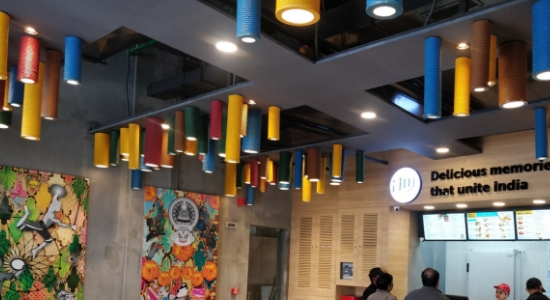
Do you think ready-to-cook food kits could pose a possible threat to the QSRs?
When we talk about the Indian market, the problem with ready-to-use kits is it isn’t fresh. Secondly, if it is frozen food, maintaining a frozen chain by local retailers is a big challenge. It can actually lead to a very serious health issue if the chain isn’t maintained. On the other hand, when a customer walks in, we deliver to them instantly and if there is an issue, we are 24X7 available to solve and resolve it. Whereas, people who procure these kits, they keep calling the customer care; they won’t be heard.
People who don’t want to cook at home, even if they get the ready-to-do kit, if they want to go out and eat, they will do so. It’s a huge market and there is a share for everyone. Even if tomorrow we have twice as many QSRs as we have today, we will still have buyers. It’s not going to get cannibalized. India is a huge growing market; the spending power has improved, eating out culture is growing.
How would you compare the consumption patterns of people when you took over as CEO at the company with the current scenario?
We realized that slowly and gradually, with the increase in traffic and lack of mobility, everything even residential areas will become captive, apart from the corporate business parks. There was a time when people from West Delhi would come to South Delhi and Connaught Place for night-outs. But now with the demand, the city is building up. We are now seeing the growth and planning at every part of the city.
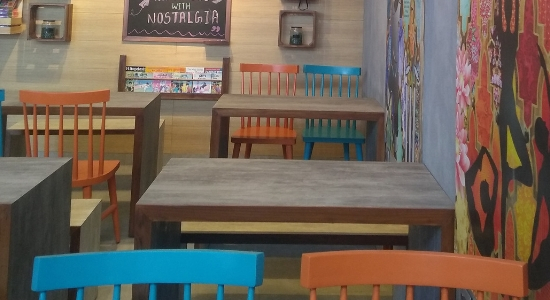
Aspects to keep in mind while designing the menu of a QSR
There is no magic mantra behind running the business. Your base needs to be strong.
Food consistency has to be a priority. Your food or beverage, whatever and wherever you are selling has to be consistent. If somebody has visited your outlet in CP or in Gurugram, they should have the same impression. Whatever you serve be it Vada Pav or Adrak Chai, the taste and flavours have to be the same. So the quality and consistency of the product are supreme and non-negotiable.
Considering the price sensitivity of our country, we should always consider the pricing and positioning of our product. I see a lot of new outlets and brand selling a product for Rs. 250-300. With the country like us, we need to be very watchful of what and how we are selling and the price. It’s basic economics.
Tips for restaurateurs who want to grow through a franchise model?
Nukkadwala is company-owned right now. But, tomorrow if we go into a franchise, it will be a FOCO model i.e., Franchisee-Owned and Company-Operated model. If you really want to have consistent growth and not see much of decline in the path of growth, it has to be a win-win model. Be it the hard work or the money involved, it has to be equal.
For a brand like Nukkadwala, I’ll always suggest going with the FOCO model. Keep quality and operational checkpoints with you and let the franchisee partner just help you in the expansion and management of the money.

In a tête-à-tête with Restaurant India, Shivam Sehgal, founder of The Market Place restaurant, shares his secret on how he is planning to go big with his restaurant.
How do you come up with the concept of your restaurant?
I started with the basic concept of the restaurant as a whole and then narrowed it down to a buffet restaurant. I never wanted a regular buffet kind of restaurant. To get over and bring something new to the market, I, with my team, thought of coming out with the idea of the live kitchen, mini-restaurants inside one big restaurant, similar to a food court concept, and then it should have global cuisines on the menu.
At The Market Place, we cater to people of all age groups – from a child to the eldest member of the family.
Selecting the Location
The Market Place at Kirti Nagar in Delhi is the pilot project. We opened at Kirti Nagar to see who wins, whether it’s the concept or the location. And the concept won! People like the concept more. I wanted to see how much potential this project has. It’s all about the food and the concept.
Read Review: This Unique Concept Restaurant Is Creating A Big Buzz In Delhi
Out of 100 customers visiting the restaurant, I make sure to meet at least 90. It’s my motive that my guests leave the restaurant with a smile on their face. If anything is bugging them, I am there to solve it out. It about a personal connection with them, taking reviews and feedback. Fortunately, we are getting 99% positive reviews.
How did you come up with the menu of The Market Place restaurant?
The Consultant Company, Secret Ingredients had helped us in creating the menu and the system of the restaurant. The founder of Secret Ingredient, Sid Mathur is also a cuisine creator at Impressario.
Some of the interesting findings you came across while you were doing the R&D for your business?
All the places we went around for buffet during the R&D, I noticed one thing that was very certain with the diners. If four people are sitting at a table, one of them, at least, ends up saying “I want to have burgers here” or “I want to have Shawarma” or I want to have dim sum”. So, that was the question that hit me straight away, that if they aren’t getting what they want, it is quite possible that the particular diner won’t come back again. One of them would cut it off. At that time, I decided to bring on the maximum things on the table, giving choice to people.
What are the pros and cons of being a partner at any restaurant?
I ventured with Varun Puri for Too Indian and Duty Free. I was always there as a manager who would learn things at the restaurant, to make a passion out of business.
There are almost no cons if you are in the right partnership. I have seen none of them. My partner is a very nice leader; I got to learn many things from him. I would suggest - don’t force yourself to be in partnership with the person you do not like or who might not go along with you. Just work with the person and know him inside out. See how they work. It’s the passion you should see in someone’s eyes. And how willing he is to work and teach their staff around.
What are your growth and expansion plans for The Market Place?
We will be soon expanding with three more outlets in Delhi-NCR – Dwarka, Noida and Gurugram. Dwarka is still untapped; it doesn’t have many good restaurants that would cater to the mass audience living in the area.

Vikrant Batra, a stalwart in the Indian food and beverage industry, is the mind and force behind the ingenious concepts of his stand-alone ventures, Cafe Delhi Heights and Nueva.
He launched Café Delhi Heights in 2011; the restaurant celebrates the saddi Dilli spirit, truly. Another venture by Vikrant is Nueva - a casual-dining restaurant with a luxurious stand-alone bar.
Being awarded numerous times by various food and beverage forums, Vikrant Batra aims to expand his restaurants globally. With the success of his restaurants, he has proven to be a man with great ambition and entrepreneurial skills.
Restaurateur Vikrant Batra, in a tete-a-tete with Restaurant India, speaks about the key challenges while starting a restaurant, and more.
Taking up the Family Business Reigns to Launching His Own Restaurants – The Journey
My parents started the Batra banquet in 1989. I started to work part-time while I was still in college. Seeing so much food around at the banquet, the foodie in me inculcated. I used to spend most of my time in the kitchen, with the chefs. I started taking the interest, then, on how the food was served and tried a lot of new cuisines. In 1993, while pursuing my Masters in Hotel Management, I started contributing more to the family business. It's quite easy to do the business when you are pursuing such a degree; it helps both ways. Later, I started taking full care of the banquet business. I started the outdoor catering all over India at weddings, receptions, birthdays and cocktails. That was quite an exposure for me.
Also Read: What Makes Aerocity A Location Ingredient?
I believe if you have done catering, you've done everything within the food industry. You learn a lot starting from taking care of logistics to taking food from one location to another and handling a lot of employees.
The business was booming but I wanted to do something more organized because catering requires a lot of legwork and a lot of one-to-one interaction with the customers all the time.
“Success is a process and not a destination!”
~ Vikrant Batra
I took a break for a while, and in 2011, I opened my first restaurant Café Delhi Heights at Cross Point Mall in Gurugram. My brother looks after finances and projects, and I take care of the food and operations.
Introducing Contemporary Cuisines at the Restaurant/s
Café Delhi Heights is a product of change, creativity, marketing, and, definitely, the content! I've been travelling a lot in the last couple of years. Whatever excited me or impressed me, I would take it back, and get it on my restaurant’s menu. I observed a continuous change and a lot of concepts evolving. By now, a lot of concepts have come to Delhi; the market is dominated by European and pan-Asian concepts.
During my travel to South America, I saw close relativity between the Peruvian and Indian cuisines. I wanted to make something which is contemporary. We talk about modern or new things at restaurants.
New has its own definition; ‘new’ is acceptable till the time it has an element of familiarity.
I found familiarity in Peruvian cuisines. I instantly knew I wanted to bring modernism in the food. Therefore, I launched Nueva, meaning new in Spanish. The restaurant, basically, is about the influences – the modern and the Peruvian. This is what I wanted to get to the table for people.
Serving Peruvian Food in Indian Market
We don't plan businesses with what we think will work. It is about what customers will like.
With people being very-well travelled now, they are getting experimental. Earlier, eating out was occasion-based activity. Now it's a need. People used to eat out only on birthdays. Now every day is an occasion. When I opened Café Delhi Heights it was a struggle for 24 months. It took time for people to adopt the concept. People accepted the concept of Nueva, too, and the response has been phenomenal.
Key Challenges While Starting the Restaurants
When Café Delhi Heights was launched the casual-dining restaurant format was not in the picture.
Initially, creating awareness was and still a challenge. The word-of-mouth works best in the industry.
When we started the restaurant, it was just the time when the ice-breaking social media was picking up. People were getting on social media, making food groups there was the continuous interaction about the new things happening in the town. That really helped.
With Nueva, it’s different. Now the industry is evolving in days and hours. The acceptability, the knowledge and the means of awareness are accessible in everybody's hand, practically.
The Biggest Customer Engagement Mistakes
No one as an entrepreneur wants to make a mistake. And the biggest risk in life is not taking it.
So it is just about the best communication with your customers. The quality of food and the experience you give. If that is not your strength and you're not focusing on it then you already made a mistake of being in the restaurant industry.
Restaurant Operations in India as Compared to That of Foreign Countries
With the availability of the blessing of the population in the country, the restaurant industry as a whole has been able to give a lot of job opportunity and, thus, the revenue generation. And as far as service standards are concerned it's majorly about your own internal upgradations and the training you have been through.
Must Read: 5 Growth Strategies For Restaurant Startups
It's very difficult to compare an ‘A’ country's culture to a ‘B’ country's culture. Definitely, if you compare with a particular country where people are time bound by the clock, the standards are different and in restaurants in Western countries, the label is way expensive. For example, the customers, there, are supposed to pour water themselves while here in India, the consumers need to be pampered a bit, the waiting staff has to pour the water, place the napkins, and even refill the glasses all the time. I can't, really, compare the two concepts; it depends only on the culture.
Approach Towards Supply Chain Management
The success of any business depends on the supply chain. It is a much bigger concept than it may seem. It involves the process from procurement to availability, quality audit and reaching to the restaurant. The customers directly or indirectly become part of the supply chain as the end product reaches. It's the most critical thing to have a great supply chain.
To give you an example, we'd made a central storage system. We have a base kitchen where we centrally procure everything, and dispatch in our vehicles, to maintain the quality. Secondly, the supply chain is very much under our control and the vendor gets the comfort of supplying everything in one place. See that's a very critical cost consciousness.
Advise for Restaurant Startups
- No discouragement but the restaurant industry, right now, has the biggest failure rate which everybody knows.
- To start a venture, you have to be a pre-startup, do things on your own and gain experience as much as you could.
- Your operating plans have to be very clear and focused.
- You have to be passionate about your restaurant startup.
- Don't make mistakes of overspending from day one.
- Be clear about what you want to do.
- And please don't lose focus on the main content of the food industry which itself says – food, food and food.

“Melody the beat shop”
Sandeep Chattoo had this entrepreneurial string from the very beginning of his life. Before venturing into hospitality business, he started a music shop whilst he was an engineering student in Bangalore in the late eighties, as Sandeep always had a strong inclination towards music. “The idea of being an entrepreneur was always on my mind as I’ve wanted to do things differently for as long as I can remember,” added Chattoo who way back in May 1990, organized the first ever music concert by a band from Bangalore called “Shyam and the West Wind” to perform at the then only auditorium in Jammu. “It was a huge success but I couldn’t run that professionally in the long term as the then exodus of the Pandit’s had my family move base from Srinagar to Jammu,” he pointed by adding that they were fortunate to have a roof over their heads, a house and the backing of Nestle who they supplied dehydrated Mushrooms to. The journey there after has been stormy since he had to take quite a few decisions most of which have been circumstantial. Excerpts from the interview:
How did you venture into the hospitality business and then Real Kashmir FC?
I already had a shop in the very premises of the hotel. I made enough to offer to buy the entire building after a couple of years. Renovated the entire structure and soon opened up. Thought I did not have enough experience in the hospitality business I toyed with handing the entire business to a hospitality chain. Talks were on but I never concurred with their vision. I decided to risk it and run the business myself. I relied on common sense plus a sense on how I should be treated if I go out. Unfortunately after a successful first season the hotel took a major setback during the floods. We had to get back to drawing boards after that. I worked manually along with the other workers to get the things moving. It took us a while but we managed it. This was also during the time when Shamim approached me with the football idea to formulate and showcase the real side of Kashmir through football. After going through so much distress myself, I was more than willing to help. Soon this little club not only gained momentum but also started to become popular. We searched for players, hired coaches and started a platform for kids to play. We further segregated the kids under various age groups. We competed in the Durand cup in 2016, emerging as the champions of the I-league second division in 2017-18 season and now making our fairy tale dream come true in the first division of I league.
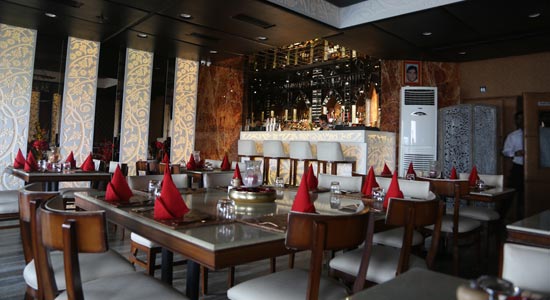
Tell us more about Junoon. The idea on starting an authentic Kashimiri restaurant in NCR.
Most friends who live out of Srinagar have been ardent fans of the Kashmiri cuisine. I remember freezing ristas and flying it to friends in Delhi. Hence, the idea of opening up Junoon, an authentic Kashmiri restaurant in NCR. It still is at its baby stage taking baby steps but anyone who eats here have always praised it. That keeps us going.
We have restaurants like Chor Bizzare, Khyen Chyen serving Kashmiri cuisine for ages. Do you see any competition from them?
Any eatery will always be a competition but places like Chor Bizzare & Khyen Chyen have their clientele fixed. There is more than enough to go around for all of us. It is really encouraging to have some good competition around; it keeps us on our toes.
What is your USP?
You are Special and will be treated like a king! That’s our USP!
Who is your target customer?
Anybody and everybody looking to experience authentic Kashmiri cuisine is our target audience. We aim at selling the entire experience and not just a meal to your customers.
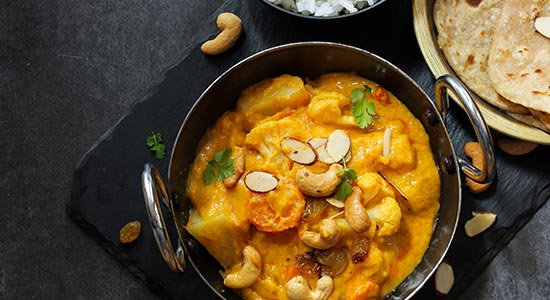
What according to you is 3 Keys to running a successful hospitality venture?
- Keep the employees Happy
- Happy Employees keep happy customers
- Happy customers keep the business running
What is your expansion plan taking your restaurant to other parts of the country?
We do have expansion plans and would want to take it up step by step.

Anurag Mehrotra, CEO of Charcoal Eats, co-founded the quick-service restaurant (QSR) brand along with Krishnakant Thakur (COO), Gautam Singh (CTO) and Mohammed Bhol (CPO) in April 2015 with a strong belief that 'good food can excite people'. The aim was to enhance the Indian palate by building a large and scalable restaurant brand in the country, thereby, providing great quality food at an affordable price.
Read on the exclusive interview of the Co-founder and CEO of Charcoal Eats, Anurag Mehrotra who tells it all – the journey of the QSR brand, key accomplishments and the expansion plans.
From Charcoal Biryani to Charcoal Eats – The Journey
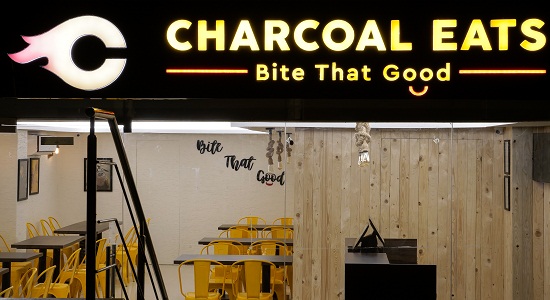
I am a Commerce Graduate from the University of Allahabad and an MBA from Asian Institute of Management, Manilla. Prior to venturing into the entrepreneurial journey, I have held senior positions in large corporates like Kotak and Edelweiss. I have been a part of the startup domain for the past six years, and I, currently, serve as a Director on the boards of Coverfox, Capzest, Woodbox & Alien Adventure.
Charcoal Biryani, as it was originally called, started with six biryanis served through multiple cloud kitchens across Mumbai. In August 2017, we pivoted to a customer facing dine-in model with our first outlet in Pune. We also moved to a franchise model for these new outlets. To support this retail push, we started expanding our menu to offer an all-day meal and snacking options, and subsequently rebranded as Charcoal Eats in March 2018. Today, Charcoal Eats offers high quality, all-day food options across snack and meal times that include Biryanis, Starters, Rolls, Loaded Fries, Curries, Puff Pizzas, Beverages and Desserts. Customers can dine-in, takeaway or order for delivery, as per their convenience.
Key Accomplishments of Charcoal Eats in 2018
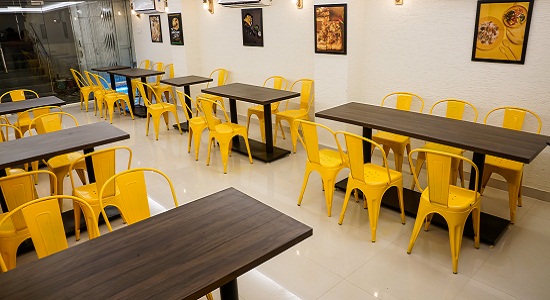
Charcoal Eats is currently present with 38 dine-in and express outlets across 12 cities - Mumbai, Navi Mumbai, Thane, Pune, Gurugram, Nashik, Chennai, Gandhinagar, Jamshedpur, Indore, Bengaluru and Jaipur. We have also set the groundwork for our international foray.
In terms of revenues, we have shown growth of almost three times from April 2018 to December 2018, with a revenue run rate of INR 17.5 mn for December 2018 v/s INR 6.0 million in April 2018. Our order numbers have shown a 350% growth from April 2018 to December 2018, with approx. 48,000 orders in December 2018, up from 13,600 orders in April 2018.
Also Read: Five Reasons Why QSR Is An Evergreen Business
This growth has been driven by two factors - our pivot from a ‘meals only’ to an ‘all-day dining’ menu and the increase in Charcoal Eats outlets across the country.
Our menu comprises a wide range of high-quality all-day dining and snacking options that offer adequate calories, at affordable prices. This delicious menu is now available to customers at their convenience – dine-in, takeaway or delivery. Customers can order delivery online through our website, mobile app or any of the leading food aggregation platforms, or they can simply call our customer care to place their delivery orders.
A key element of our growth story is the hassle-free, high ROI franchise model for people looking to start their food business. The company takes care of the food, supply chain, marketing, technology and customer care, while the franchisee focuses on managing outlet operations and local area marketing. Multiple outlet formats (dine-in, express, mini) allow us to open outlets suitable to a location’s specific requirement/ profile. All Charcoal Eats outlets are designed to be capital and resource efficient, enabling quick break-even and profitability at an outlet level.
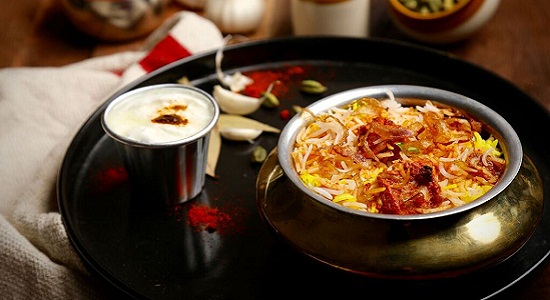
Charcoal Eats follows a hybrid distribution model, with a mix of the franchise and company-owned outlets. This mix is currently at 50:50. Our franchise partners are motivated to associate with Charcoal Eats due to our obsessive focus on quality and customer delight.
The company proactively seeks customer feedback and has made many product/service improvements over the past couple of years based on these customer insights.
We have been recognised by Radio City, a leading pan India FM radio station, for Excellence in Food Retail, 2018.
Charcoal Eats’ Expansion Plans for the Next Two Years
"We are quite bullish on our growth both in terms of volumes and revenues across all our formats and locations."
We are increasing our presence in the metros and at the same time, we have started expanding to tier II cities. We are already present in Jaipur, Jamshedpur, Gandhinagar and Indore. We foresee substantial domestic growth coming from tier II cities and have ambitious plans to establish our presence in many more such cities by FY 2020.
Innovations at Charcoal Eats in the Upcoming Years
We will continue on our mission to bring consistently delicious Indian food to people across the country. Ensuring increased levels of consistency in taste and maintaining high quality will be our focus of innovation. Effective, environment-friendly packaging will be another area of innovation focus for us. Menu innovations will take the form of new products, flavours and new category introductions.
Optimizing Menu Boards to Increase Sales
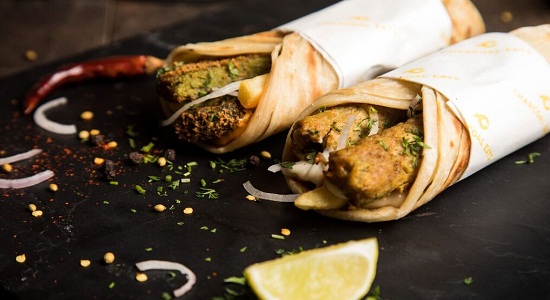
Menu boards are cost-effective to keep customers up-to-date with pricing, products and promotions. They also help in faster service as customers make quick menu decisions. We use these to display real-time changes in the product pricing and availability to the consumers.
Our automated menu boards also allow us to promote daily specials and offers that help drives sales and contribute to increased profits.
Technology Innovations in the QSR Industry in Upcoming Years
We see the following areas where technology innovations will play an important role in the QSR industry in coming years:
- Personalised food recommendations to consumers, based on their past behaviour and preferences.
- Accurate demand prediction for efficient capital and supply chain management as well as waste reduction.
- Dynamic pricing based on demand-supply patterns.
- Enhanced multi-channel customer engagement to deepen the relationship.
Must Read: Four Trends QSRs Shouldn't Ignore in 2019
Food Trends in 2019
Some key food trends in 2019 are:
- Emphasis likely to be on ethnic regional Indian cuisines.
- People are extremely health-conscious nowadays and so the focus would be on eating natural food, especially organic, non-processed and genetically modified food.
- Health and wellness will be the basis for preference for a larger number of consumers.
- QSRs will increasingly look at ways of making their food more wholesome and free of harmful additives in order to appeal to the growing number of health-conscious consumers.
- With eco-friendly and zero waste management becoming the focus of the food industry, sustainability is the core of how food will be approached.
- Alternative ingredients like goat milk or soya milk instead of cow milk will be preferred especially the ones that are at par in nutritional value.
- Innovative food packaging will replace traditional methods to meet the needs of environmentally conscious millennials.
- Snacks will be fancy and an important element of the daily routine.
- Preference for home-cooked food among the younger generation is increasing and this offers scope for food-tech companies to offer interesting meal kits for cooking a wide range of delicious wholesome meals at home.

From quite early, Anaida Parvaneh, once famous as the pop-singer in the 90s and now the Chef and Partner at SodaBottleOpenerWala in Powai in Mumbai, started doing the pop-ups for “fun”. She sought peace in cooking while going through a rough phase in her life. “I started doing the pop-ups to distract myself,” reveals Anaida.
Spilling the beans on the expansion of SodaBottleOpenerWala, Anaidah says, “We are already in nine cities and now planning to open new outlets abroad - New York and Dubai.”
In a candid conversation with Restaurant India, Chef and Partner Anaida Parvaneh reveals her unconventional style of kitchen management and the promotion strategies at SodaBottleOpenerWala, Powai in Mumbai.
Cooking is More Powerful than Music or Art
I used to do many cooking pop-ups, earlier. It was during one of the pop-ups in Delhi that I realised that cooking was way more powerful than the music or art. No one will say if your song is bad but with food the reaction is instant. People were sceptical about my cooking, at first, especially the media persons. I am talking specifically about one of the pop-up cookery shows in Delhi. As soon as they tasted the food, their perception changed. With food, it was that session, that day, when I knew I will go ahead. My chef at the pop-up events showed confidence in me, too.
Must Read: Know Your Clientele: Varun Puri Suggests Restaurateurs
The Chef Behind Launching Baklava at SodaBottleOpenerWala
I was fed up of Baklava everywhere else. The eateries then would give 250 gm of Baklava for Rs. 800 with hardly any pistachios or almonds in it. I felt the need for introducing the authentic Baklava to the people. Initially, I launched Baklava as Diwali gift at SodaBottleOpenerWala in Powai, Mumbai. It went flying. I could have priced it really well as it was three times better quality from what we were already getting in the market (laughs off).
The work was not done till yet. My research and development happened by just observing people at the restaurant and it was instant. You can do a fabulous job with a little bit of observation. I found people needed to break the Baklava, and that’s how I realised I have to make it a bit smaller.
Click to Read: Focus On The Technicality of Your Product
The people’s reaction got me hooked. My food made them so happy. The fact that you create art on the plate and people take it in a positive way by feeling good - is a big honour.
People would come to me and say, “I have never had a meal like this.” For people in India who are addicted to chillies and spices, it takes a lot of guts to serve food that has no chillies in it. I am also serving a riceless biryani; the cuisine had no rice originally.
It needs a lot of guts to serve that kind of food and seeing it become a success. It can’t be more delicious than this!
Being Rigid on Cooking Authentic Iranian Cuisines
It might not be as commercial as a tandoori chicken but I have stuck to making Iranian food. There are enough people in India who understand Iranian food. People know they won’t get these cuisines elsewhere. Therefore, I stayed authentic to stay true to that particular lot of customers. Besides, I also do fusion and slightly add an Indian touch to the food I cook. But my cooking will always remain Persian, primarily, because that’s my foundation and I understand it from every bit of my soul. Right now, I am serving Persian Spice Sizzlers at SodaBottleOpenerWala in Powai, Mumbai. The food has remained very much Persian but I have added a twist. I am serving a sauce along with Persian Spice Sizzlers. If anyone needs spicy sizzlers, they can add the sauce. The food in itself will remain authentic with a few alterable tastes. That’s a big challenge but I am able to manage.
Also Read: Read 4 Keys To Designing Casual Dining Restaurants
Marketing Strategy at SodaBottleOpenerWala Powai
There are a couple of things that I do at my outlet in Powai in Mumbai and it has received a good response from the guests.
- One of them is – We have a very good live band named Pratibimb. They are smashing. You have to see how good they are and literally, I have guests who come to listen to music. Even if there won’t be any place to sit, we have guests who would sit on the table in the corner with food on their lap just to enjoy the music.
- We started Ladies Compartment on Wednesday. The Wednesdays are dedicated to ladies, with a lot of things – from discounts to meditation, free workshops to book readings. If a woman walks into SodaBottleOpenerwala Powai on a Wednesday, she will feel that she is being celebrated.
- Another important thing for me is to make sure that my kitchen is happy, and the food served is good. Then, I make sure my service staff is good. I know that people go to restaurants as they want to spend some quality time with their family and friends. And if my staff is not in good mood, no matter how much they pretend – I am an energy worker – it will show up. I am very happy that SodaBottleOpenerwala, at all the outlets, is a pro-staff and treats them well. Being in the business, of course, we have to be strict but the spirit is such that we are pro-staff. That makes a very big difference for me. My idea of doing business is very unconventional. People might not agree on my working style at the moment but later they do agree and ask about it.
Deciding the Kitchen Staff
I do not interfere in the operations that much. But then I select from the selected few for my kitchen.
Food Trends in India
When I moved to India, in Mumbai per se, I wouldn’t get anything that was not spicy anywhere other than on a five-star continental menu. Eating was a big problem back then. That is why I started to cook. Indians were not experimental earlier – you had Indian food and then you had Chindian (Chinese + Indian). After the satellite TV came to India, people started experimenting. But the new generation, now, is all about creating new experiences. I find the new generation being a lot more experimental and opened up. And, hence, I find the food trends further going to the experimental cuisines.
People have started to get health-conscious, not in a diet manner. If you study statistics, dieting works only 2% of the time. If you ask me, I would say no diet actually works. You need not suffer or starve. I believe in the traditional ways of eating food. What my grandmother would suggest eating I will have it. I believe in local cuisines and healthy food. At SodaBottleOpenerWala in Powai, I had launched Chef Bowls. It has seven elements like a Budhha bowl – curry, dal, rice, two fried potato sticks. The fried is not considered healthy but I look at it in a way that if you enjoy food, a small portion isn’t bad for you. Ghee or coconut oil, if taken in small portions, are good for health.
People are growing health conscious in a more healthy way. The kind of direction where food trends are going is the kind I am adept at. I have been doing this for the longest time. People are going more holistic in their diet and eating habits.
Click To Know More About Food Trends in India

When Starting a New Restaurant
Understanding the Catchment: One of the important things when you are starting a restaurant is to understand the catchment and where the gap is for a particular market. You may want to start an Indian restaurant but if there would be 20 Indian restaurants in the neighborhood it might not be the best idea. So, you need to find out where the gap is what that market requires and start your restaurant based on that.
Keeping the basic Right: Always ensure that the food is authentic, delicious and is on point and same goes for beverages. So, even if you have a lounge bar where 70% of the sales comes from beverages, the food is an important criteria to keep the customers coming back.
It’s all about Service. Service is an important part in the restaurant business because the customized service is one of the important parts. You can run a restaurant at 500 for two people and it could be 2000 for two people but service is the most important part because people need to feel comfortable coming to your place.
Keeping abreast with trend: No matter what is your concept and what are you serving, you always need to be in line with the trend. It is one the key factor in restaurant business by making sure that your restaurant concept is innovative by understanding the pulse of the market.
Finding the X factor: It is very important to create the buzz about the brand. There has to be vibrancy to a place. You might have the best food, the best everything but if there is no X factor then it is very hard to run a successful restaurant.
What’s special about your Restaurants?
Being from the real estate fraternity my specialty is in space. I look at various spaces and see what is the best and the highest usage of the space. So, we had the World Trade Centre and it had the rooftop completely empty so I said what use we can do the best and hence came up with a rooftop restaurant. All over the world, the top most cities have the sky scrapper with large rooftop restaurants where people can visit the place and see entire city. So, I thought Bengaluru doesn’t have the one and the World Trade Centre is the highest point in the city so why not create a rooftop lounge for that space. Then, we found an empty space lying between the World Trade Centre and the Sheraton Brigade Getaway which was lying from last 6 years. Since, it was a long bridge it made sense for an art gallery. So, the concept of café came up combining art and understands millennial to understand art better combining the two together. What keeps me going is that the spaces are utilized efficiently.
Way Forward
A lot of restaurant owners are being smarter about the capital investment that they are putting into their restaurant. So, the restaurants are becoming a little smaller, owners are being careful about how much they are spending on efficiency of a restaurant. They are coming up with wacky interior fit outs but they are making sure that they are not spending as much in terms of the lavishness of the restaurant. It’s more funky, more quirky and something that the millennial want. On the food perspective I am seeing lots of healthy perspective in the food.

Chef Vineet Bhatia is the first Indian ever to get a Michelin star. He moved to London in 1993 and started working at Star of India restaurant. Later, Chef Vineet opened Zaika in partnership in Chelsea and then in Kensington High Street. Vineet Bhatia is known for revolutionizing the Indian food in Britain. His ventures include Rasoi (in Switzerland and Bahrain), Ziya (Mumbai), Indego (Dubai), Amari (Mauritius), Saffron Lounge (Qatar) and Maharaja (Saudi Arabia, Riyadh). Ziya in Mumbai is in partnership with The Oberoi’s. Speaking about upcoming ventures in the country, Chef Vineet told Restaurant India, “There are more restaurants in the pipeline; the gas hasn’t come out of the pipe so I cannot reveal right now.”
In tête-à-tête with Restaurant India, Chef Vineet Bhatia speaks about his journey from getting a Michelin to modernising Indian food.
Venturing in the Restaurant Business
I was always on the quest on how I could cook better. I left India in 1993 because I was pretty disillusioned about what was going on and I was not allowed here to create or innovate with food.
I was very young when I took up cooking. I was not trained in the old classic kitchens. So, I lacked skills.
There was a bias towards European cuisines in India back then. If you were trained as a European chef into a hotel, you did well but if you would not do justice to Indian cuisines, you would be looked down upon – such was the scenario.
Also Read: Be Experimental, Add Regional Cuisines On Menu: Maneesh Baheti's Advice To Restaurants
I went to the UK. I found my calling there; I wasn’t judged or criticized. People, there, treated me as an individual who was cooking. And they enjoyed what they saw. Their view was based on the product, flavours and technicality.
Give the food more respect, in terms of ingredients, cooking and make it more interesting from the guests’ point of view. It has to be a memorable experience for your guests. That is what I have done throughout.
You start working for a company, initially and then comes a stage when they straitjacket you. They don’t want to take the risk. That’s why I branched out and opened my own restaurant.
If you have to do something and you believe in it then you put your own money and you put your own skill in it. This belief led me to globalise the food with a very simple and humble backing of only one restaurant which started years ago, in 1999, and led to the worldwide acclaim.
Idea Behind Modern Indian Food
Initially, in 1993-94, the food wasn’t plated like how it is done now. It was just a raan served in a nice platter with a simple garnish. When I started modernizing Indian food, it was purely out of survival. It wasn’t done to please myself or do something else. It was done to tell people that such Indian foods exist. People would object on my classic cuisines’ cooking style. They would tell, this is not how you cook proper Rogan Josh or a halwa, or the chicken tikka should be only red in colour and not green. I was up against all these things. I knew if I called my cuisines a classic, nor people will appreciate neither it will work in the long run. Therefore, I changed the name of the cuisines. I used to call my dishes differently by giving narrations and brought them on the table in a more presentable manner.
Click To Read: Restaurants Must Have Proper Structure And Design, Else They Will Collapse
Being the First Indian to Get a Michelin Star
The Michelin gives you a pat and encourages you to do better.
Getting a Michelin in 2001 was a pat on my back. I broke the bubble. That’s when I realized this is something different. None of the Indians got the Michelin star in 102-year-history. Suddenly, internationally, people wanted to see what I was doing. Getting a Michelin made a big impact.
The Core Essence is Hindustani
I opened my own restaurant Rasoi, without any partners, in 2014; it made the biggest impact in terms of food – the Indian khana. It was a cutting edge and took to a very different level. Since then everyone has accepted the norms to make Indian cuisines interesting when it comes to plating.
I always say, if you eat with your eyes open, the food will look European and if you eat with eyes closed it will be purely Indian. I maintain that at my restaurants. The blend of classic and modern food works. You could have a grandfather savouring the meal and you could have a 10-year-old grandchild sitting on the same table and relishing the Indian cuisines. That makes the generations happy.
Restaurants’ Menu is Not a Cut Paste Job
The menu, obviously, varies from place to place. There isn’t a cut-paste job at fine or casual dining restaurants. For example, it’s not like Burger King’s where you can go ahead with the same menu all across the world and everything works! You got to be centric to where you are. If I am sitting in Geneva or London, where it’s cold right now, and serving Venison or duck, it won’t work in Delhi or Mumbai or Mauritius because the weather is different. The palates are different. I prefer using the ingredients that are locally available. In India, we offer more vegetarian meals as compared to other countries. If you go to the Middle East, people want to eat lamb, so the menu is more biased towards meats.
Each restaurant’s menu will vary based on the location, but the ethos remains the same which is the quality product.
Also Read: This Award Winning Chef Believes In Putting Lots Of Colour In Plate
Tips on How Restaurants in India Should Boost Their Sales
- Listen to your guests and know what they like.
- Try to be slightly unique and innovative.
- Add your own twist but keep the flavours and the tradition intact.
- The way you present food has to be different and appealing. Don’t just put the pictures on the menu where the food looks nice and you serve something else. Serve what you show to your customers otherwise, it will impact your footfall.
Must Read: Know Your Clientele: Varun Puri Suggests Restaurateurs
Three Strategies to Boost Sales at Restaurants
Think out of the box, be very honest and believe in yourself because these things will carry you through any hardships.

Founder of Duty Free bar and restaurateur, Varun Puri's previous ventures are the proof of him mastering the trademark and exhibiting perfect craftsmanship.
In an exclusive interview with Restaurant India, Varun Puri talks about his ventures in the industry and the techniques that help a restaurant grow.
Imly, Lights Camera Action and Duty Free - How do you come up with the names of your restaurants?
When it comes to choosing the names, it’s always about what I want to put across to my audience as a brand and what clicks or appeals. Basically, people usually think of a name and then do a concept around it. But, ours are more conceptualised outlets. We think of a name in accordance with what a concept of a restaurant is. ‘Imly’ came from how street food usually has something sour and imly is a key ingredient and, hence, the name. Similarly, LCA (Lights Camera Action) for a Bollywood concept restaurant and then Duty Free’s idea is of a wholesale bar.
How do you create an everlasting impression on the consumers' mind?
With our loyalty programmes! We've tie-ups with all the third parties like Dineout, Nearbuy, Magicpin, etc. With the support of our tech partners, we get to know our customers’ database. So, when they visit our outlet we know their preferences as per the database, their previous visits and everything. And we, accordingly, maintain loyalty programmes.
The idea behind adding top dishes from your other restaurants to the menu of Duty Free?
We know what the Imly and Too Indian outlets are known for and what are the most-loved dishes there. For instance, Nalli Nihari at Too Indian and Palak Patta at Imly are popular cuisines; we've not shied away from adding these to our menu at Duty Free.
In Pics: Duty Free Launches Second Outlet
To say the least, these are our signature dishes, and we get praise for them. In addition to the new dishes that we have on our menu, we never fail to put in the ones that are our trademark or signature dishes. And we will hopefully continue to do the same with our upcoming stores and brands.
What are the new techniques in food that help a restaurant grow?
When it comes to techniques that help a restaurant grow is first and foremost - knowing your clientele and understand their requirements and taste obviously! But another one that's really doing good at this point in time is taking the mainstreams to another level. Modern Indian approach is coming in trend. What has already been done before is happening with you - know a twist or a new face. How so many restaurants around us that are actually doing well is going by the same approach is what I feel.
How do you see the food trends in India?
To answer this in short, I feel India is heading back to its roots. You know like, we're truly going back to where we started off from. For instance, organic ingredients are back in trends and are a hit with the audience. We're going back to the farm to store products. All the known people in the industry all the renowned chefs have gone back to where we belong.

Tell us about Simba. How is it different from others in the market?
When I was studying in the UK, I saw a huge beer market with different styles and variants of beer which were hugely missing in India. Back in India the only difference between the beers were the labels. Since every beer was providing the same style and similar quality, I felt that overall per capita consumption was also fairly low. In 2009, I decided to start my own brand to make craft beers and applied for the brewery license. In 2012, we got into the construction of brewery business by setting up the plant in Chhattisgarh. Getting into manufacturing was a new experience for us, so for two years we started contract manufacturing for SABMiller. Running brewery for a global brand gave us the required experience as it taught us the different nuances of the industry where we understood the parameters to be considered for delivering quality consistently and hence gradually we mastered the art.
In 2016, we completely exited our distribution and retail business and officially launched our own brand by putting in huge investment by setting up the brewery only for Simba. Much before I decided to start a brewery, I had my heart set on the name Simba. So we didn’t really go through a naming exercise when we launched it. I loved the name already and it fit perfectly with the brand we wanted to create for our brewery - authentic and pioneering. The one thing that sets us apart is that we have our own Brewery, which was the only craft brewery in the country at the time, this gives us an edge over our competitors as most of them outsource the product.
How have you priced your beer?
Rs 110 for Wit and Rs 150 for Stout pint
Who do you target as your target audience?
Simba is a very fresh yet coming of age brand that is appealing to mass audience from a first time drinker to a whisky lover. Millennials with a higher level of education who are aware of craft beer mechanism and have an exposure to global trends are the ones who will appreciate our product. Also Consumption trends towards quality and premium products and people with higher spending capacities are our targeted audience. We are preparing ourselves for the next generation, people now do not want to drink what their father used to drink, so we are trying to diversify from the traditional brew.
Tell us about your retail as well as HORECA presence.
We have maximum coverage of retail outlets + placement in premium liquor stores with high visibility
HORECA – placement & association with all premium and strategic outlets across Tier 1 & 2 cities.
What is the quantity of beer brewed per month at your brewery?
300,000 cases per month capacity
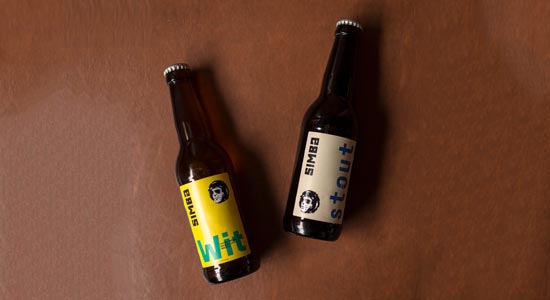
What were the challenges faced while setting up the brewery?
India has a large liquor market than a beer market. The major challenges would be managing the growth and demand. Among the many challenges we faced setting up the business, one of it being getting the land for setting up the brewery as the nearby villagers were not supportive for opening up a liquor factory. Also a major hurdle was acquiring a Brewing License. Since our family was always in the liquor business of retailing, we had the idea about the industry and distribution. However in 2009, I decided to start my own brand to make craft beers and applied for the brewery license right before going to college and the license was issued to us after I graduated. It was a challenge to bring together the old traditional methods to create something new and fresh for the market.
Tell us about the varieties of beer you brew. From where do you get the raw materials?
Simba craft beer is available in 4 styles; 2 distinctive variants, including Simba Wit, Simba Stout and 2 regular flavours including Strong & Lager (only available in Chhatisgarh, Jharkhand and Assam at the moment). Simba Wit is a refreshing beer made with a hint of orange peel, coriander and lemongrass. It is light bodied which makes it crisp and easy-drinking. Simba Stout is a dark beer, with an ebony colour and voluptuous mahogany head. It has a rich creamy acquired taste with a bold hearty flavour.
India doesn’t have good quality malts yet, hence we did not want to take risk on that and most of our ingredients are imported. Some raw materials are procured from local markets like rice comes from Chhatisgarh, water is from the river nearby after undergoing water treatment facility which becomes equal to as good quality as found in Europe. We get imported malts i.e barley and wheat from Germany & France. Different varieties of Yeast are sourced some from Germany and UK. We’re currently experimenting with several different styles of craft beers at the brewery. Once we are happy and satisfied with the new flavours, we will bring them to our customers.
Tell us about expansion plan both in India as well as global markets?
Currently we are available in 8 markets in India. After a successful stint in Chhatisgarh, Jharkhand, Assam, Madhya Pradesh and popular destinations like Goa, Delhi NCR and Bangalore recently, we're really excited to and looking forward to our launches in Mumbai and Kolkata soon. With the growing demand, we have acquired the license to increase our own capacity for our unit in Chattisgarh, we will be looking to setup a new unit in 6-12 months from now.
What trend you see happening in 2019 when it comes to changing drinking culture?
In coming times, there will be newer variants and experimental brews. New age brands are willing to try and test with new flavours with the evolving drinking culture. Also many craft beer brands will start venturing into Tier 2 cities aggressively.

South Asian Association for Gastronomy is one-of-a-kind initiative, by Maneesh Baheti, that focuses on connecting the culinary heritage and history of various regions from across the world. South Asian Association for Gastronomy or S.A.A.G. believes in the authoritative representation of gastronomy at the regional level. It’s the love for various unexplored cuisines which Maneesh Baheti discovered during his travels at the SAARC region of Nepal, Bangladesh, Pakistan and Sri Lanka, that he came up with S.A.A.G.
In tête-à-tête with Restaurant India, Founder of S.A.A.G. Maneesh Baheti speaks about the importance of global regional cuisines and the long-term benefits of introducing them at restaurants in India.
What led you to start S.A.A.G.?
I am a hotelier by profession. My work depends on that. When I travelled around South Asia, I realized there is a huge curiosity about Indian food and culture among the people there. Likewise, in India, bigger chefs are popular but people know little about the bigger chefs from Afghanistan, Bangladesh, Sri Lanka and Nepal. And I felt the gap has to be bridged. That’s how I came up with the concept for South Asian Association for Gastronomy or S.A.A.G.
I collaborated with noted chefs, leading hoteliers, restaurateurs and luminaries from the hospitality industry. At various events organised by S.A.A.G., Md Azharuddin, Bishan Singh Bedi, Virender Sehwag had talked about fitness and their diet regime. People want to know what celebrities are eating, what are their favourite stars’ diet regimes.
Through S.A.A.G., we brought royalty out of their palaces to share the knowledge of their culinary heritage with people. For example, at the recent Food For Thought Fest 2018 we celebrated the India-Indonesia friendship; a 16-member troupe from Indonesia came at the fest for cultural performance and the presence of Masterchef Iswarni MZ from West Sumatra gave us tremendous encouragement.
How Do You See Indonesian Food in India?
The Indonesian cuisines are regionally driven like West Sumatra has its own rich culinary culture. We just know typical Indonesian cuisines like Nasi Goreng and Gado Gado. There is much more to explore.
Expert Advice on How To Boost Sales at a Restaurant
If decisions are commercially driven, you could not experiment. My advice to the restaurants and the hospitality industry is to become experimental. Initially, to include regional cuisines may not be commercially viable but —
(a) The move will help the brand position well. Consumers will identify them as the brands which bring new cuisines and culinary trends to the forefront.
(b)If the positioning is right, it will help them commercially. My advice is - don’t see at the short-term gains in introducing the regional cuisines on the menu, look at the long-term benefits of positioning yourself as the pioneer brand that introduces new cuisines to people.
Must Read: Three Proven Ways To Retain Your Restaurant Staff
Gastronomy Trends in India
When I started my career in 1990, there were no social media. The internet boom has created a foodie in everybody. That trend will become even better.
Another trend is that of home chefs, which will be massive in the next few years.
The third is the global regional cuisines undiscovered in India yet. For example, we showcased Indonesian cuisine; we invited Masterchef Iswarni MZ from West Sumatra. Foodies want to know the authentic cuisines beyond the ones they already know. People want to know what is authentic whether it is an Afghani cuisine or from any other particular region of the globe.

Amrit Kiran Singh is Executive Chairman at ISWAI - International Spirits & Wines Association of India. ISWAI is a representative body promoted by multi-national alcoholic beverage companies, having investments and business operations in India. Amrit is serving the F&B industry for 20 years now. In 1995, at the age of 35, Amrit Kiran Singh launched the whole range of American whiskey, the first kind in India, starting with Southern Comfort and Jack Daniels. With his constant efforts, Amrit made Jack Daniels the third largest selling imported spirit in India in a very short period; Johnny Walker and Chivas Regal were the known names in India since pre-Independence.
Amrit was also elected as the Chairman at the American Chamber of Commerce where he emphasised on reducing taxation and to include the ease of doing business, and also unshackle the wine industry from the over-regulated environment in which India operates. He is also working with the state governments of India to promote the culture of responsible drinking.
He was recently inducted as a life member of The Keepers of the Quaich – the Scotch whisky industry’s hall of fame. The Keepers of the Quaich is an exclusive international society that recognises those that have shown outstanding commitment to the scotch whisky industry.
In an exclusive interview with Restaurant India, Amrit Kiran Singh speaks about the wine trends in India and his contribution in promoting Scotch Whiskey across the globe.
Could you tell us about your induction in The Keepers of the Quaich and a secret Scottish society!
Such an honour encourages you to work more in future. Getting your work recognised always helps in keeping you focused on all the things you are trying to do. Being invited to be the Keeper of the Quaich is an honour for the work I have done with whiskey and Scottish society. The Keeper of the Quaich is something that scotch whiskey society has created to acknowledge the exceptional contribution of the people promoting the scotch whiskey all over the world. It validates all the efforts that have been put into building this industry in an ethical way in India.
What international liquor brands have big consumption in India in consumer’s eating out wallet?
Three most popular brands that have been consumed in large numbers are Johnnie Walker, Chivas Regal and Jack Daniels. Traditionally, older people drink Johnnie Walker while the younger generation chooses to have Jack Daniels. There are a range of single malt whiskeys, like Balmenach and Glenfiddich, that have begun to do well. Recently, with a lot of luxury gins being introduced, there has been a huge resurgence of gin culture in India. It has gained a good response from the general public. Brands like Monkey 47 and also Hendrick’s gin are premium. Blended whiskeys, American Tennessee whiskey Jack Daniels, single malts and gins, these would be the four categories that are popular among Indians.
How do Indian consumers order wine at restaurants?
Food pairing with wine is something most Indians are exposed to. A winemaker does an educational class on the same at 5-star hotels. Sometimes a few hotels do it as a wine promotion. The market is so small that wine pairing with food is not something that’s happening meaningfully in India. People generally pair white wine with seafood and fish and red wine with red meat. That’s an extent to which the food pairing with wine is happening otherwise it’s just an academic exercise.
Indian Hotel Restaurants vs Standalone Indian restaurants - how do you see the difference in the liquor culture?
Good 5-star, 4-star and bigger restaurants have a great selection of wines to offer. But the quality falls drastically when you move from an A-class restaurant to B and C-class restaurants. Good restaurants, 5-star and 4-star restaurants have a good selection of wines though they have a very limited offering and a range of alcohol.
How do you find the Indian spirits and wine industry evolve in India?
When we were doing the wine appreciation course in everyday life, at a reasonable price we cannot get wines in India. Indian spirits industry has evolved very rapidly. Initially, the quality of the whiskeys was not very good. Off late, most brands have been blending a lot of scotch, giving Indian blend to improve significantly. The fact is, with higher disposable income, the Indians who were drinking Scotch whiskey maybe once a year in the past are now drinking it four or five in a year. And now since regular Indian whiskey tastes more like Scotch, they insist to add more as it gives an Indian blend.
Also, there are a lot of companies which are importing bulk scotch and bottling them in India, which includes – Pride, Black and White, 100 Pipers, Vat 69. These are now produced in India but are of international quality.
The wine market, unfortunately, yet has not evolved and is extremely small. Indian wines haven’t taken off primarily because we don’t have the climate here to produce a good-quality wine. Even the Indian Government has discontinued its Wine Board as it was difficult to make wine of good quality at a reasonable price in India.
The wine market will only evolve if the high duties will be brought down because right now it is difficult to get wines at a reasonable price in India, and high-duty imported wines become expensive. Indian wines are not as good. Therefore, the wine market has not evolved at the same rate as the spirits market.
People prefer to drink scotch at home or in restaurants?
The bulk of whiskey consumption is at homes. There are two reasons for it - one is that there is a set amount of adulteration happening at restaurants, and people want to be sure that they are drinking the right thing. Secondly, whiskey prices at restaurants are exorbitant. We thought that the culture of drinking and eating at restaurants will change with time but it hasn’t. People still call friends and have a drink with them at home and then go for food to a restaurant. This will only change only if the restaurateurs ensure good whiskey at reasonable prices. The more that happens, there will be more consumption at the restaurants. But for now, the bulk consumption is outside the restaurants.
What initiatives you have taken to promote a safe and responsible drinking culture in India?
I, personally, have been very passionate about promoting safe and responsible consumption. I have been talking to all the state governments and I also have told them to spend some money to promote responsible consumption by (a) enforcement and (b) education. By enforcement, I mean introducing the campaigns like ‘Don’t Drink and Drive’ or by using the breath analysers and take initiatives to stop people from over-drinking. We want people to drink in moderation. Campaigns to prevent the younger generation from drinking below the legal age works well too.
We are trying to work with state governments, and also independently. We believe that for the sustainability of our industry it’s important that people drink only in moderation and don’t abuse the alcohol.
How do you see the wine industry in India in the upcoming years?
The wine industry will only evolve and grow if the Government in India reduces taxes. Particularly for wine, it is important as India doesn’t have the capability of producing its own wine due to the climate. India has experimented with winemaking in the Western Ghats, particularly in Maharashtra and Karnataka. But the quality of the grape isn’t ideal and, therefore, the Indian wines haven’t taken off in a big way.
The only way Indian wine market will evolve if we are allowed to blend imported wines into Indian wines to improve its quality. The industry for wine in India to grow completely depends on the basic customs duty.

Ambuja Neotia group’s hospitality vertical is bringing the legendary, globally recognized American casual dining chain Uno Chicago Bar and Grill to India; the first outlet being in Gardens Galleria, Sector 38, Noida. Uno Chicago Bar and Grill’s entry in India also coincides with its 75 years of successful operations across the globe.
Ambuja Neotia is one of the most prominent and respected corporate houses headquartered in Kolkata with its forte in real estate, hospitality and healthcare among others under the vision and leadership of Harshavardhan Neotia, the Chairman of the Ambuja Neotia Group. Harshavardhan Neotia is responsible for landmark projects and concepts across Eastern India. The group has been a passionate and committed hospitality player owning and operating eight restaurant brands, boutique hotels and premium clubs with an established track record.
Harshavardhan Neotia speaks to Restaurant India about creating a smart dining experience with Uno.
From real estate to hospitality and healthcare, and now paving a way into food franchise. Could you share your journey till now?
From the very beginning, my family has been living in Kolkata; it’s been 120 years. We moved from Shekhawati, Ramgarh district in Rajasthan, to Kolkata in the late 1800s. My family was in trading business back then. In the mid-80s, we, the Sekhsaria family too which is related to us, together set up Ambuja Cement - a big flagship business of the Group. In 2006, we divested our stake to Holcim. Meanwhile, I had already started a company that dealt into healthcare, hospitality and real estate; it was a kind of a side business. After the Group sold out the cement business, healthcare, hospitality and real estate became my focus since past ten to twelve years.
In the meantime, we had built a resort on the lines of the Ganges, clubs, banquets and restaurants in Kolkata.
Earlier we were centric to Bengal, especially Kolkata. The opportunity to work with Uno came a year back. The concept and product excited us; they have an excellent product. In the meantime, my son, too, flew back to India after completing his education. I took this as an opportunity to work with Uno Chicago Bar and Grill and open its first outlet in Noida.
Ambuja Neotia Hospitality is a West Bengal-based group. And you are setting up the UNO Chicago Bar and Grill in Noida. How would you define your focus area in terms of geography?
When we signed up with Uno Chicago Bar and Grill, the plan was to build Uno brand across India. Therefore, in course of six weeks, we plan to open the Uno outlets in Noida, Kolkata and Bengaluru. We will be opening more Uno outlets in other cities as well. In the next five years, we are hopeful of heading towards most of tier 1 and tier 2 cities.
The Uno’s office is already headquartered in Delhi.
How do you see the food industry in the next few years?
The food industry has been growing very fast in India even when many food businesses are closing down for some reason or other. It could be possible that their products were not accepted by the people or they might have faced other unknown challenges. There are families who seek a space for entertainment and food and, thus, they tend to go out. Among them, there are working people too, who, in order to avoid bigger arrangement for feasts take their guests to the restaurants for lunches or dinners. Going out with friends is also popular among youths. And, therefore, the culture to visit restaurants is rising more.
The Bar and grill concept is gaining popularity in the country. What is your business strategy to stay ahead of the competitors?
Clearly, we believe, our biggest hero has to be the food. Mr Frederick (the vice president of franchise operations for Uno Global) and his entire team has worked really hard to create an outstanding menu. On the other hand, of course, we are looking at creating an amazing experience when someone visits the Uno Chicago Bar and Grill outlet.
It’s not only the food but also the ambience, the drinks and the music that matter. All together we think and we hope that it will be a great fun party place to be. People can always make plans for the party or come in smaller groups or even as couples, they will feel that they are enjoying a party because of the atmosphere and the music.
Our team has very meticulously curated music to be played at Uno as per the atmosphere. It gets peppier later into the night, while soft when we move from noon to evening. Altogether the experience at Uno is expected to be special.
Will you be adding a local twist to the menu?
The menu is very flexible and adaptable and at Uno Chicago Bar and Grill we have a fairly large section for vegetarian cuisines. We have certainly added spices wherever needed, and there are vegetarian items too. So, I would say the local twist has been adapted, yet we have kept the original flavours intact. Uno in itself has a great variety of products.
Will you be introducing the latest restaurant technologies to sustain the rising competition?
We have to be relevant. We are introducing internet music at Uno Chicago Bar and Grill in India. We will be having Facebook live for the events happening at all our restaurants so that people could enjoy together. In the US, there is a table set-up gaming, we will be introducing that as well. In future, we will be setting up a self-audit kiosk.
We believe in making the experience better. We will serve people with fresh and a variety of flavours at Uno. We have a seasonal menu too. We continue trying different things.
What kind of challenges do you see that lies ahead with UNO Chicago Bar and Grill?
How many people walk through our doors!
What are the food trends to look forward to in future?
Healthy food, if possible all organic. People are also weight-conscious. They want tasty foods which aren’t heavy on calorie. We have enough items on our Uno menu for vegetarians and weight watchers as well. More and more people prefer casual dining over fine-dining. They like to be at an informal place where they could hang out with family and friends.

Entrepreneurs in India are experimenting with unique ideas to cater to the various taste-buds and the odd-hour demands of the working class. From healthy food options to online ordering convenience and home deliveries the way to cashing in from middle-class pockets is surely through their stomachs!
For the past 46 years, K Hospitality Corp has marked a great presence and the group has been through from various concepts stating from restaurants and banquets to airports and other formats as well. Travel Food Services operate food & beverage outlets in travel locations, with approximately 170 units in India, including at six major airports in domestic and international terminals and in railway stations. It also runs a number of airport lounges, including the acclaimed GVK Lounge at Chhatrapati Shivaji International Airport.
Talking to Restaurant India, Varun Kapur, Executive Director, K Hospitality Corp shares the future of Food Business in India.
The Food Drive
For the past 10 years, Varun has been in the business, worked as an investment banker at the Bank of America’s Leveraged Finance Group, before returning to India to join his family’s expanding business with operations across F&B, first class and business class lounges, and retail.
Currently Varun is spearheading the growth of the group's foray into the travel sector under Travel Food Services (TFS) and has grown it to become the largest F&B player in Travel Retail in India.
“We operate restaurants across various formats in India including at airports, food courts, malls as well as high streets. We have brands like Copper Chimney & The Irish House in our kitty. We have tried creating concepts that are relevant for consumers today”, said Kapur.
More Profit Means More Business
In today’s time, a lot can be put in to make it more a profitable and a sustainable business. Kapur stated,” The starting point is the product and the experience and if you get them right, things will automatically fall in place in the business.”
Commenting on the F&B Industry, Kapur said,” If you enter for profits, it’s not the industry to be in. We all want to earn money while being passionate about our business. Ultimately it is your consumer, say when you are selling food; you are selling your emotion. What we create needs to be as far as possible what the consumer wants.”
Food For Thought
When asked about his presence at the IRC 2018, Kapur said,” With the greatest minds of the industry, this platform sets the tone, sets the place for ideas to be put forward and discussed for the way forward for the industry. Take those learning and see how you grow your business.”

Having conceptualised brands and formats such as V spot cafe bar and bar exchange, he has over 12 years of hands on experience in the hospitality industry.
“From putting the focus on more expensive “special drinks” to adding branded merchandise to your cafe, there are a number of things you can do to stand out, attract new customers, and keep the old ones coming back time after time” says Viraj Lamba, Co founder of Funbars Hospitality's brand FLYP@MTV Cafe which is the sole licensee for Viacom 18's iconic youth brand MTV.
In conversation with Restaurant India at the Indian Restaurant Congress 2018, Viraj Lamba unwinds his experience and how is he planning to scale his business in the F&B curve.
How has been your journey so far?
I started out in the hospitality industry at the young age of 18 while pursuing business management at University of British Columbia. It has been an amazing journey and the recent venture in my plate is the MTV FLYP Café. We are present in Delhi, Mumbai, Chandigarh, Hyderabad etc. Each element in the café gets its inspiration from various themes associated with MTV. Our aim is to make FLYP@MTV, a cult hangout destination.
With so many brands emerging with new concepts, how do you plan to stay ahead in the competition?
It is about understanding your target audience that you are working with and working on. You need to understand and map their journey and see what they like and dislike. Pickup those global trends that the customers are looking at, digitally or through personal experience and transfer them in a local palate. Creating those local sensibilities for your customers will add a value to your business and help you stay ahead of the curve.
Traditional businesses or a traditional restaurant in particular, still creates nostalgia but they are unable to serve to the 55% population of the country which is below 30 years of age.
What are the barriers you faced initially and how did you overcome them?
I would rather say more of learning’s than failures. With our brands, the main challenge that we need to overcome is about evolving in the right direction. We need to present something new to our customers every day which is made possible by proper planning, execution and getting the bottom line right.
As a brand, we need to keep ourselves updated, keep the innovation going and learning the journey of the customer.
As far as customer satisfaction and customer experience is concerned, what are the global trends we can look forward to?
Globally, customers are now looking at things, which are presented in simpler ways. Simplicity is the new era where globally food & beverage businesses are looking at. A lot of grow local or serve local is hitting the streets. A lot of micro breweries, craft breweries which have a local palate have emerged in the market which is supported by the local community globally. Farm to table has always been great which is no more limited to food & Beverages alone.

Indian summers can be hard to hold up under without desserts. While our homegrown cheap ice-brands—like Mother Dairy, Amul, Havmor take into account a mass market, there is currently a developing affection for premium brands among icrecream darlings. To keep your summer pangs in control, the newest among the lot taking India’s ice-cream sector by storm is Cold Stone Creamery, an American brand launched here in 2015.
Adeeb Ahamed,the 37-year-old, Abu Dhabi-based businessman, who is on the board of the $7.4 billion Lulu Group International, is nudging the group into new directions with brands like Cold Stone Creamery that has already started hitting the streets with their delectable concepts and flavours.
In an interview with Restaurant India, Adeeb Ahamed, Managing Director, Tablez Lulu Financial Group, shares his further expansion plans and how he wants to foray further in this business.
Tell us about the brand
Cold Stone Creamery was started back in 1988 in Tempe, Arizona in the US. The brand has since then revolutionized the ice cream industry in the US and World, with over 1500 outlets present across more than 30 countries.
Tablez holds the master franchise rights for Cold Stone Creamery in India and Sri Lanka. We opened our first store in Kochi in 2016 and we are now present in cities across India, including Bangalore, Delhi, Pune, and Chennai.
What makes your brand different from your competitors?
Cold Stone Creamery stands out from the crowd for its unique flavours coupled with a unique experience. Cold Stone promises the freshest ice cream that preserves the end user experience in terms of texture, taste and quality, which are otherwise compromised in traditional delivery cycles.
Adding to it, consumers are provided with a freedom of choice– from flavours to mix-ins to variety toppings. The brand even allows consumers to inject their creativity into the process, resulting in an experience that is uniquely different from any brand that is on offer in India.
Why did you choose India as your destination?
When evaluating the possibility of bringing concepts under our umbrella we consider a number of key criteria. These include a strong desire for the Cold Stone Creamery’s offering in the market, the presence of consumers who appreciate quality, flavor and freshness, as well as the track record of the franchisor being focused on hospitality and quality of operations. We feel we’ve ticked every box with Cold Stone Creamery and this confidence allowed us to bring the brand to the sub-continent.
What is the scope of this business in India?
Premium ice cream segment is growing at a fast clip in India. Cold Stone Creamery offers a perfect blend of Indian elegance and international standards with its amazing in-store experience.
Ice creams sales in India have shown double digit growth over the past few years. Adding to it consumption levels have also rapidly increased over the past decade. According to estimates, the sales volumeis expected to nearly double in India by 2021.
All this has been aided by the constantly evolving infrastructure and the demands of the discerning consumers. In addition to local brands, consumers are very much open to experimenting with fresh and bold flavours and experiencing unique offerings like that at Cold Stone Creamery.
How do you plan to scale your business? What are your future plans?
Currently, we have 15 outlets in India (including DLF Cyber Hub, opened recently) The stores are present across all major cities – Kochi, Bangalore, Chennai, Pune and Delhi NCR in India. CSC will be looking to expand its presence across India with 10 more stores this year (2018). By 2022, we expect our overall outlet count to reach 150 across the country.
Are you planning to sub-franchise?
We are currently not looking at sub-franchising the brand, but will not discount at looking at the model in the future.

“I started off 16 years ago, and today I have 44 restaurants in 11 cities across India,” says Amlani, who owns country's first completely indigenous and eclectic café chain Mocha, the unconventional Smoke House Deli and Social, a ground breaking space that has revolutionised co-working spaces in India. Here are the excerpts from the interview:
Share us your opinion on the F&B Industry today?
It is a very exciting space to be in. F&B as an industry is just beginning to take off. Everybody in the restaurant industry is in the right place especially the people who have years of experience because they are aware of the challenges and are better equipped to face the future. There is a steep learning curve in the restaurant business, as 90% restaurants don’t survive more than 10 years. Nonetheless, it is a rewarding time to be in the industry now.
When you started, what initially triggered you to run this business? Was it Food or Beverages?
It was purely entertainment. I got into this business from an entertainment perspective, wanting to create places where people thought couldn’t be entertained. My idea was to build a space around human conversations. It was not about the food or the drink. Our first outlet was called Mocha- Coffees & Conversations. Creating a Space which was conducive for conversation was my triggering point to be in this business.
With such fine concepts like Mocha, Smoke House Deli & Social, what was the idea that led to the birth of such landmarks?
Earlier, there was a thought that if you are a brand, you need to provide the exact experience. Nowadays, people get tired of monotony, and always in the search of something new. With each Mocha & Social, we try to explore a new dimension which is unexpected in terms of design language that sets the tone for a theme. We are more into the language of the design rather than the theme.
With a lot of developments happening in the industry, where are we still lagging behind?
There are times when people try to exaggerate and take things too easily. There is no substitute for focus and hard work. Your brand should deliver what it says on the box. When you go out for a particular experience, you shouldn’t be given more than what you want or vice versa. There is no room for anything which is lower than the top 10 in each category.
Do trends fascinate your business?
I have always tried to stay away from trends. My definition for trend means it will go and come. I have followed people and tried to understand what they want. Likewise, figuring out what people want is not trend forecasting, it is rather demand and supply.
Tell us about your future prospects?
I plan not to plan for more than 3 weeks. Everything is very dynamic and evolving. We are not operating in a vacuum. You are responding to the environment and the environment is just changing all the time. You have to make your plan bend down to the universe. So, as I say, if you have a plan longer than 3 weeks, chances of not working out are more.
With Technology taking an upper hand in this industry, where do you see the F&B Industry heading?
I definitely see the consumption pattern changing in the near future. Eating more meals out of home will increase while cooking at home will be a tedious task. Right from buying vegetables to cutting them, people will prefer ordering or eating out. Evolution is soon to catch up in India.

Started in Chennai, this cafe has become a landmark on the busy streets of Kotturpuram Main Road, and also the hub of a bustling cycling community. Ciclo Café reflects the creativity and innovation that missions to bring all cyclist enthusiast and food lovers together under one roof.
The Chennai chapter for Asish Thadani began in 1999 where he handled Ford India’s complete outbound logistics platform. Recognising the emergence in India of a rapidly growing tribe of urban, health conscious sports and food aficionados, Absolute Speciality joined hands in 2015 with TI Cycles, to create Ciclo Cafe, India’s first bicycling cafe. The name itself defines what this venture stands for. Ciclo means ‘Cycle’ in Italian.
In conversation with Restaurant India, at the Indian Restaurant Congress 2018, Ashish Thadani, CEO, Ciclo Café talks about his venture and how passion for food and cycling is helping him run this successful business.
Tell us about this unique concept of your brand.
India's First Cycling Cafe Chain, Ciclo Cafe is a hub for cycling enthusiasts across India that provides top-class lifestyle facilities for sales and service of premium bicycles, merchandise and accessories, expert advice on cycling, special activities and customised cycle rides – all accompanied with world-class hospitality in the form of premium F&B services with international cuisines. The Ciclo Cafe has bicycles priced from 5,000 and go up to 8 lakh for racing bicycle range.
What initiatives are being taken to keep your brand in the forefront?
It’s a cycling café and this unique concept that has grabbed the attention of many youngsters, families, kids who when they see bicycles in such a cosy surroundings, get tempted to try one. At the end of the day, it’s a cycling café. It’s more about good food and healthy lifestyle. We keep innovating with food and keep changing with the lifestyle. We also arrange cycling events, rides; there are few runs that start from our restaurant itself. It’s not just a restaurant. It’s a mix of both that promotes a lifestyle.
How do you plan to scale your business?
Right now, we are present in Chennai, Hyderabad and Bangalore. We are looking to adding more stores in the cities and then moving to other cities where food is important and also cycling as a culture is prevalent. Cities like Pune & Goa is on our list.
What are your franchising plans?
In our business, passion for the sport is very important. If someone is passionate about food and cycling, then definitely we can work this out.
What plan do you have to make this business profitable rather a sustainable one?
Innovation is very important and especially when you have brands trying their best to be in the rising position. Understanding what your customers want in terms of food, ambiance and even in terms of sports programming, what we do, we have to cater to them. Adapting to one’s space is of utter importance as it is a constant game.
What is your Takeaway from Indian Restaurant Congress 2018?
Every market is different. It’s good to interact with people from the industry, taking their insights and keeping knowledge of what’s happening in other cities.
Copyright © 2009 - 2026 Restaurant India.






